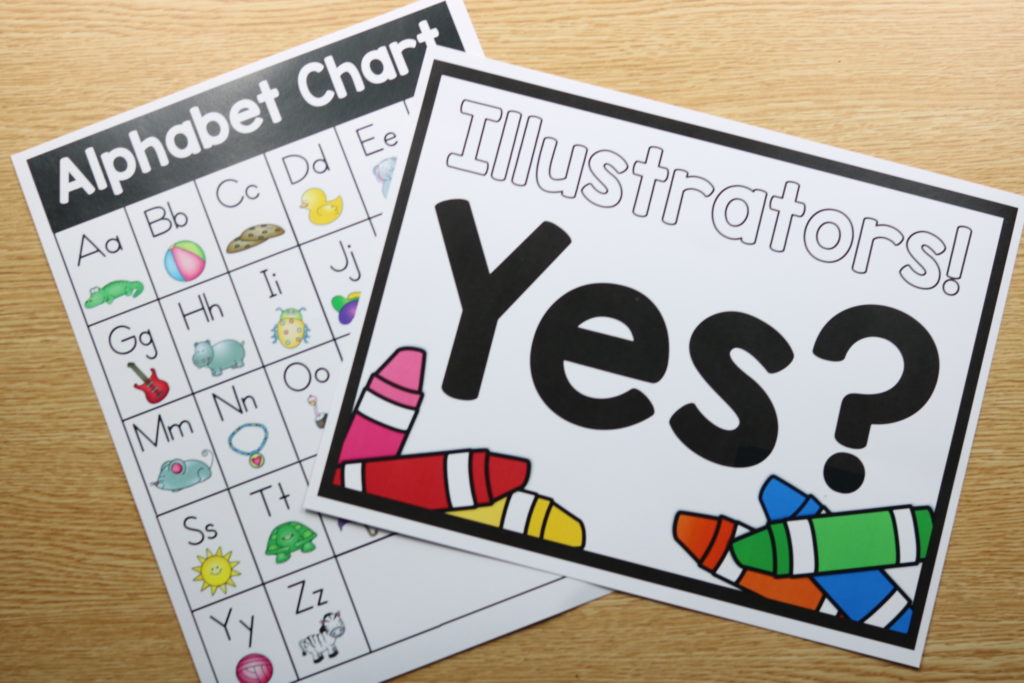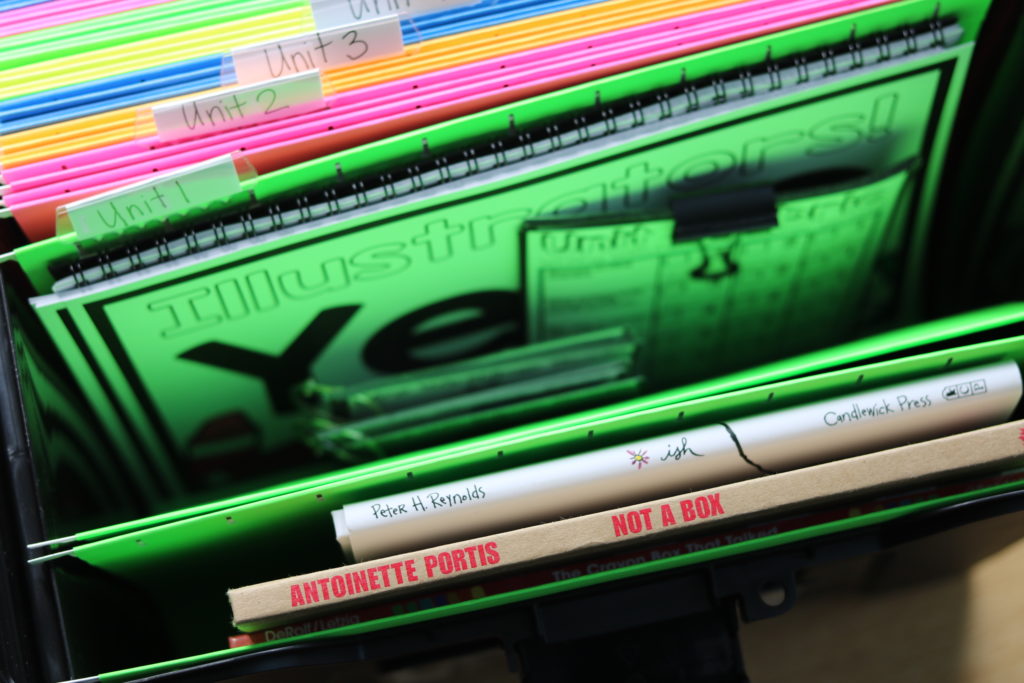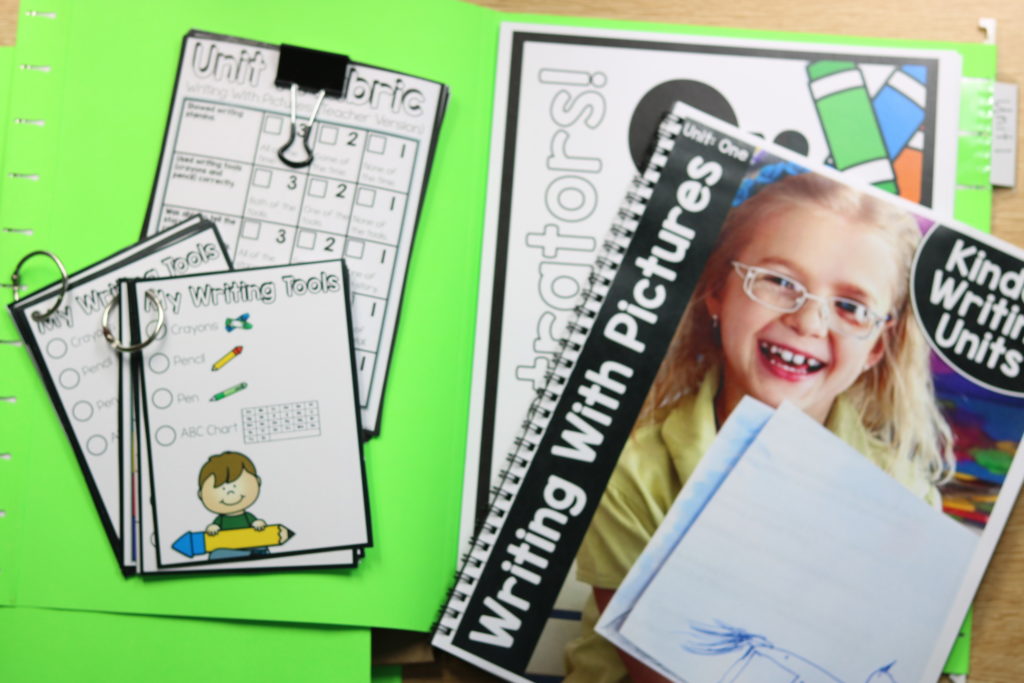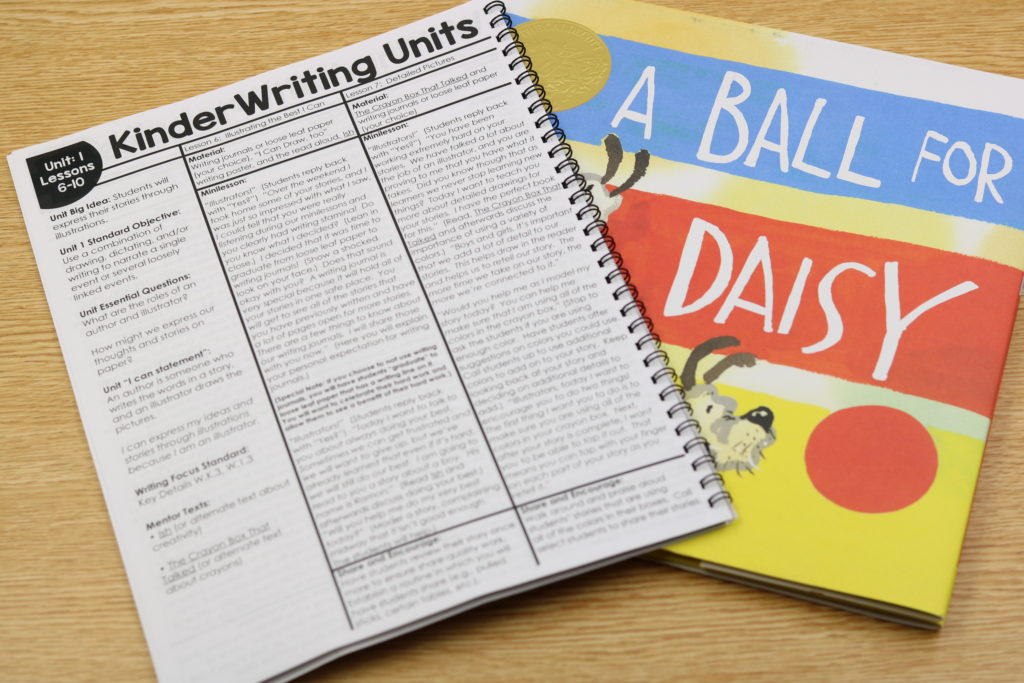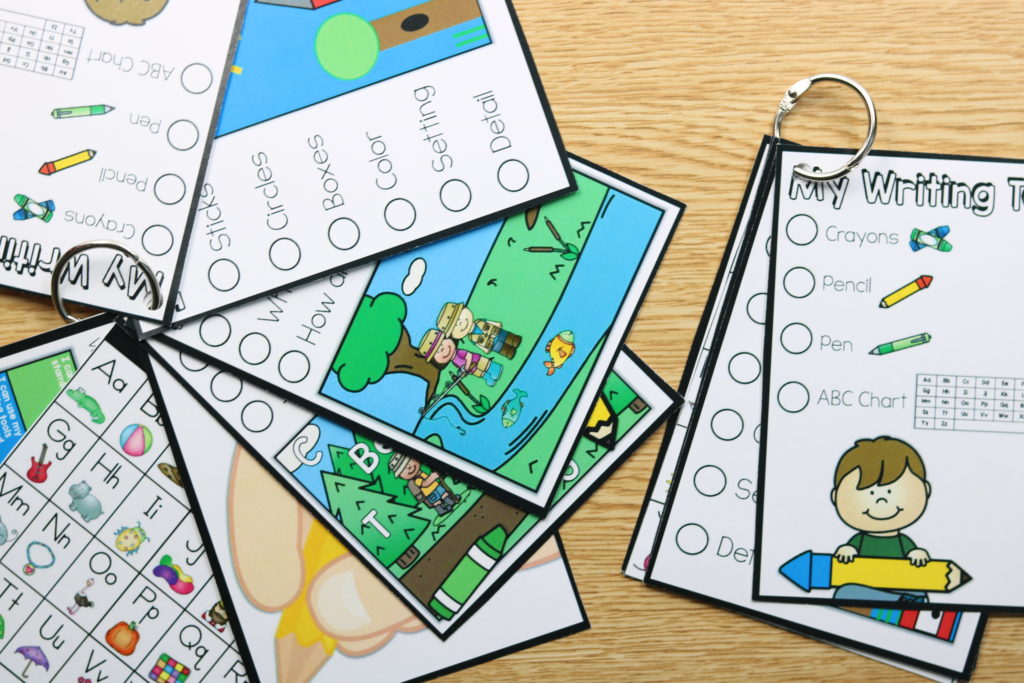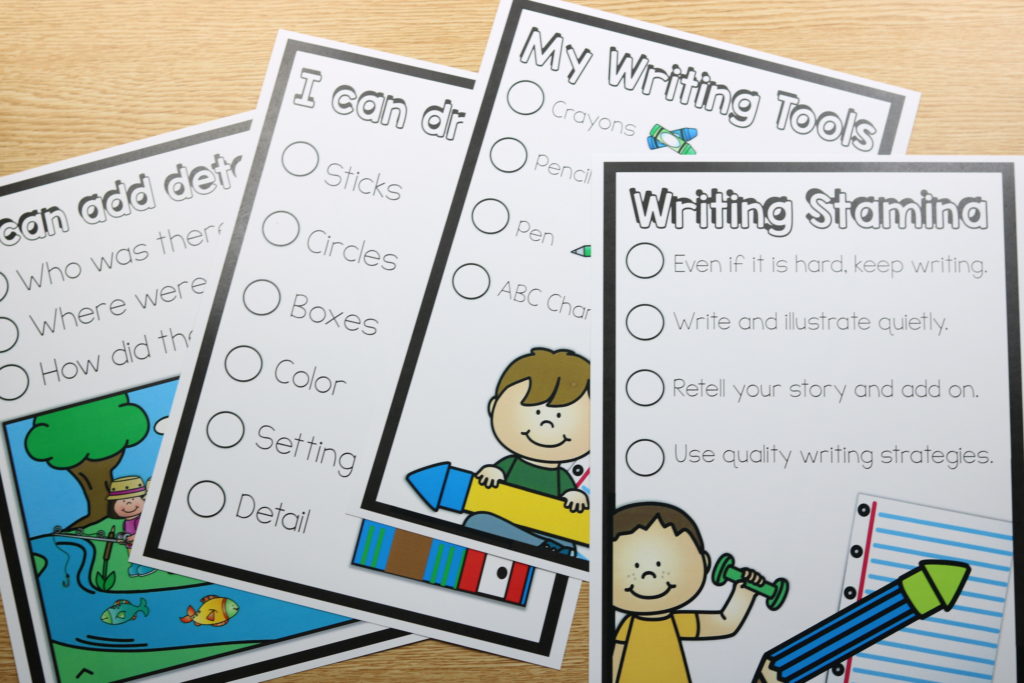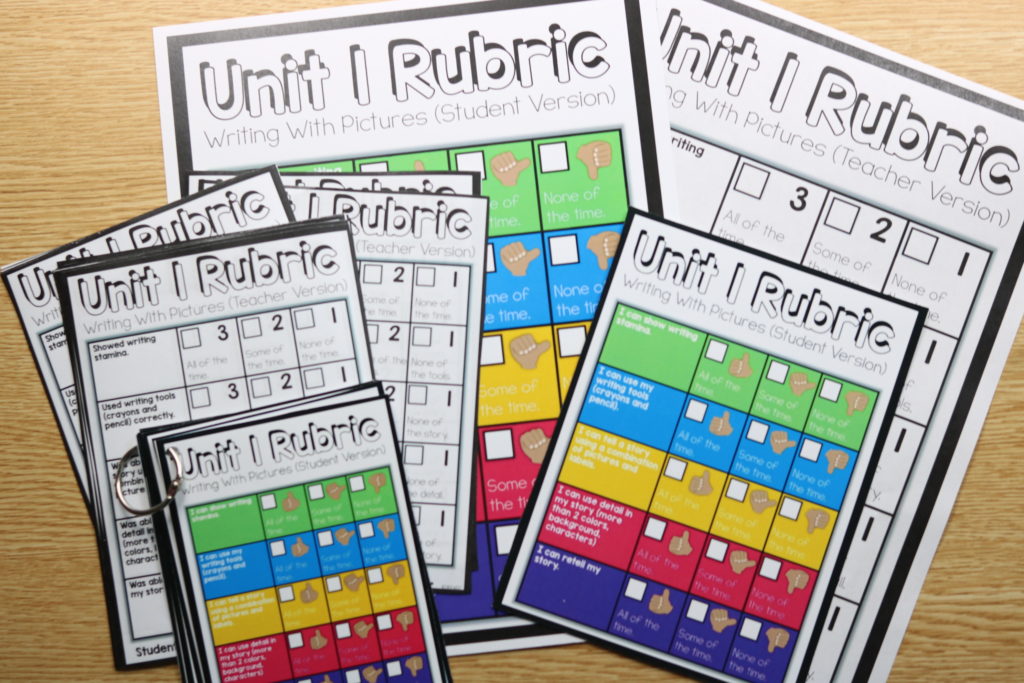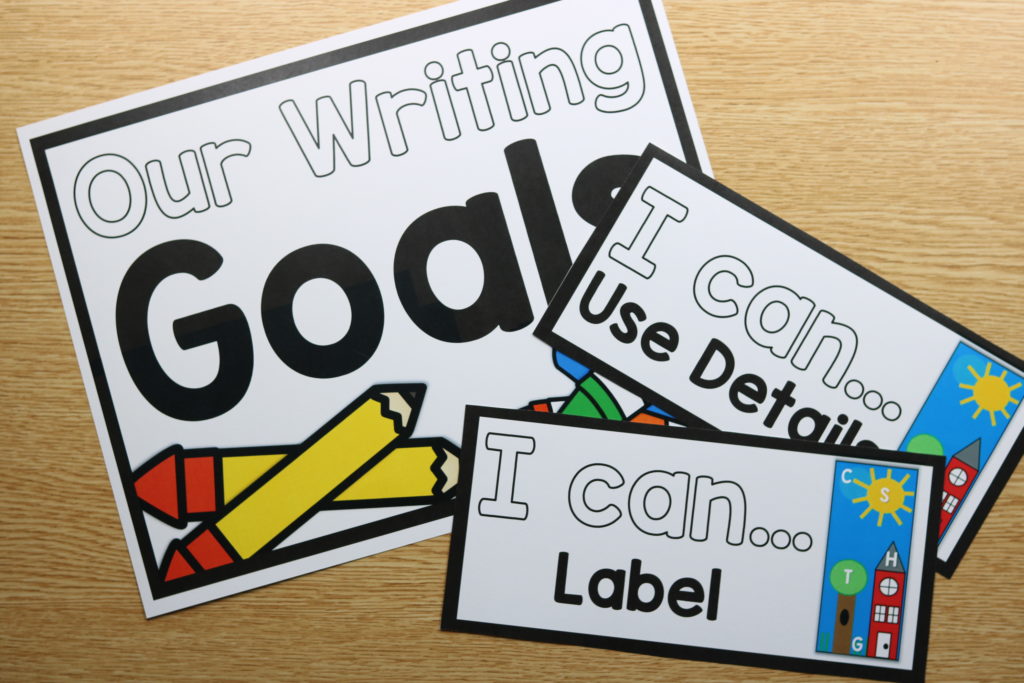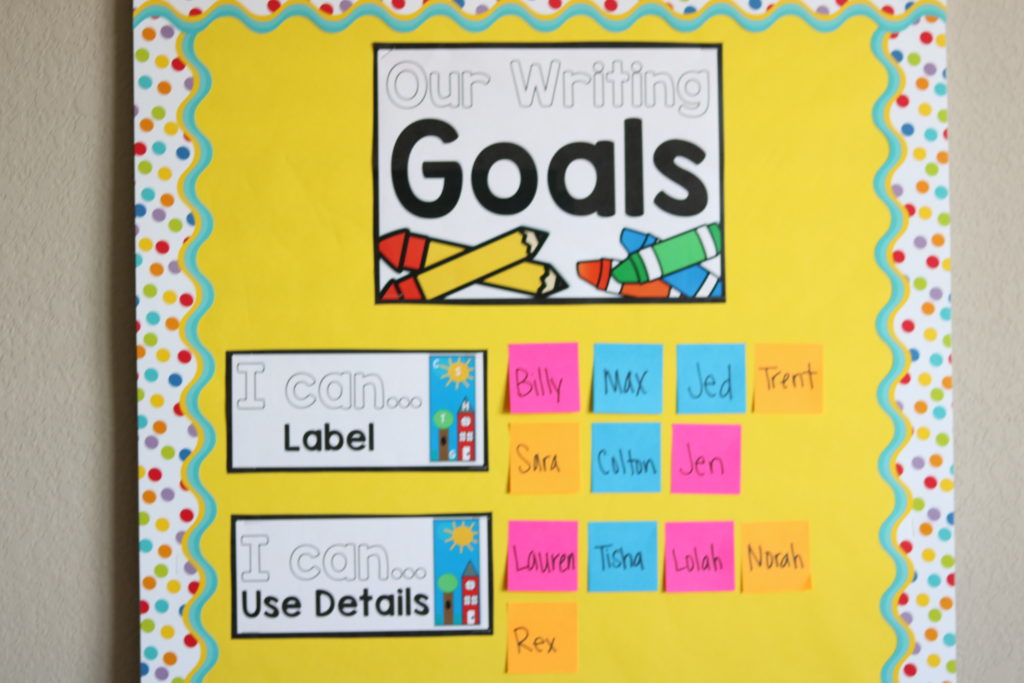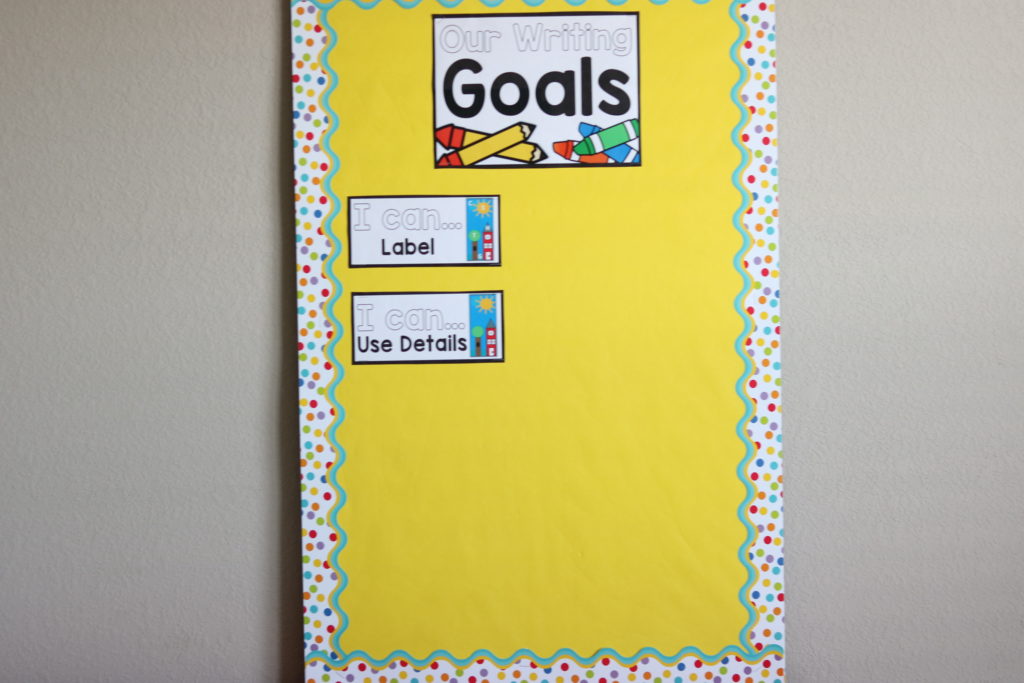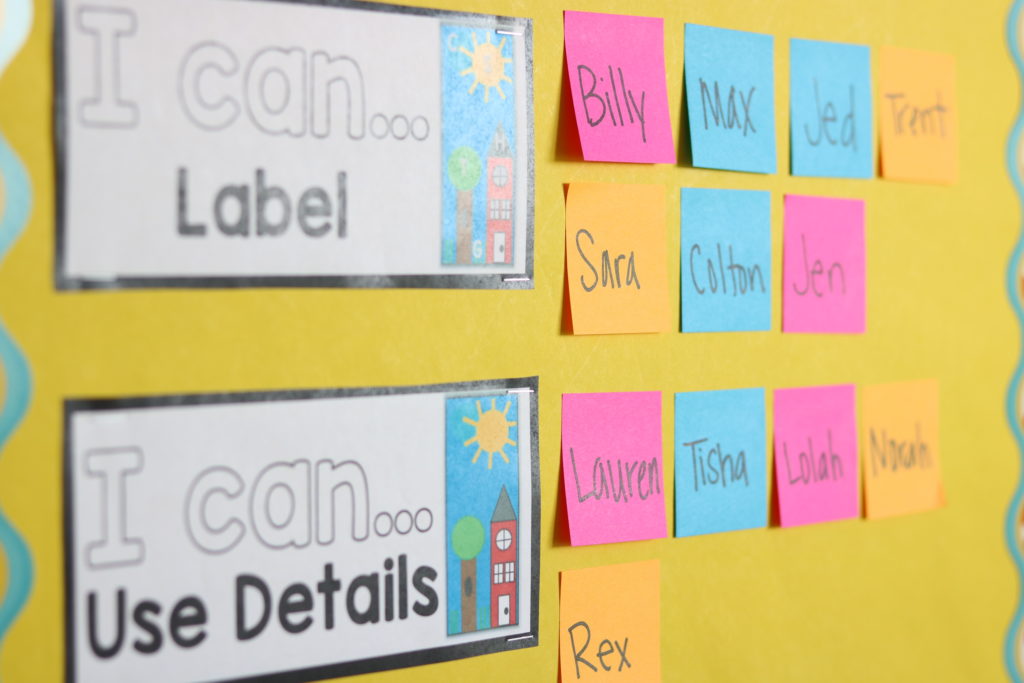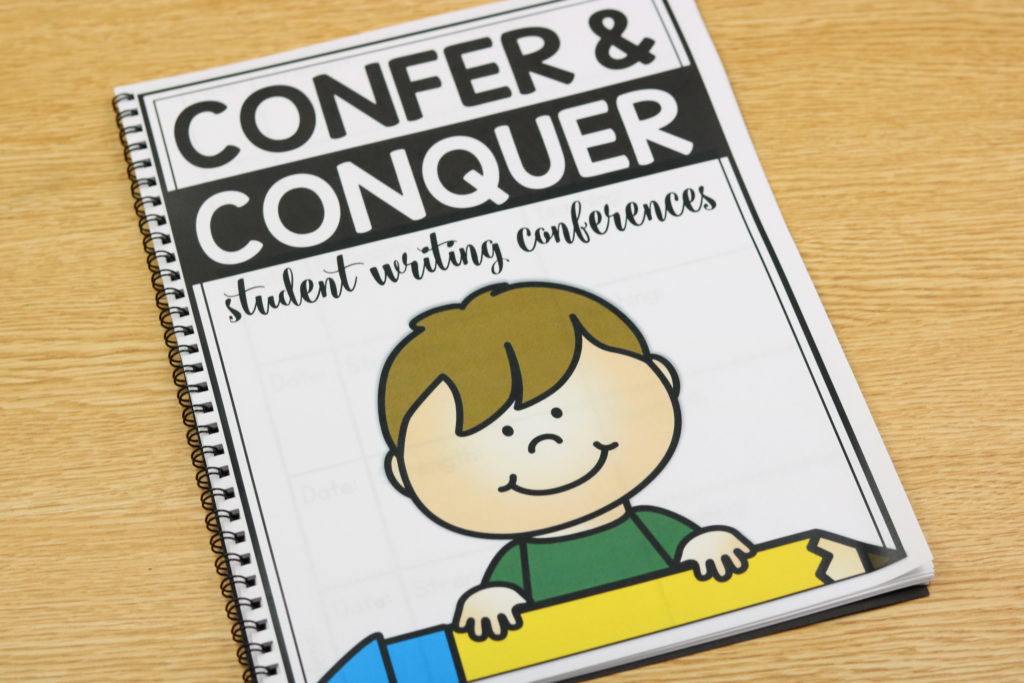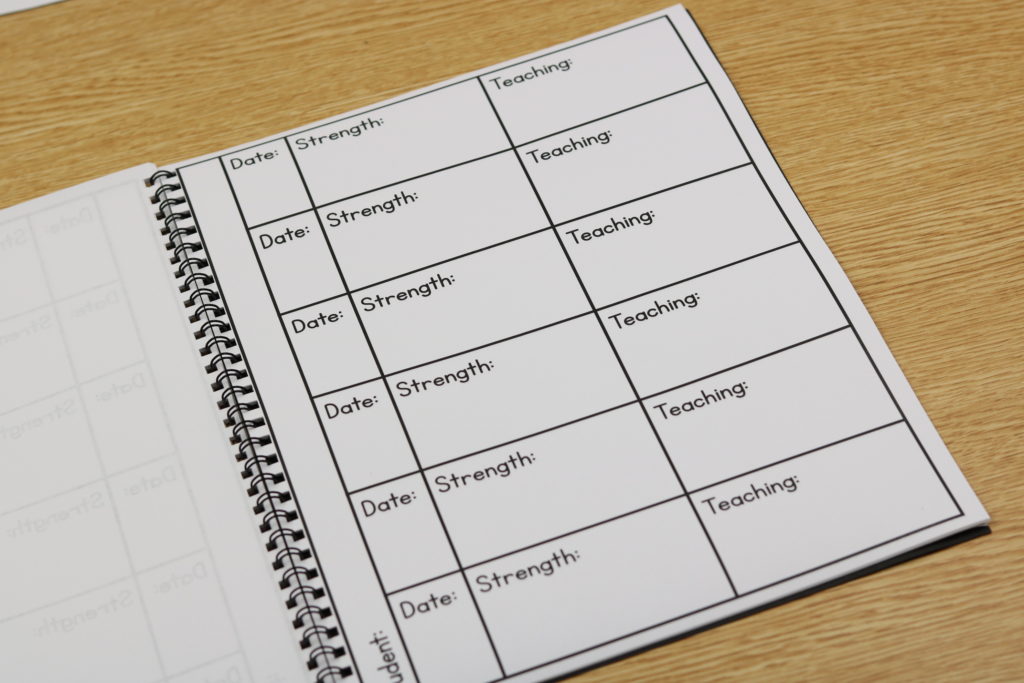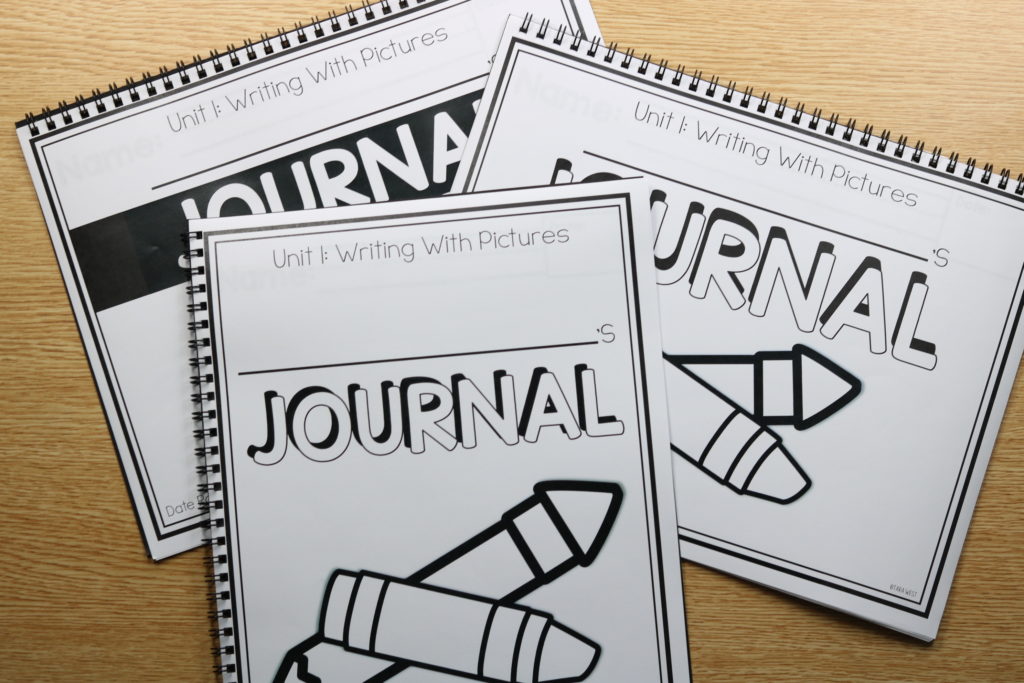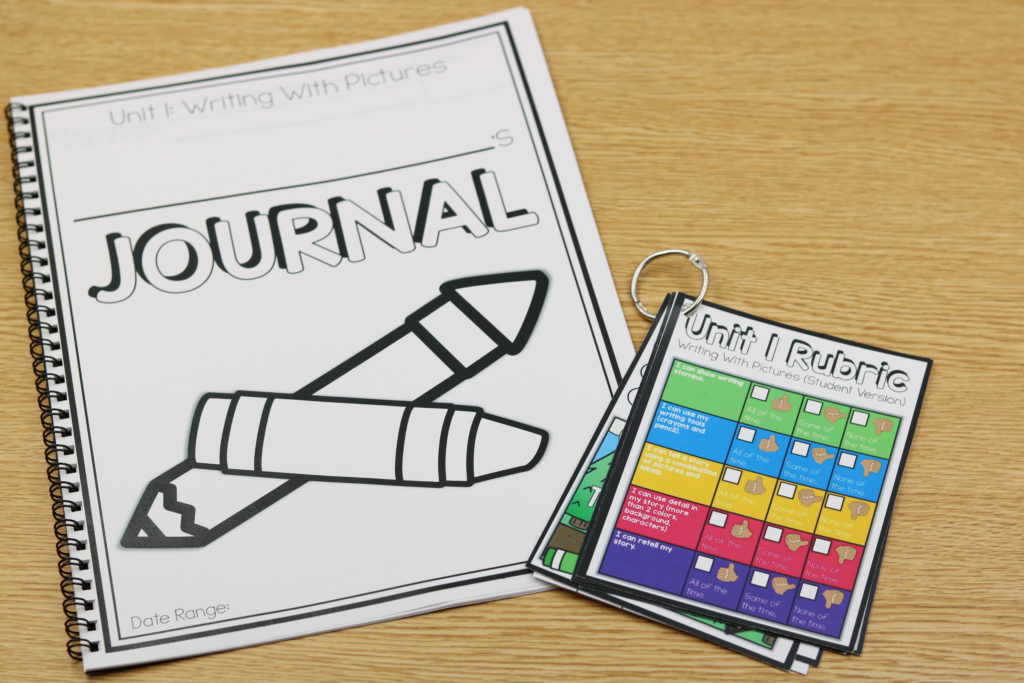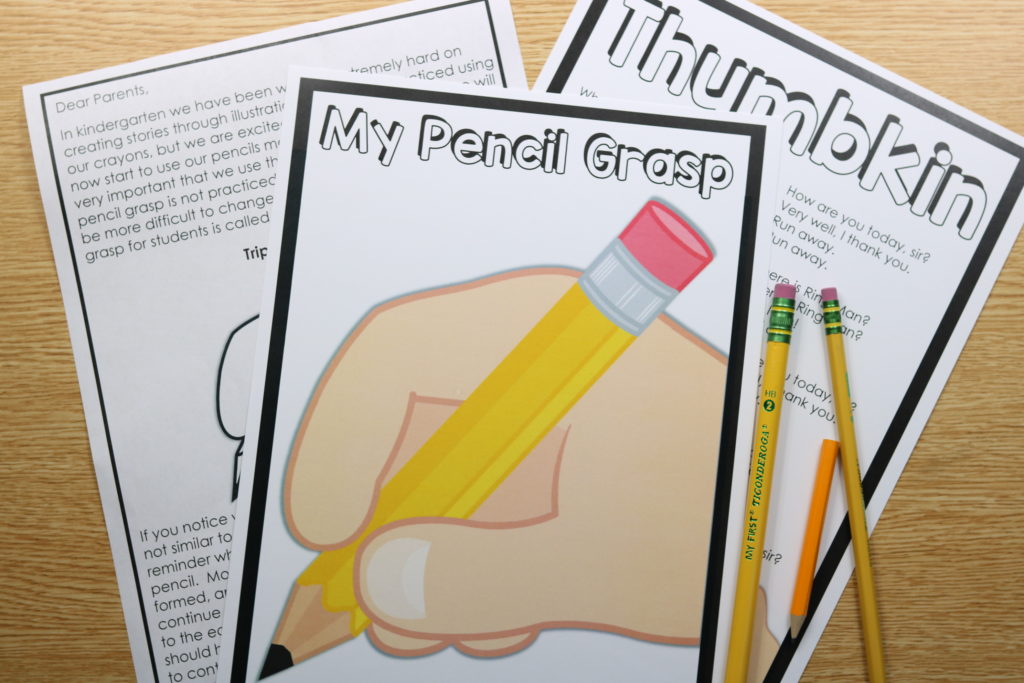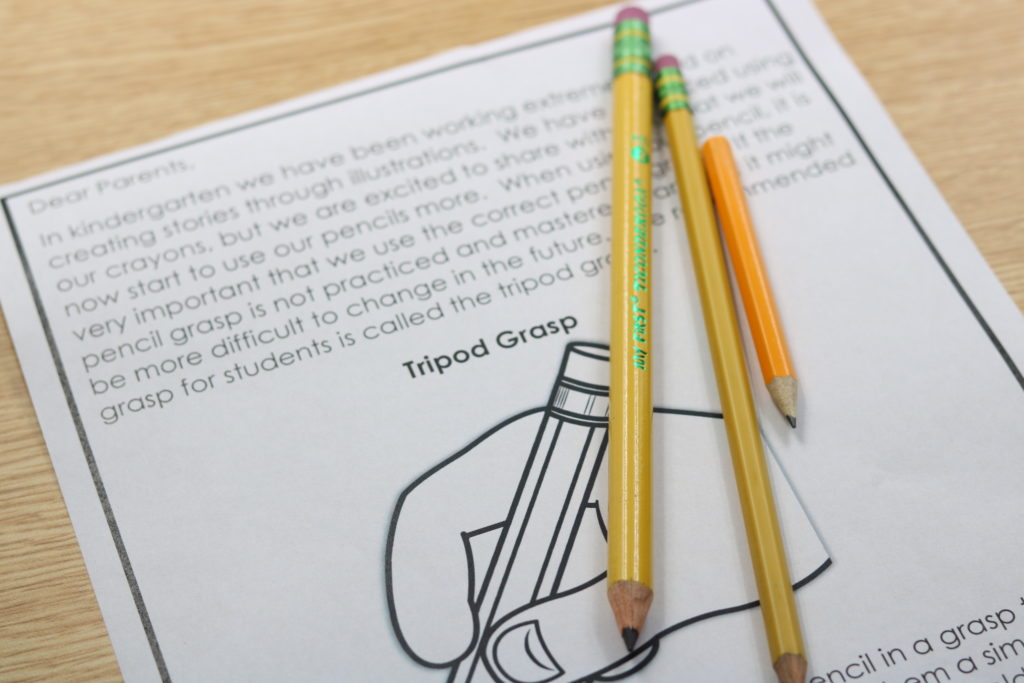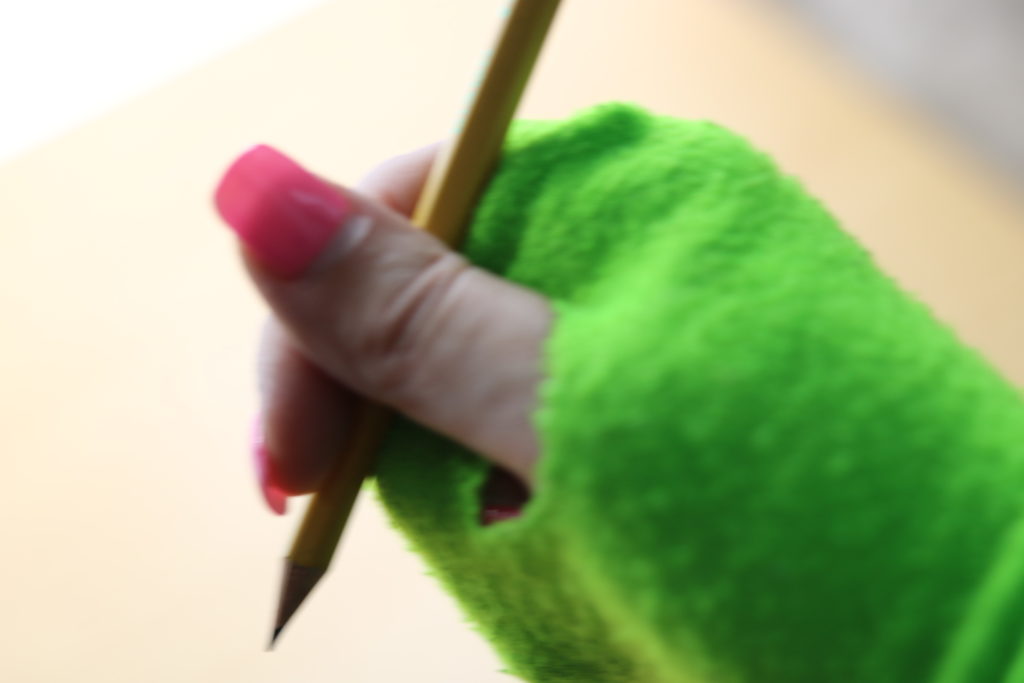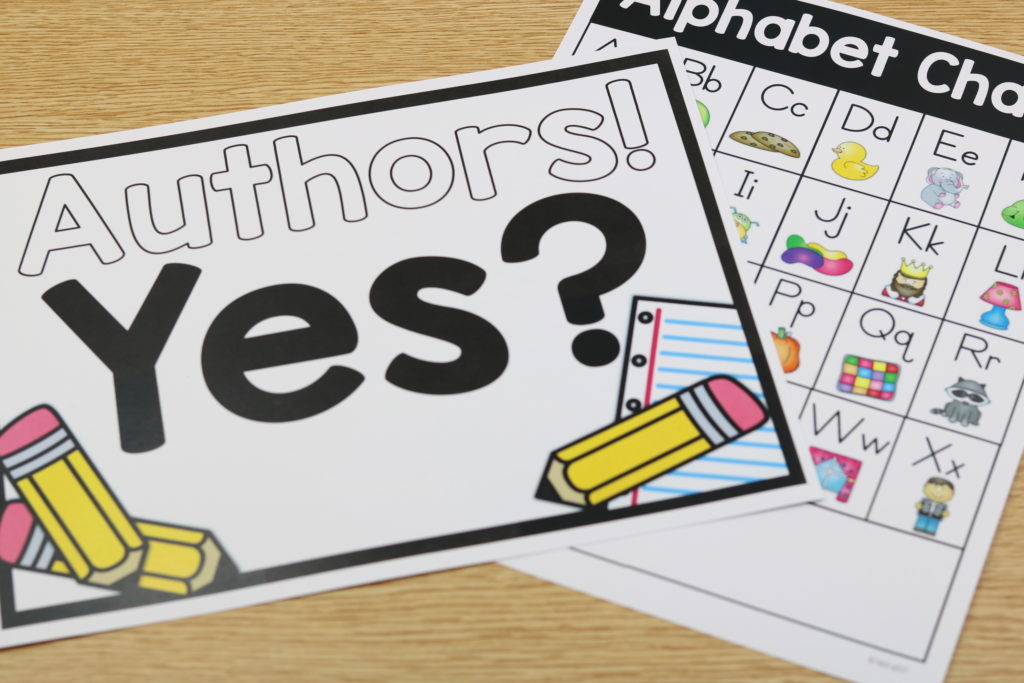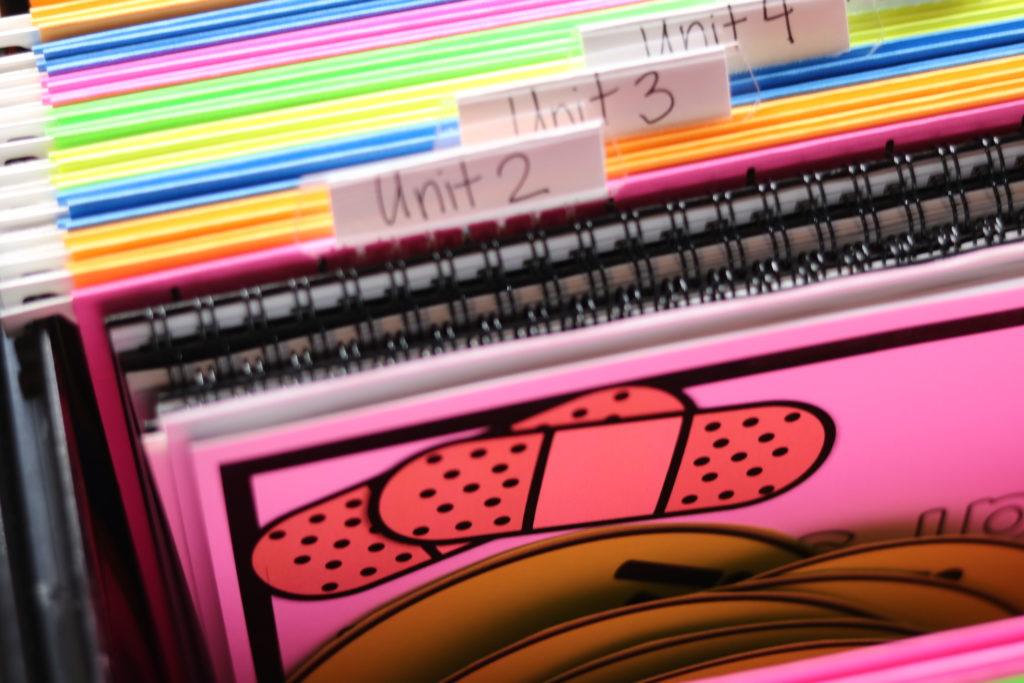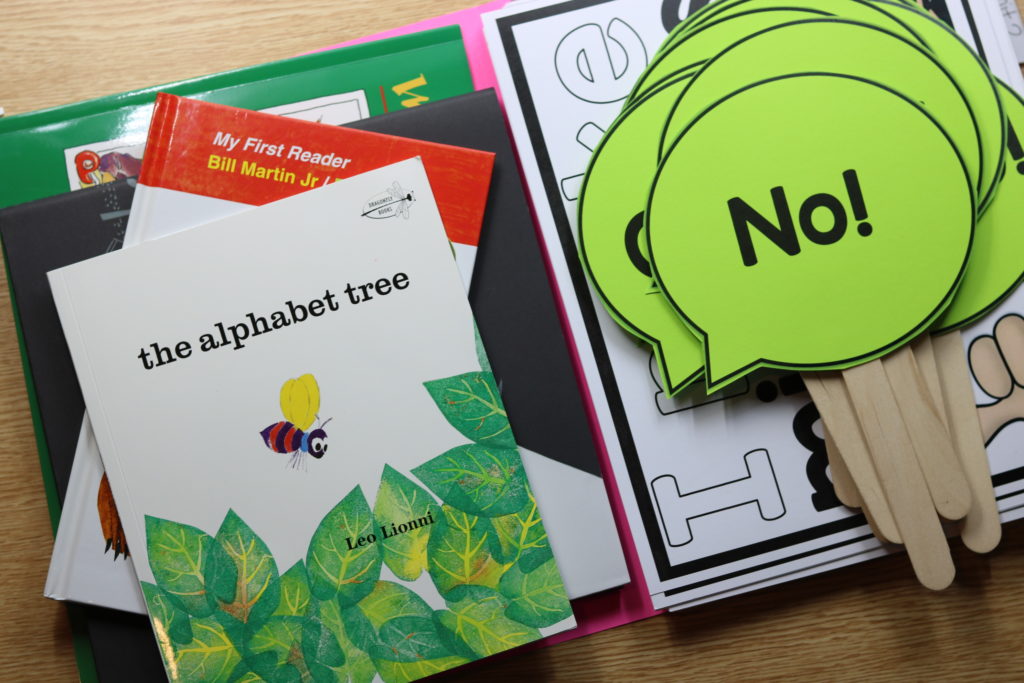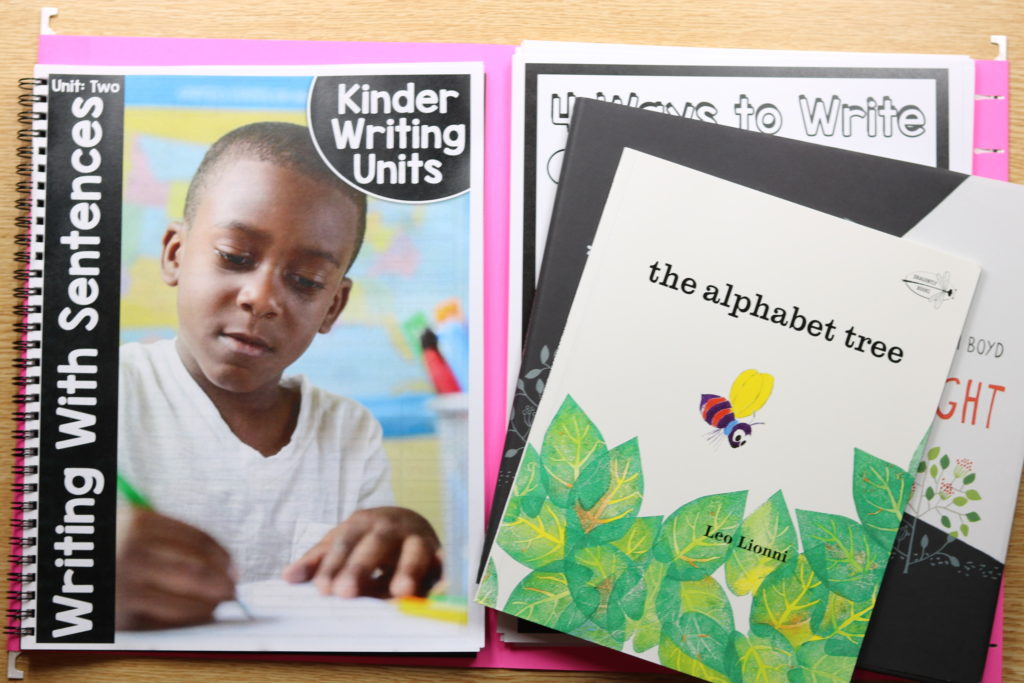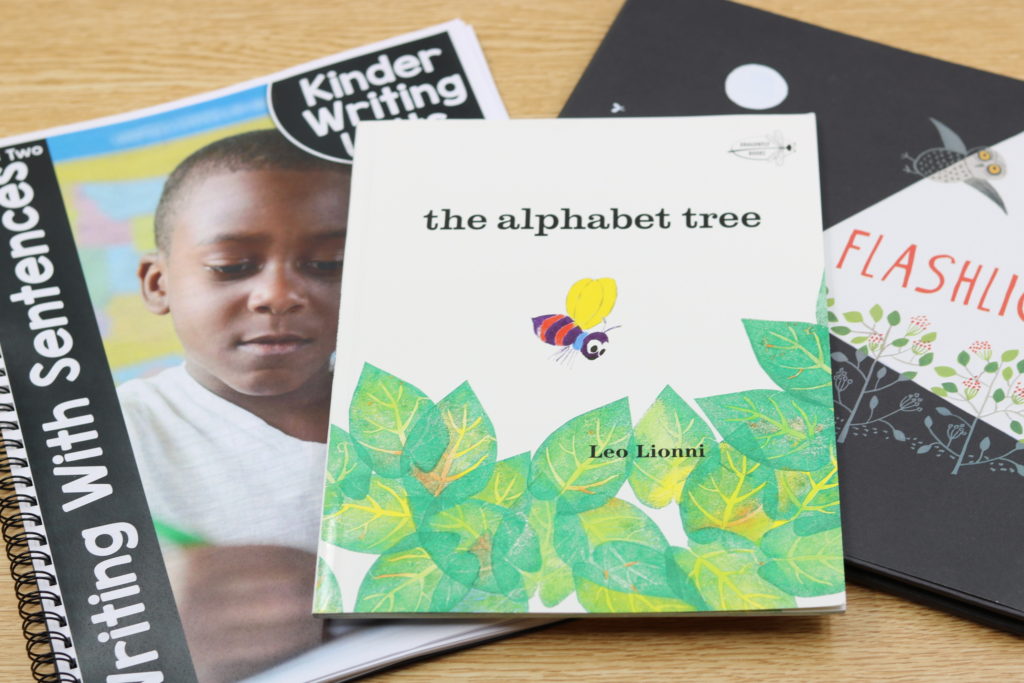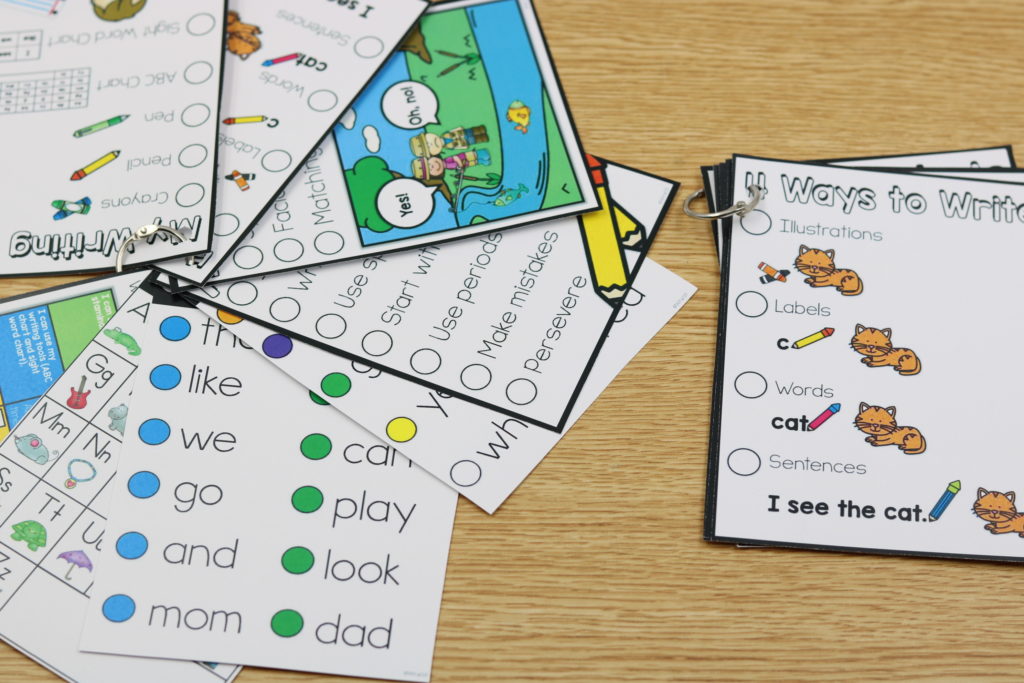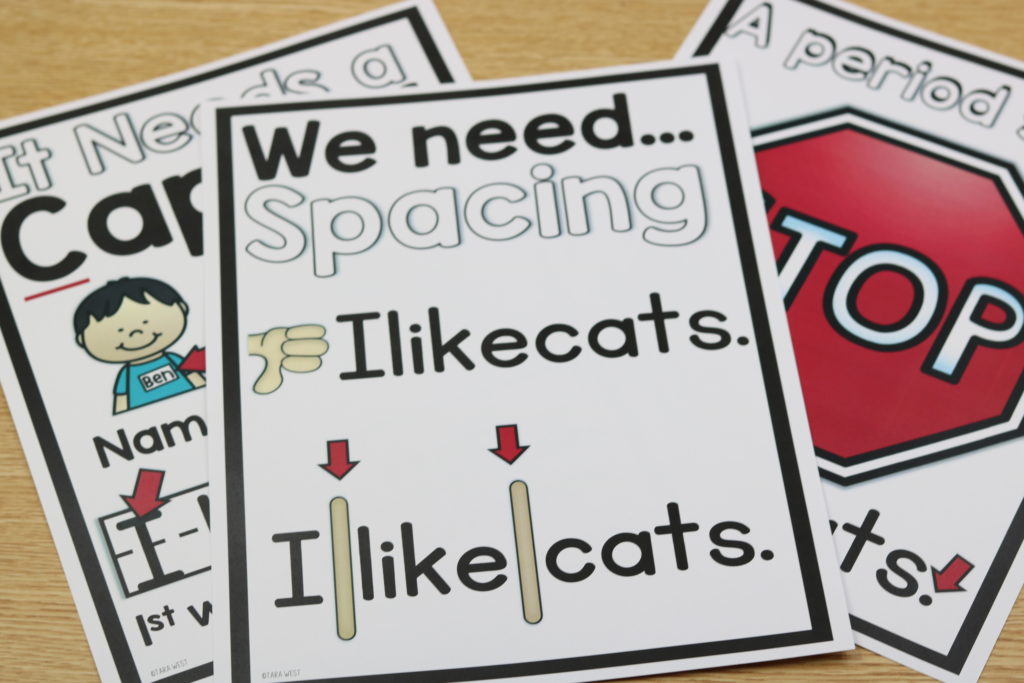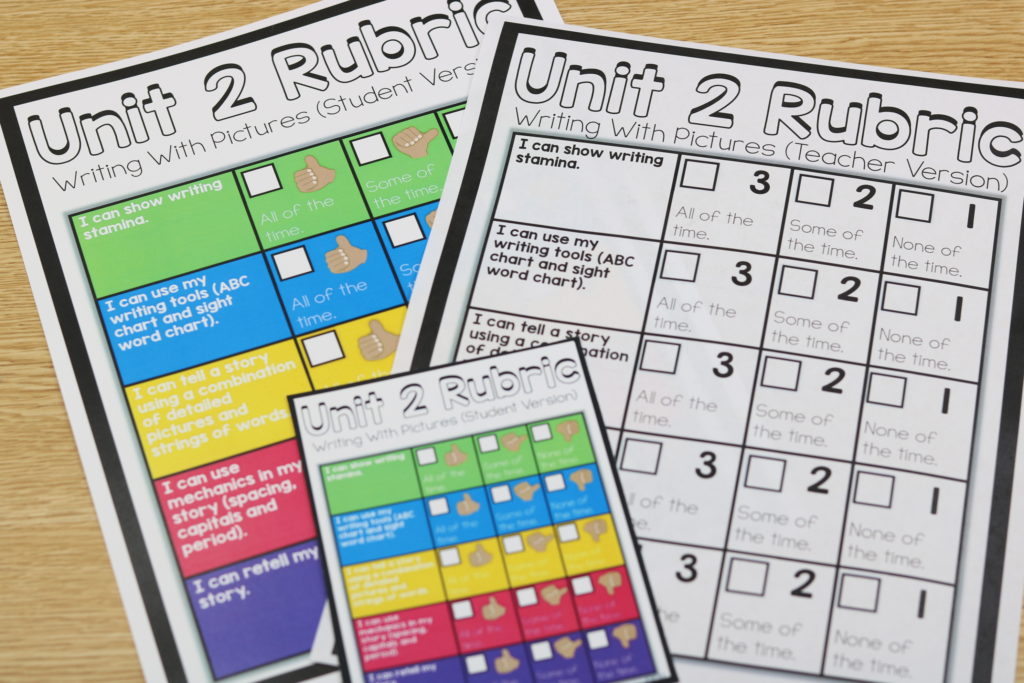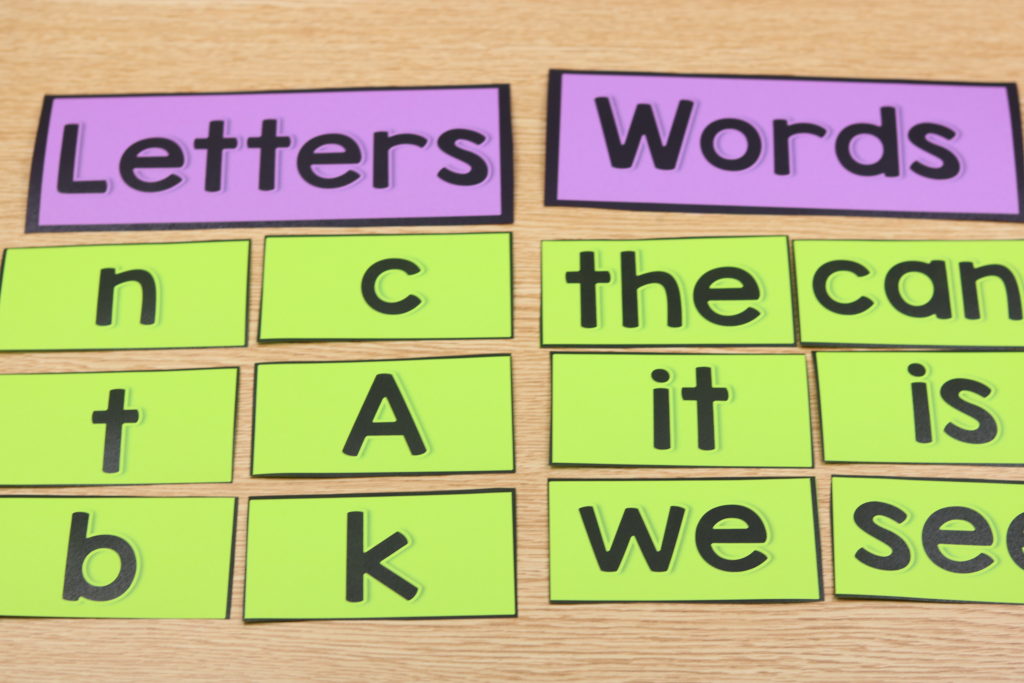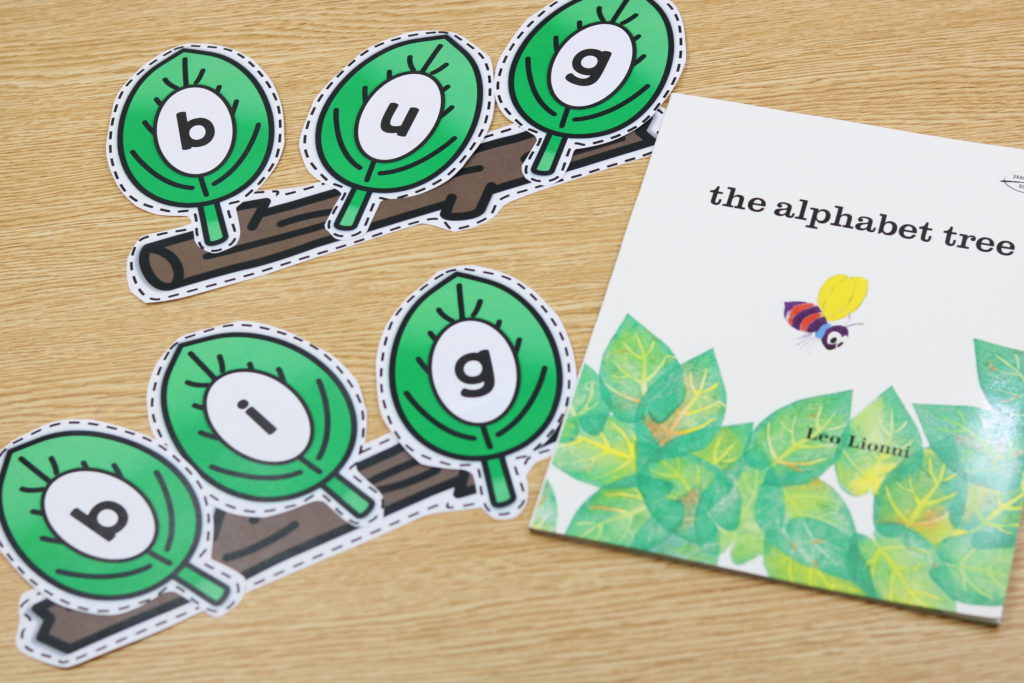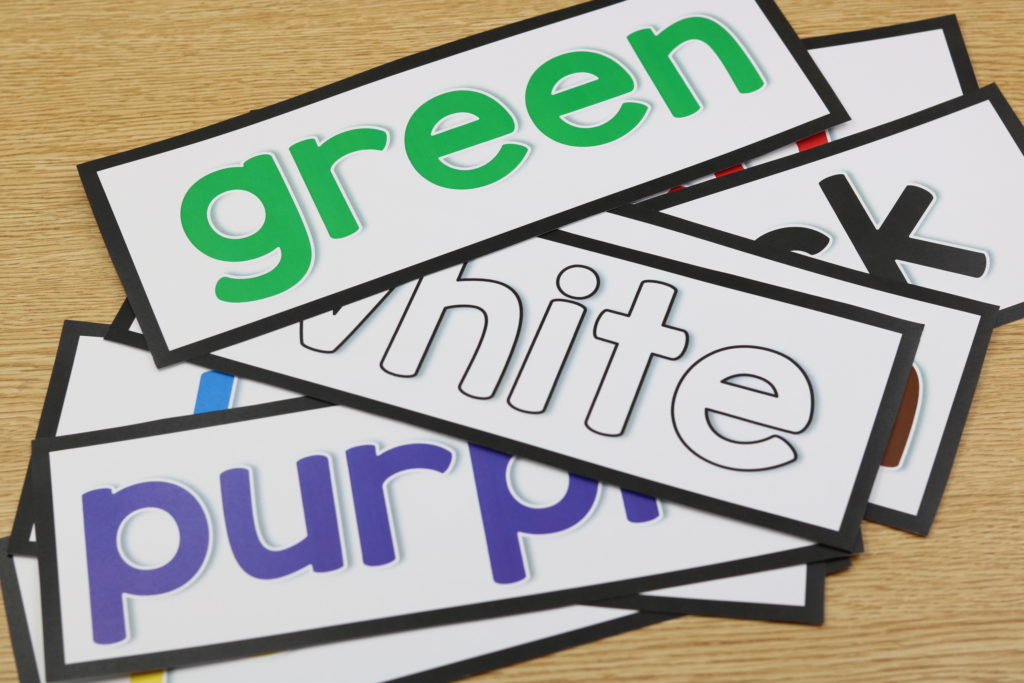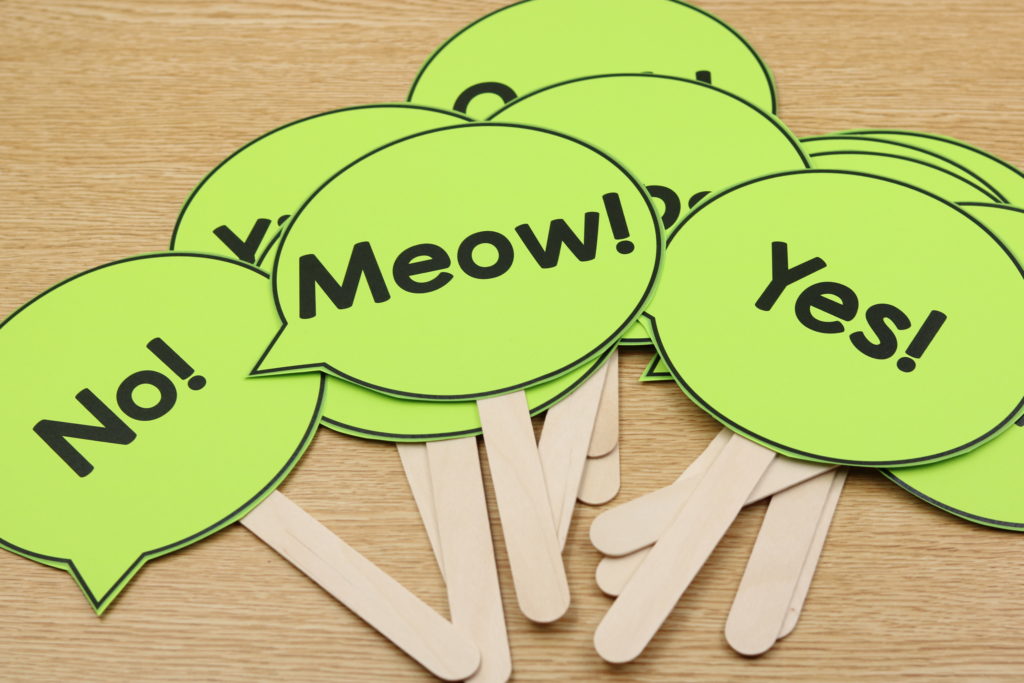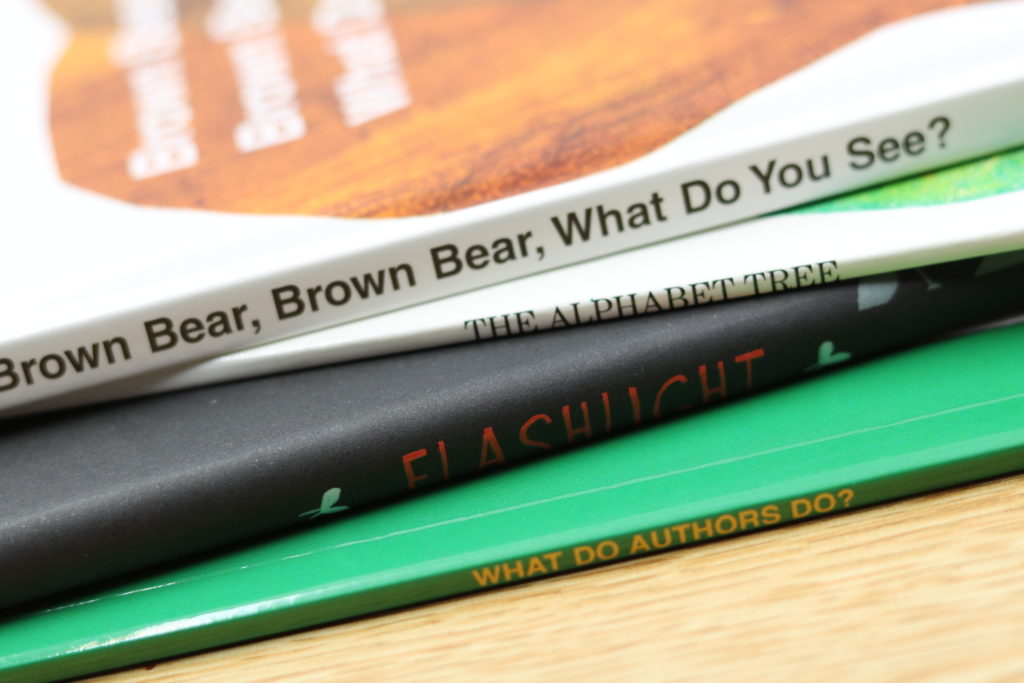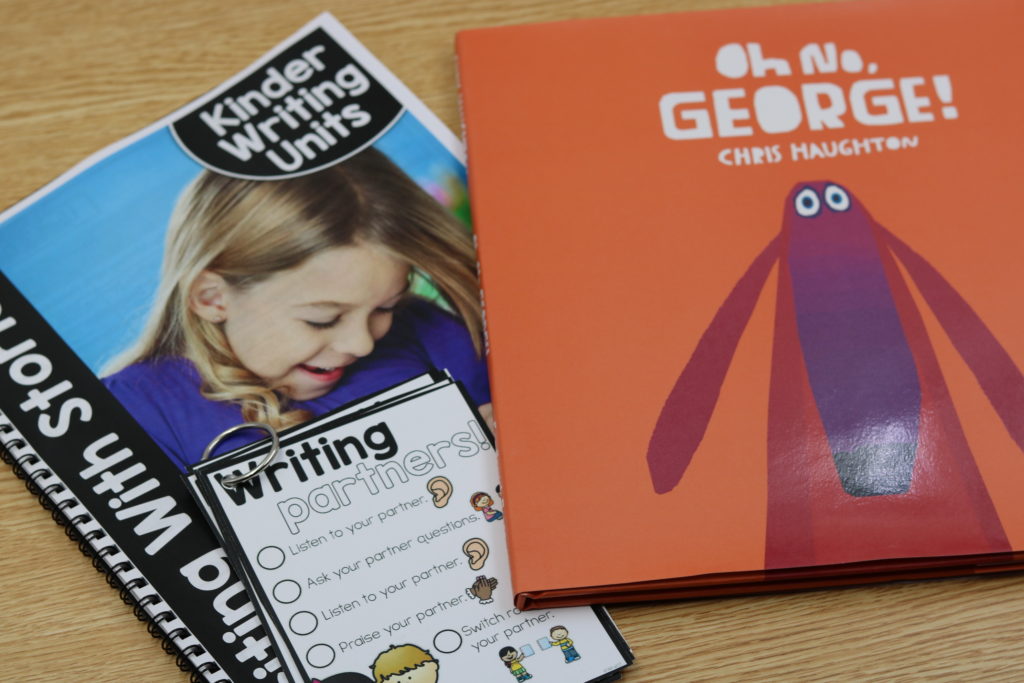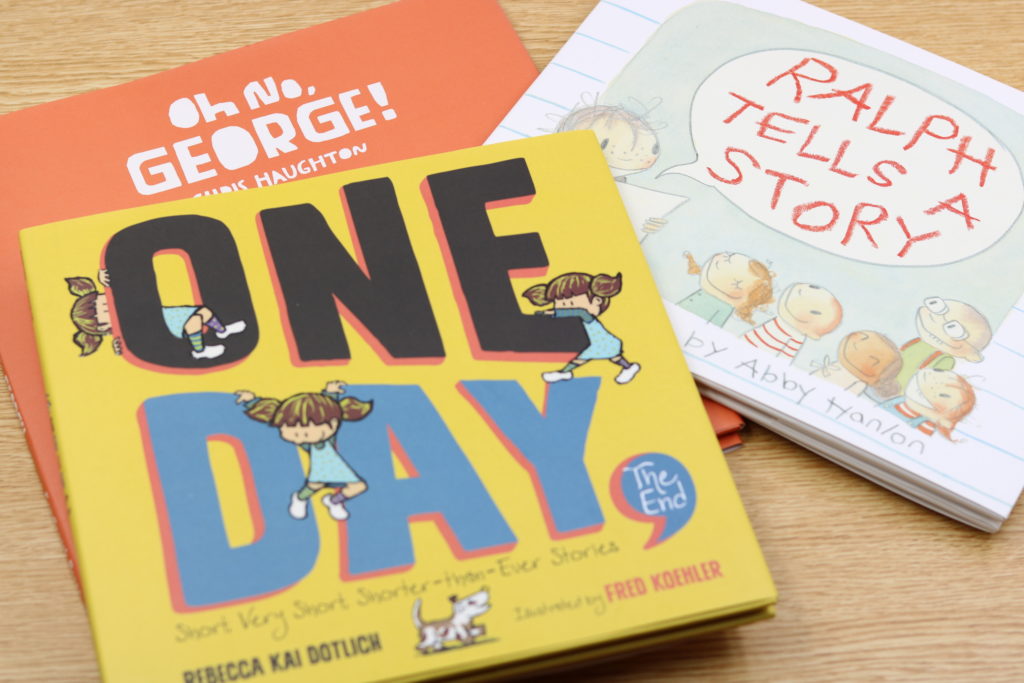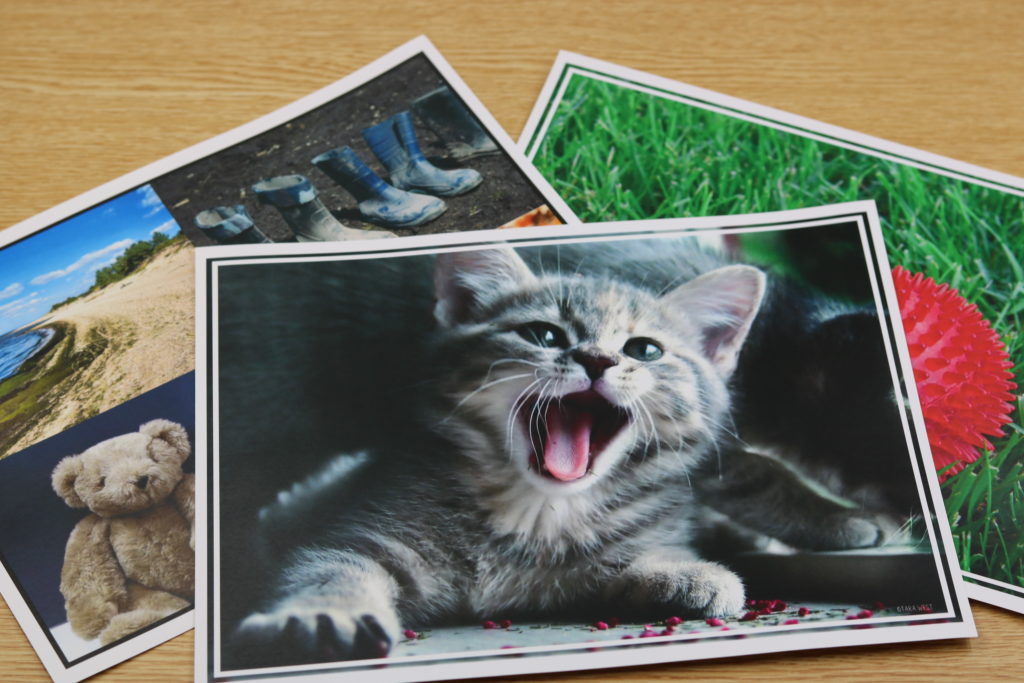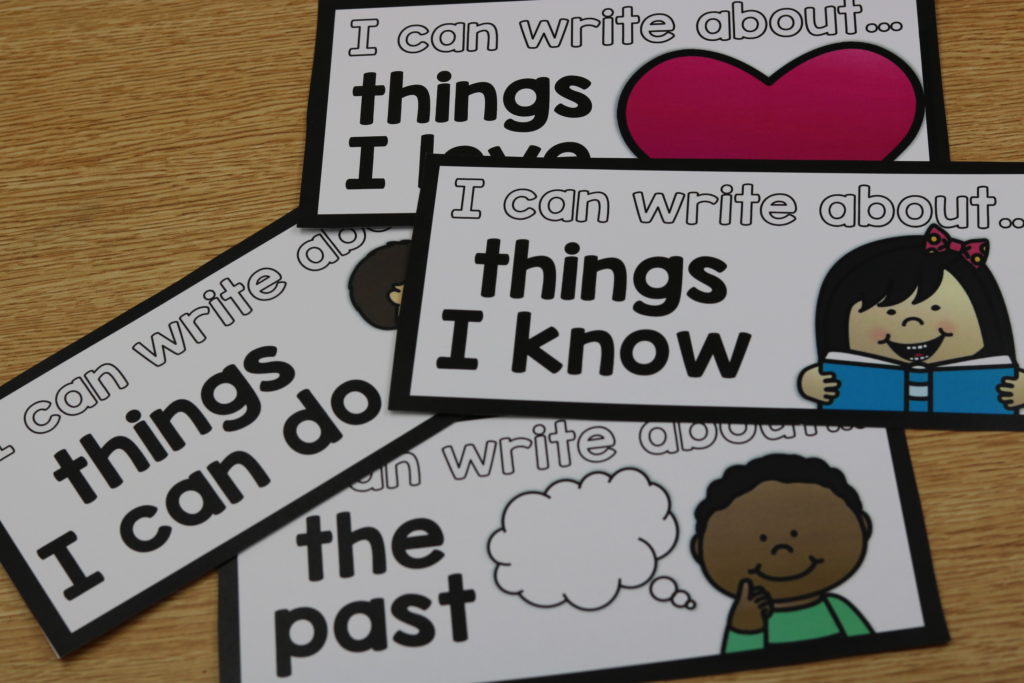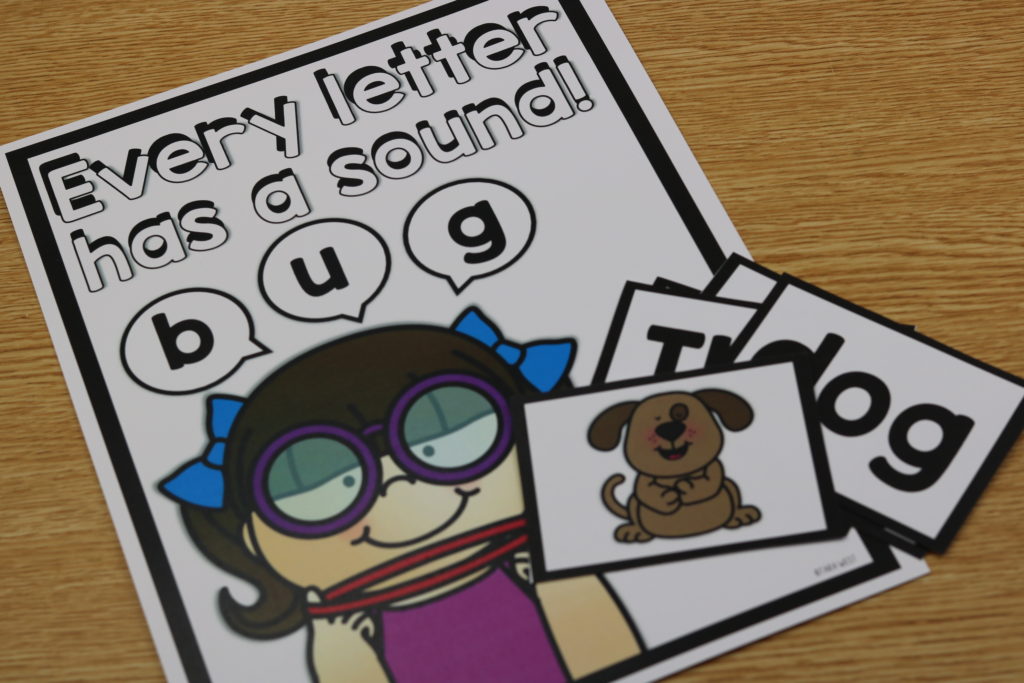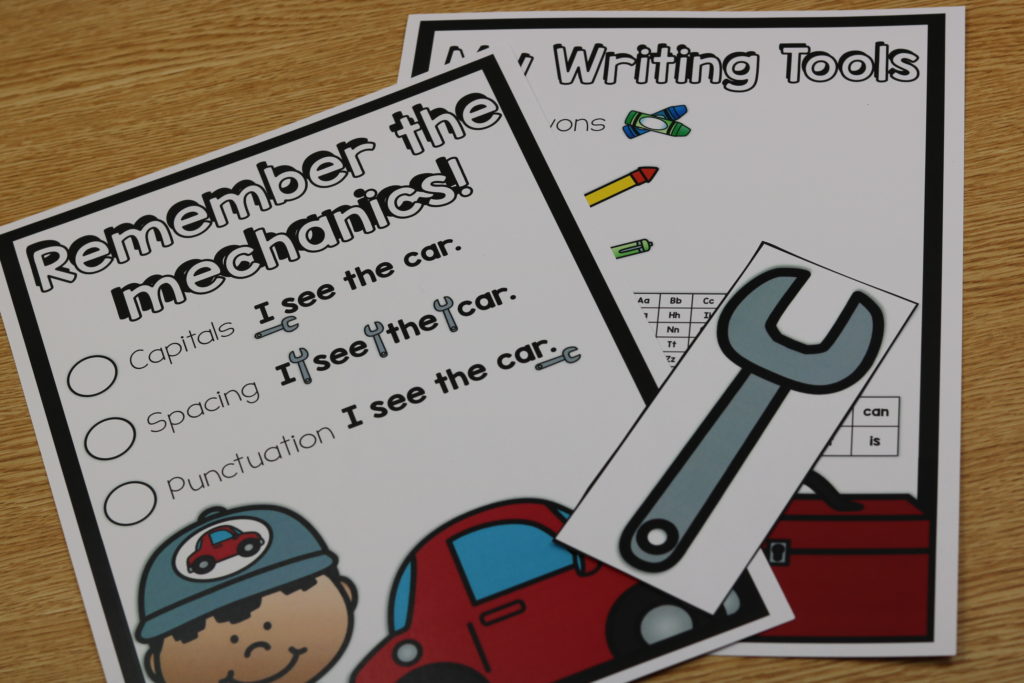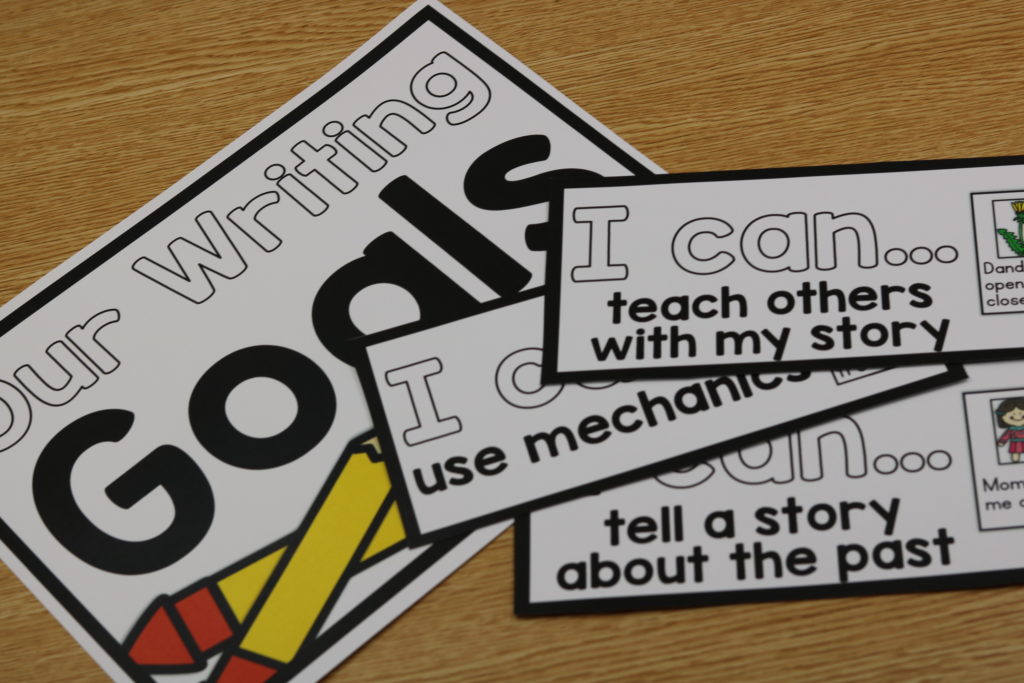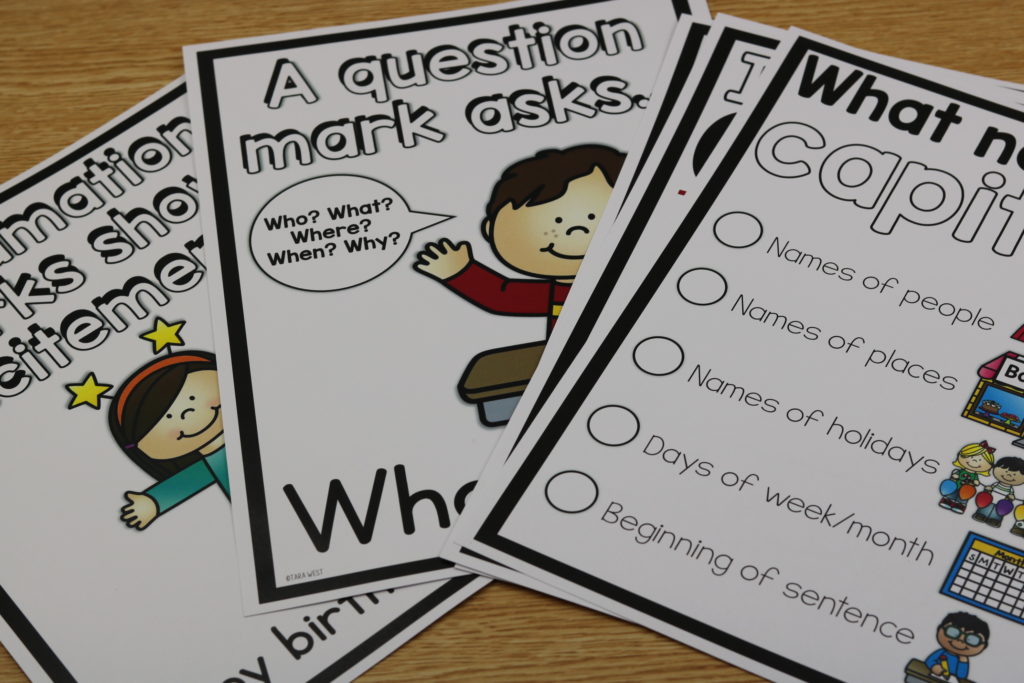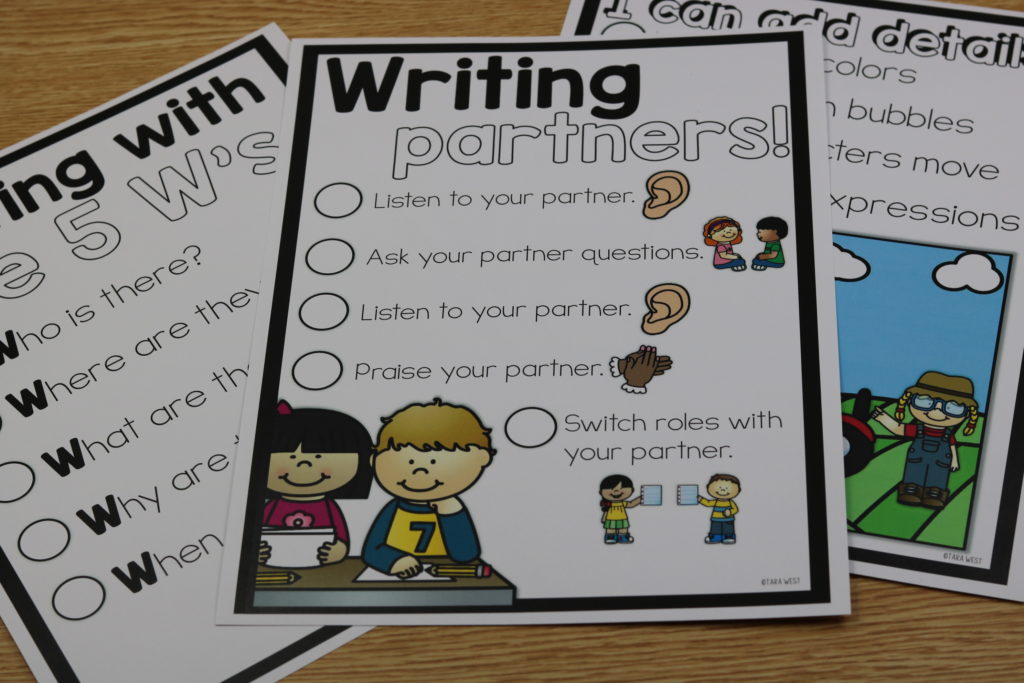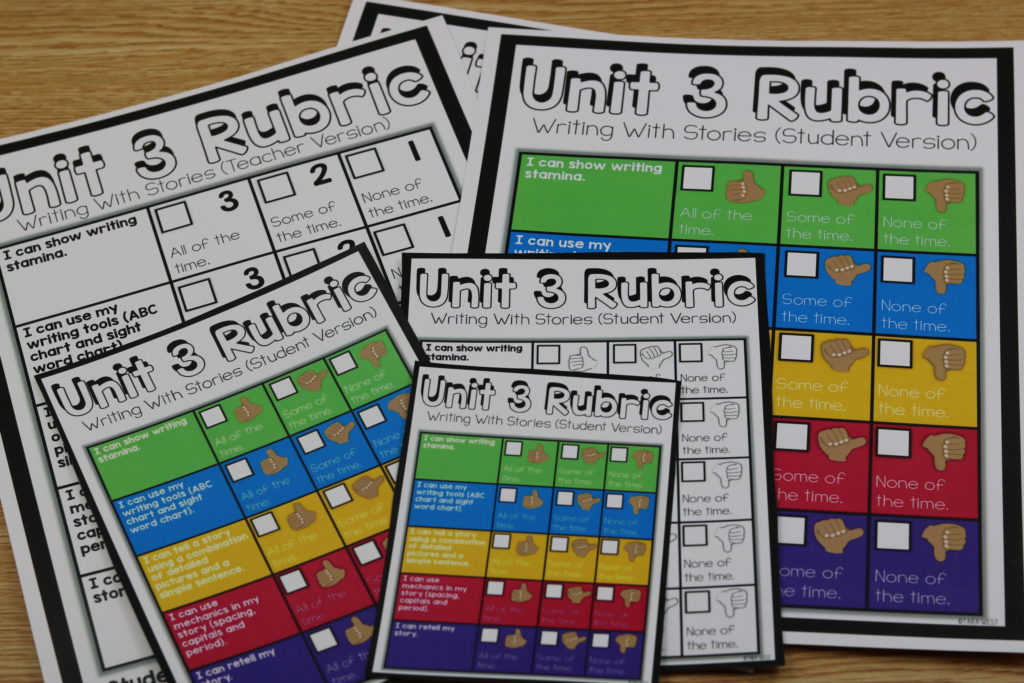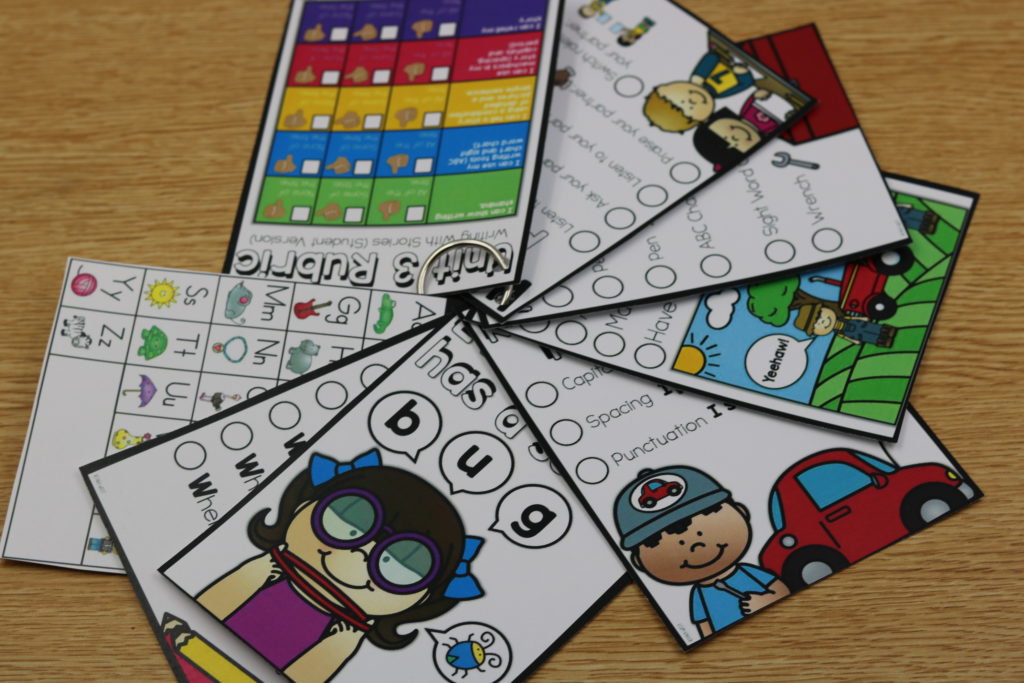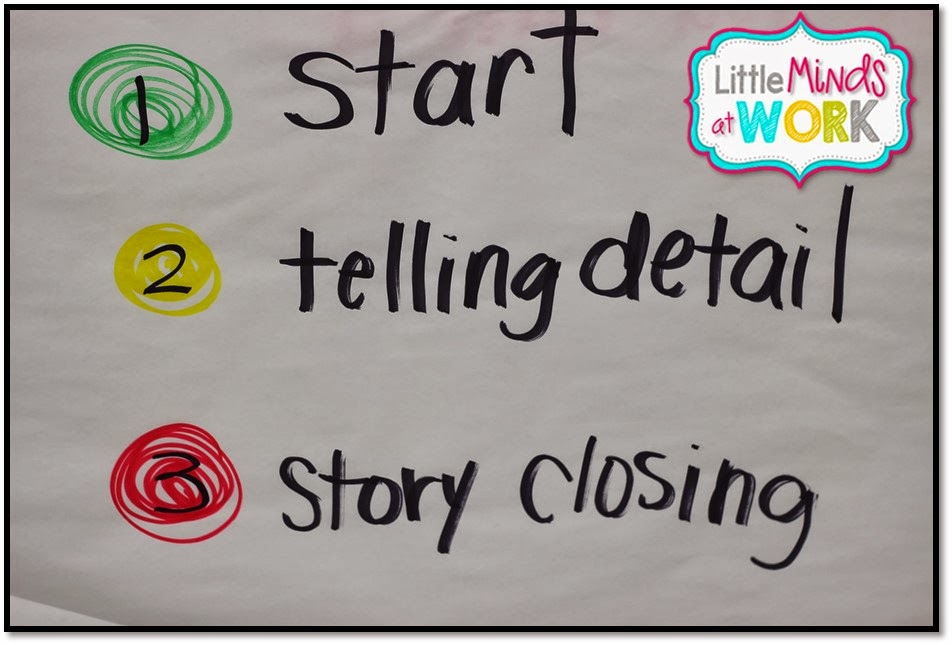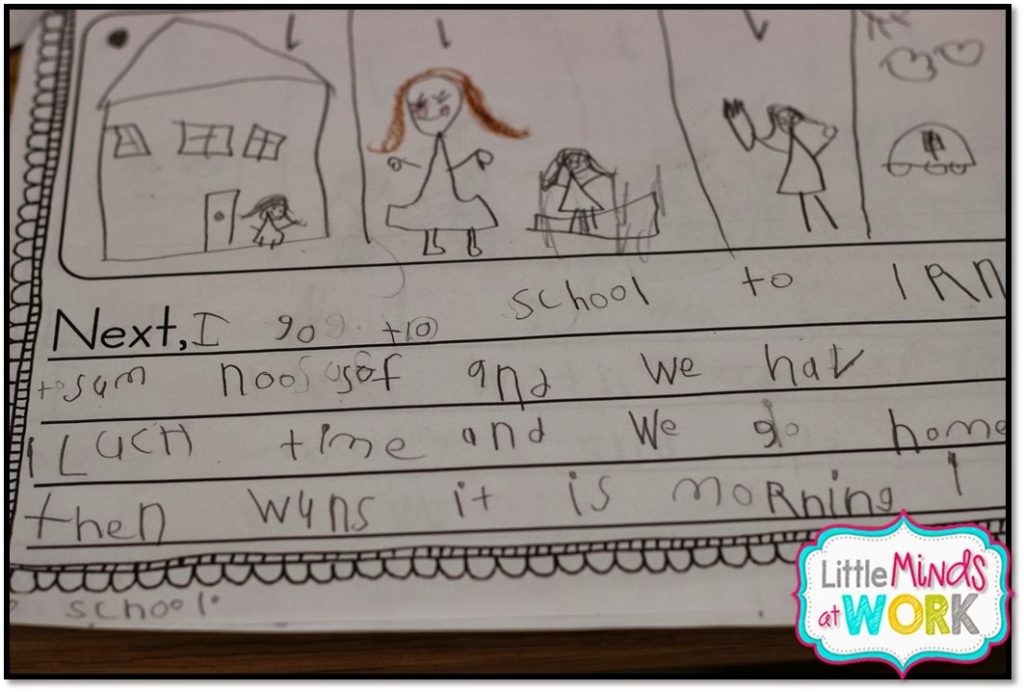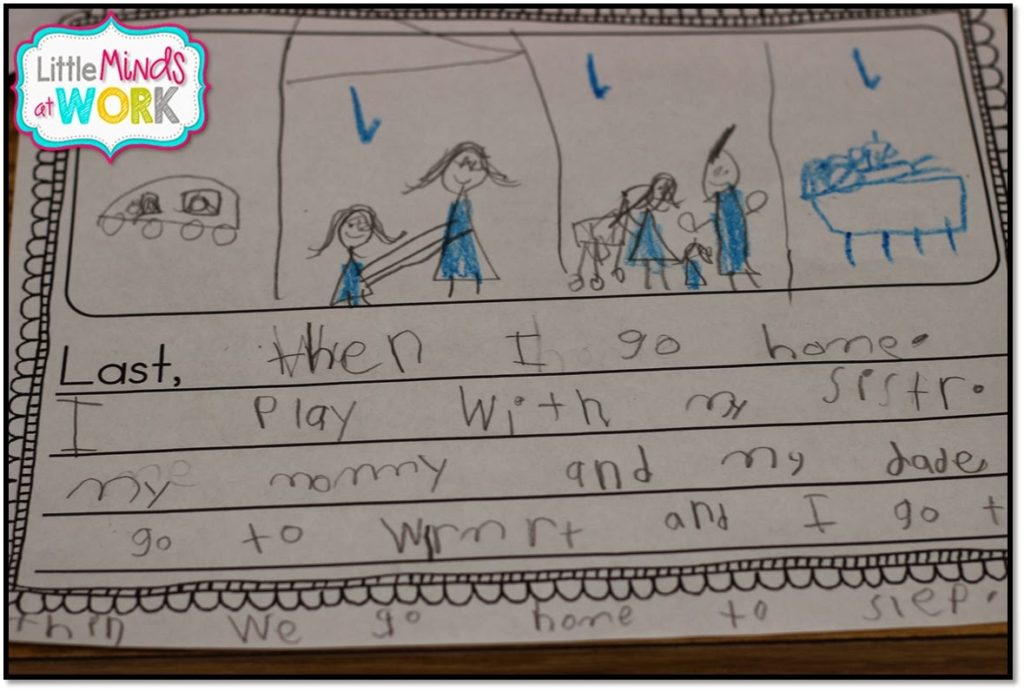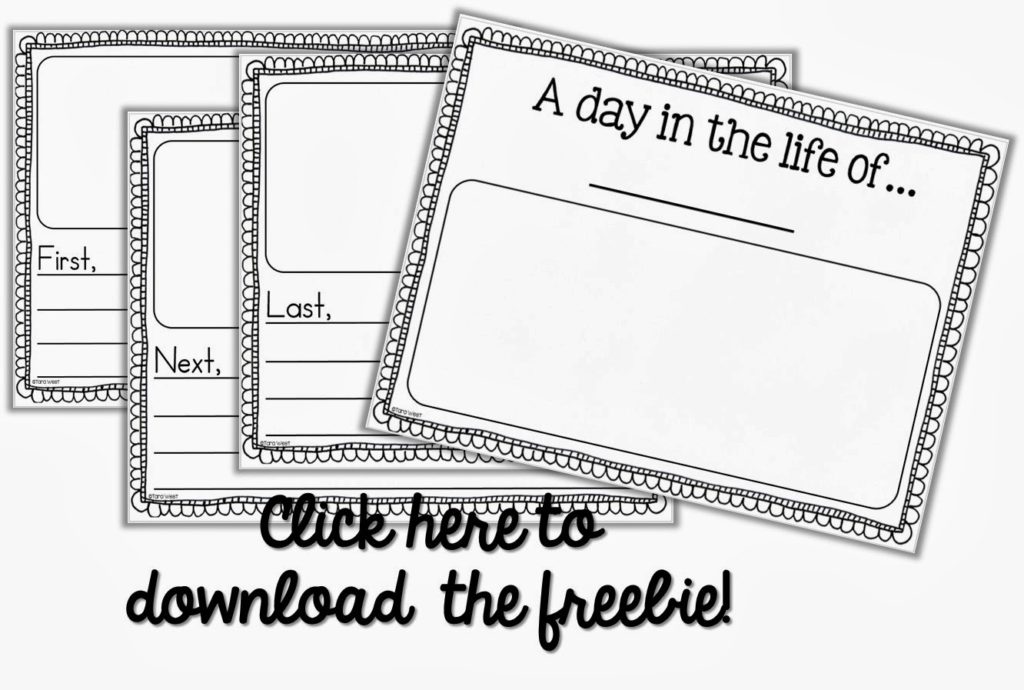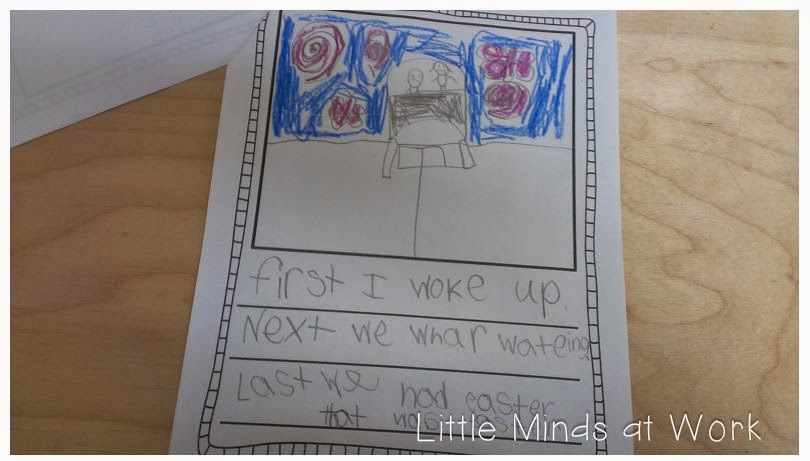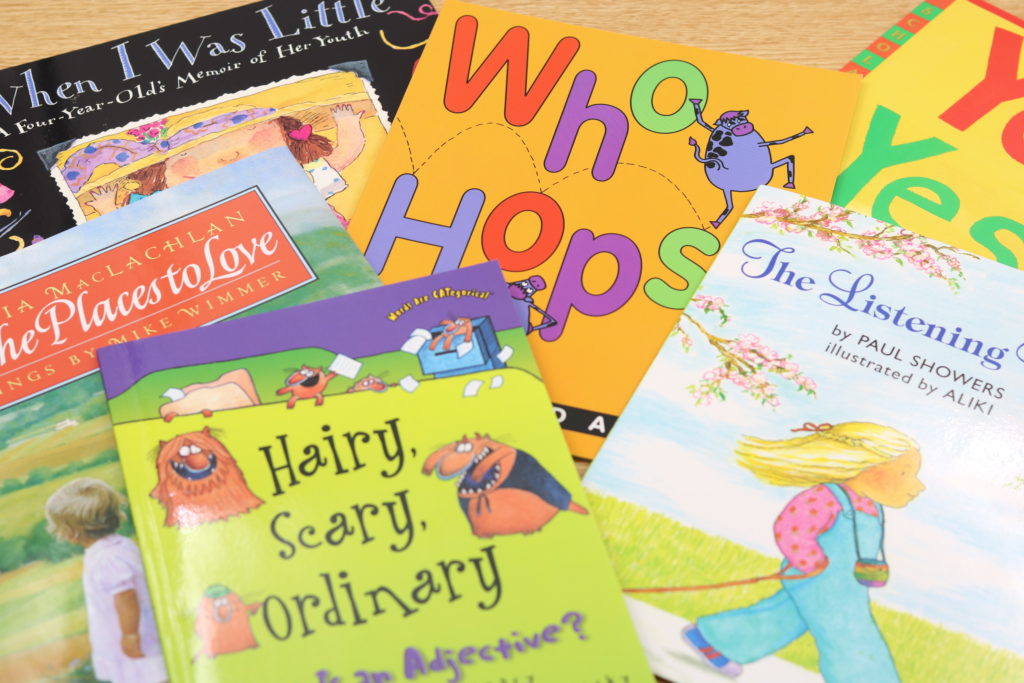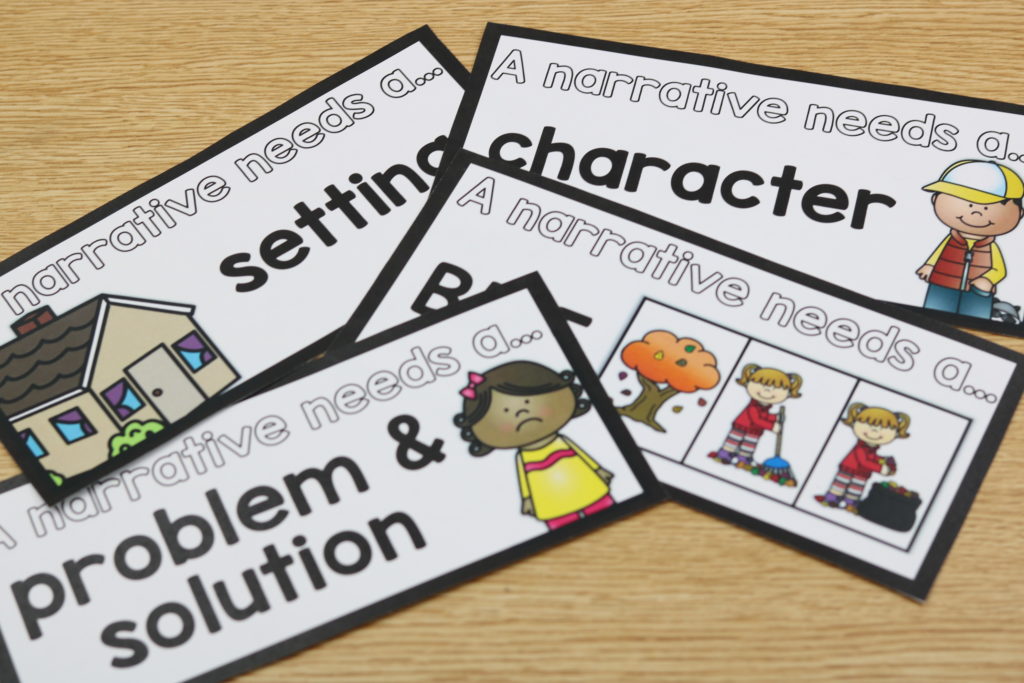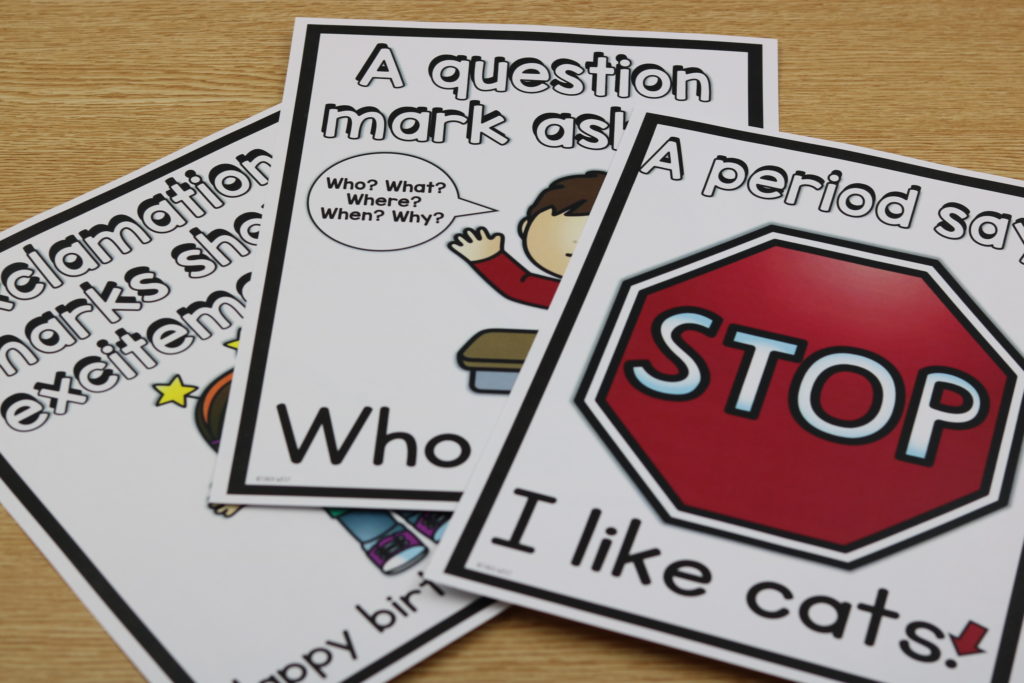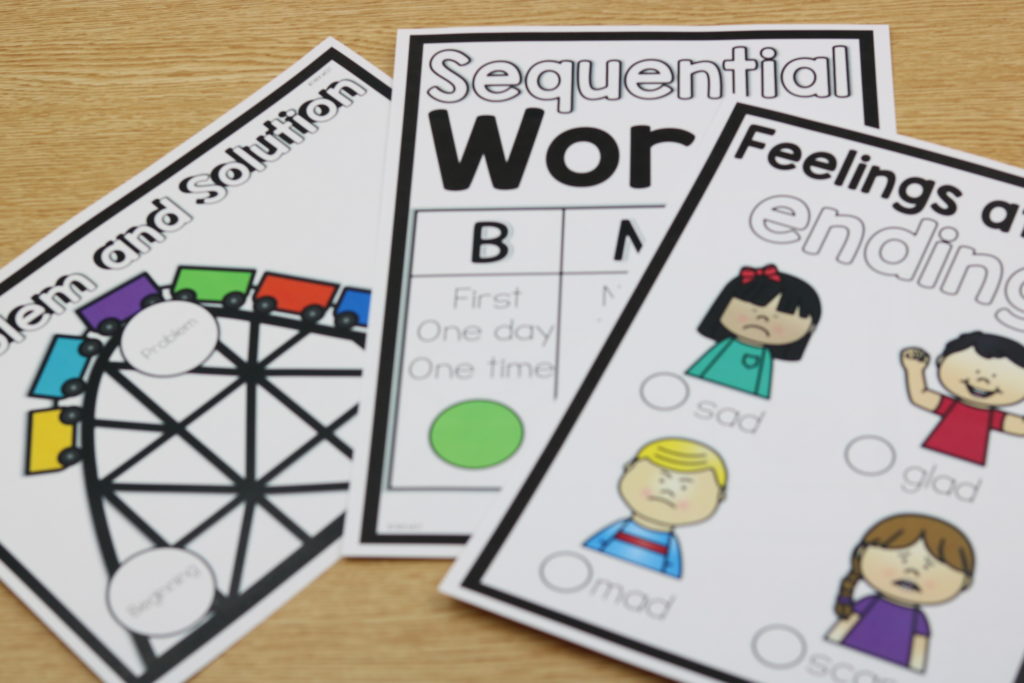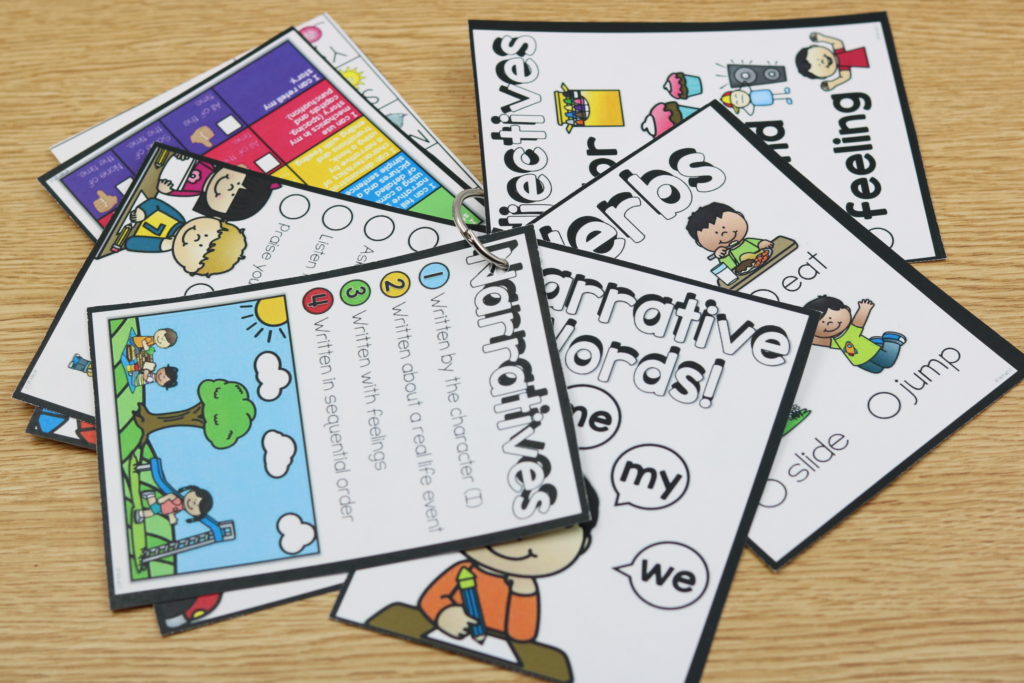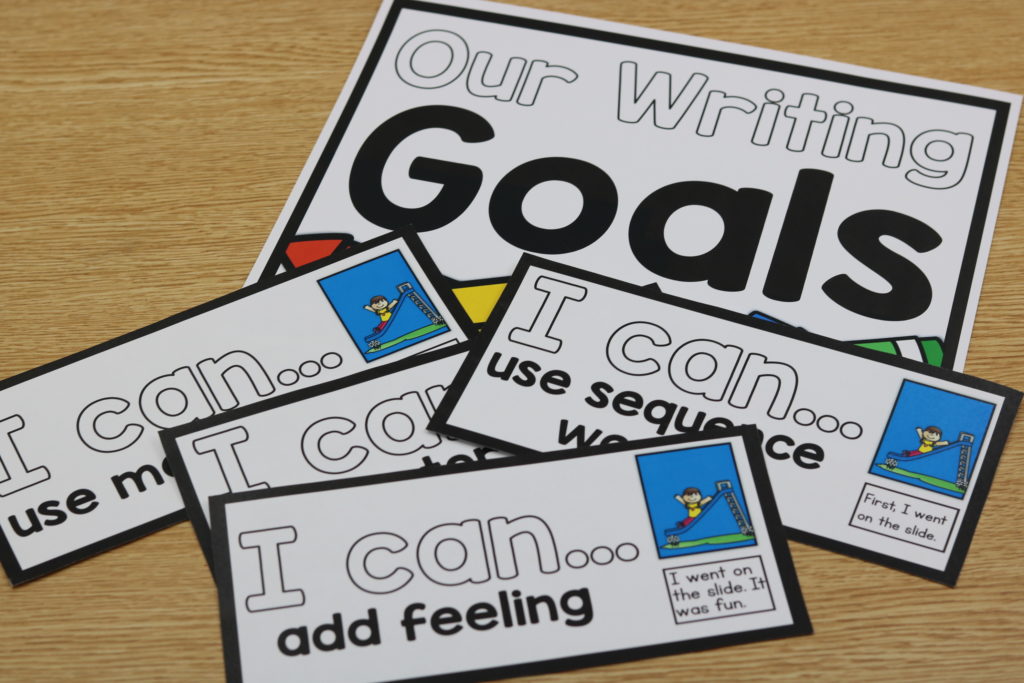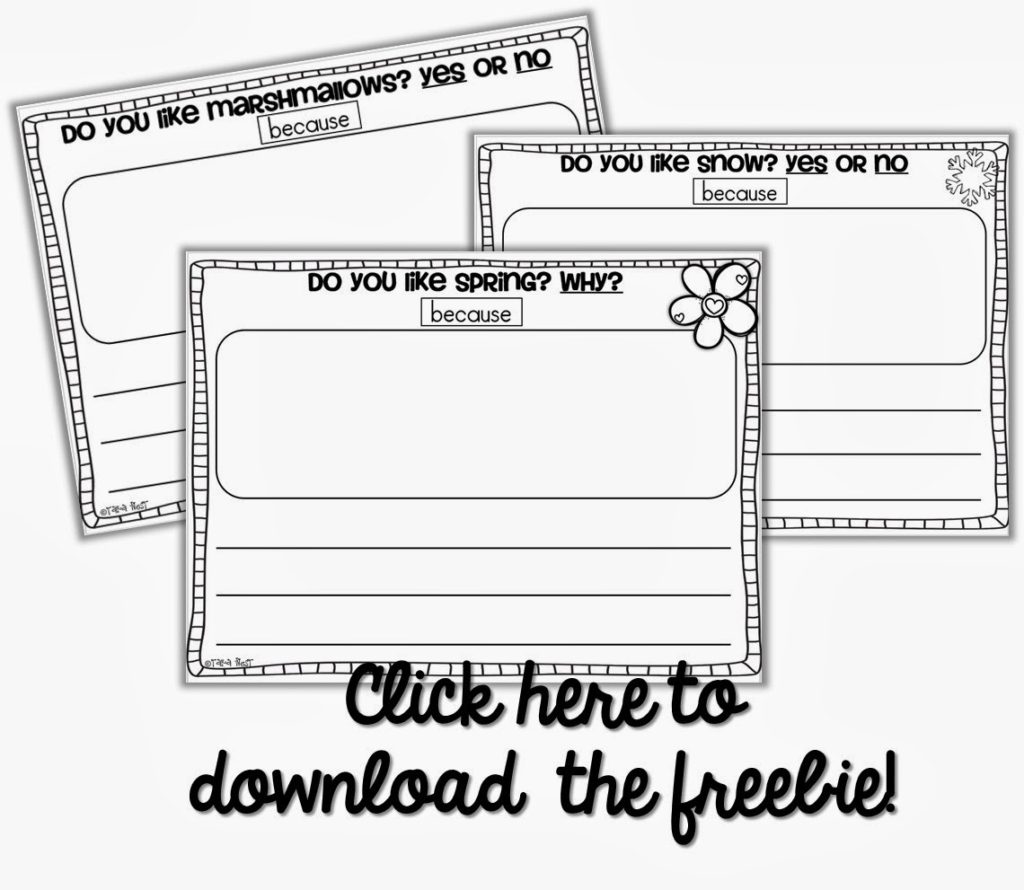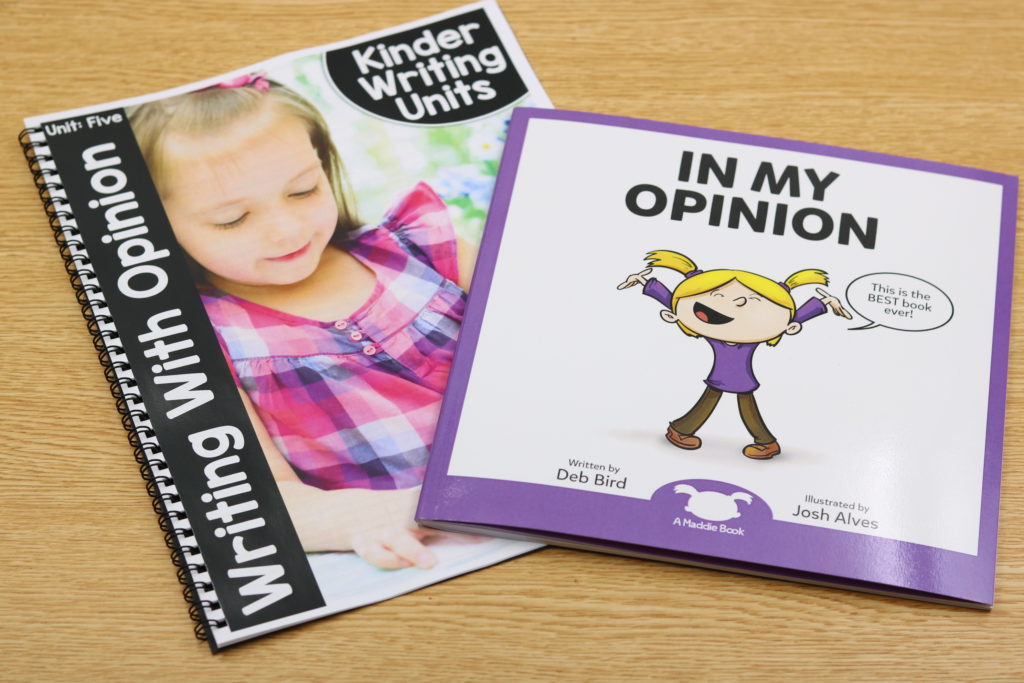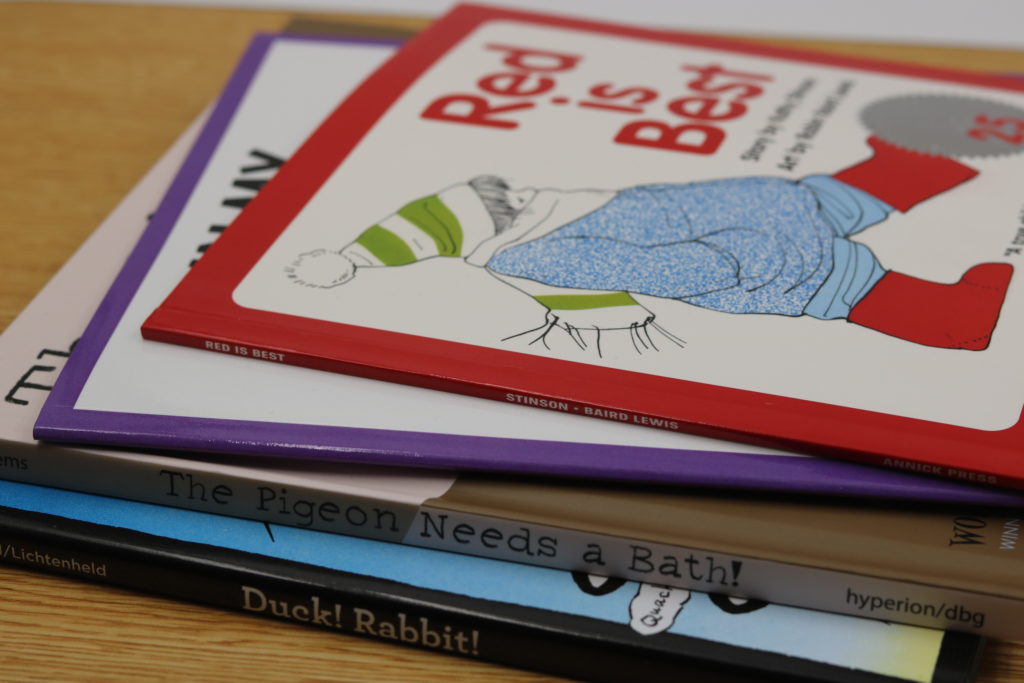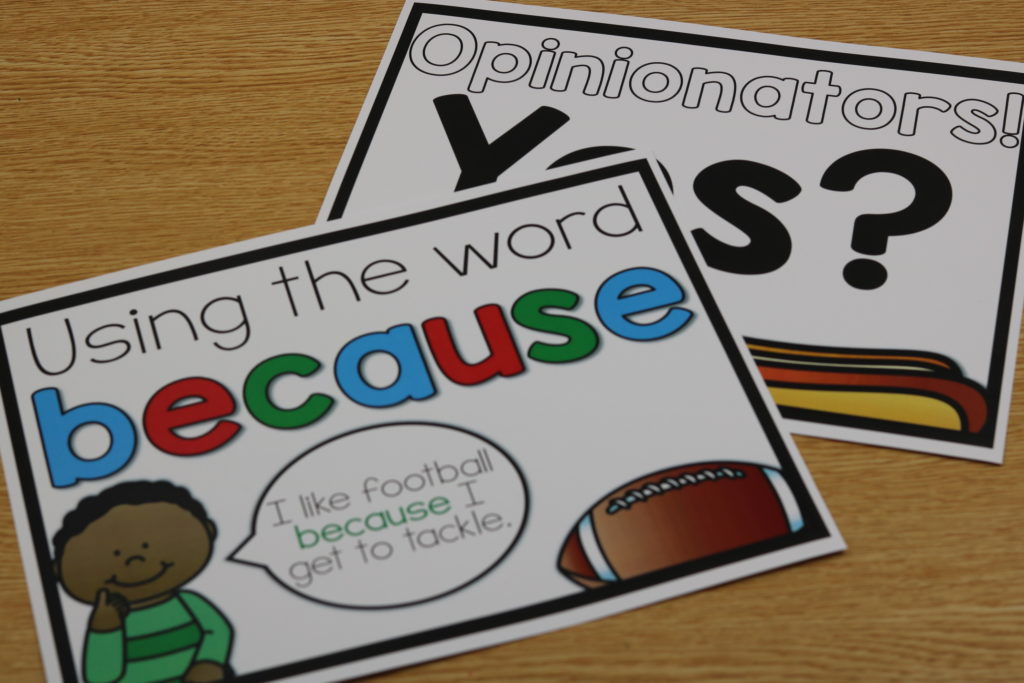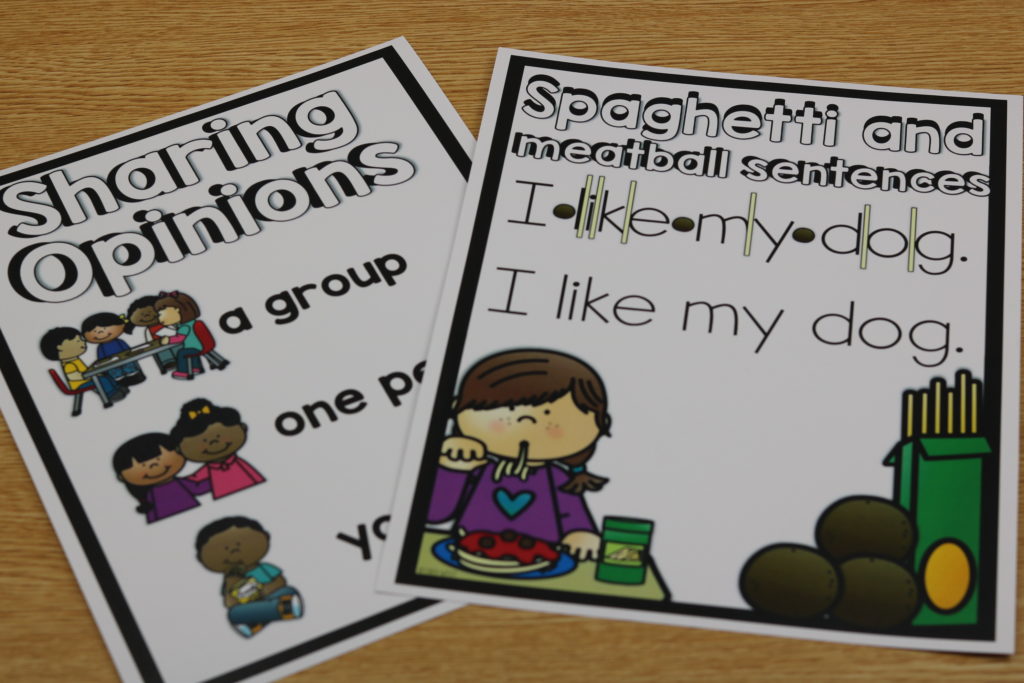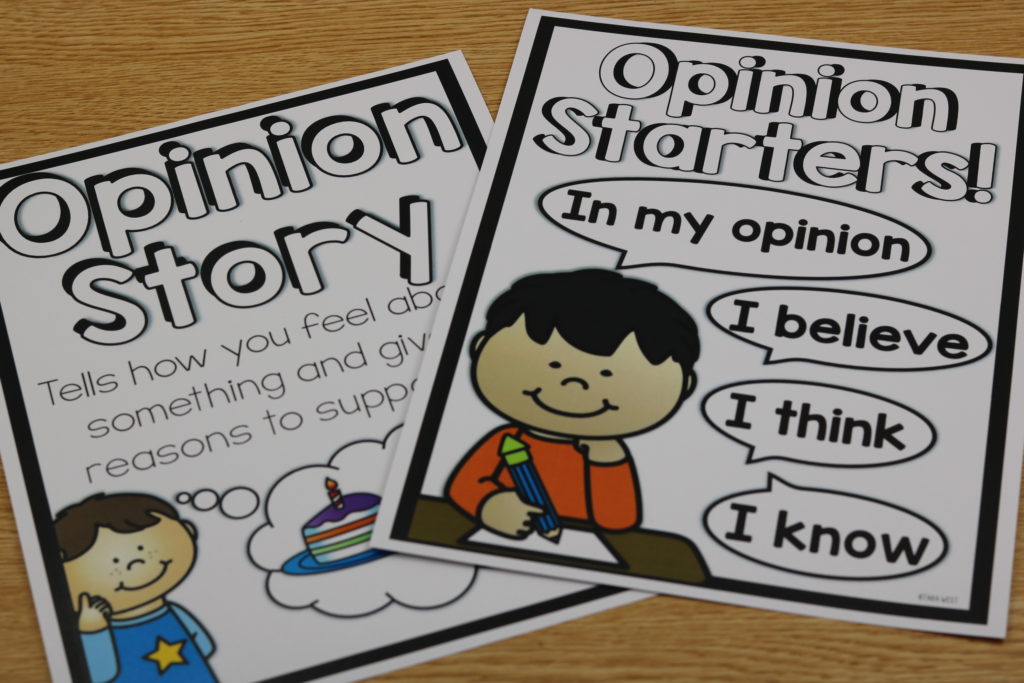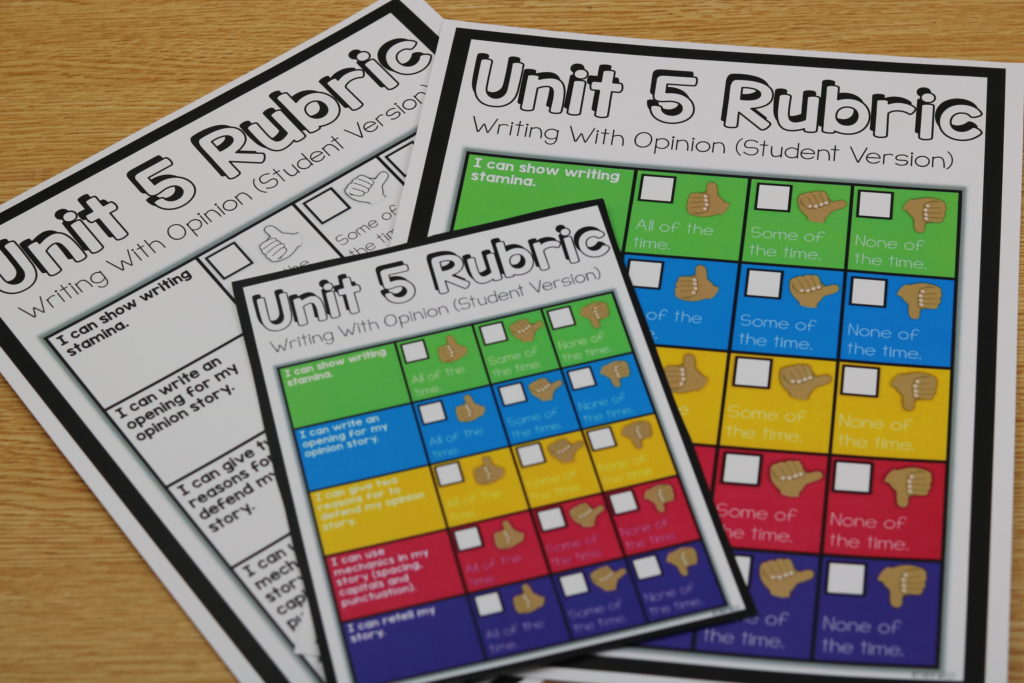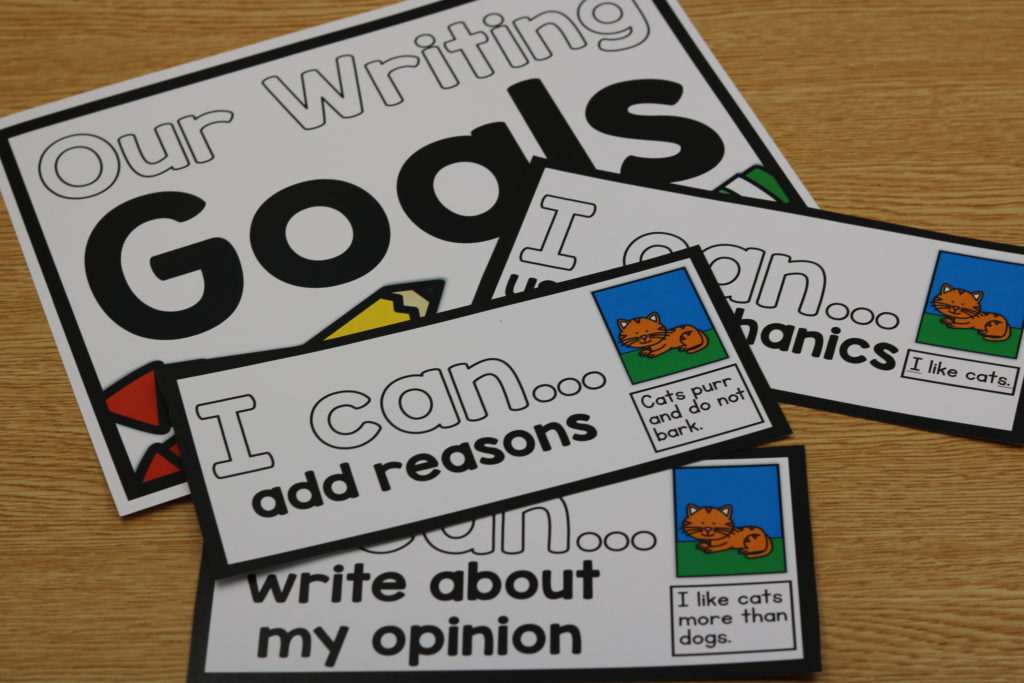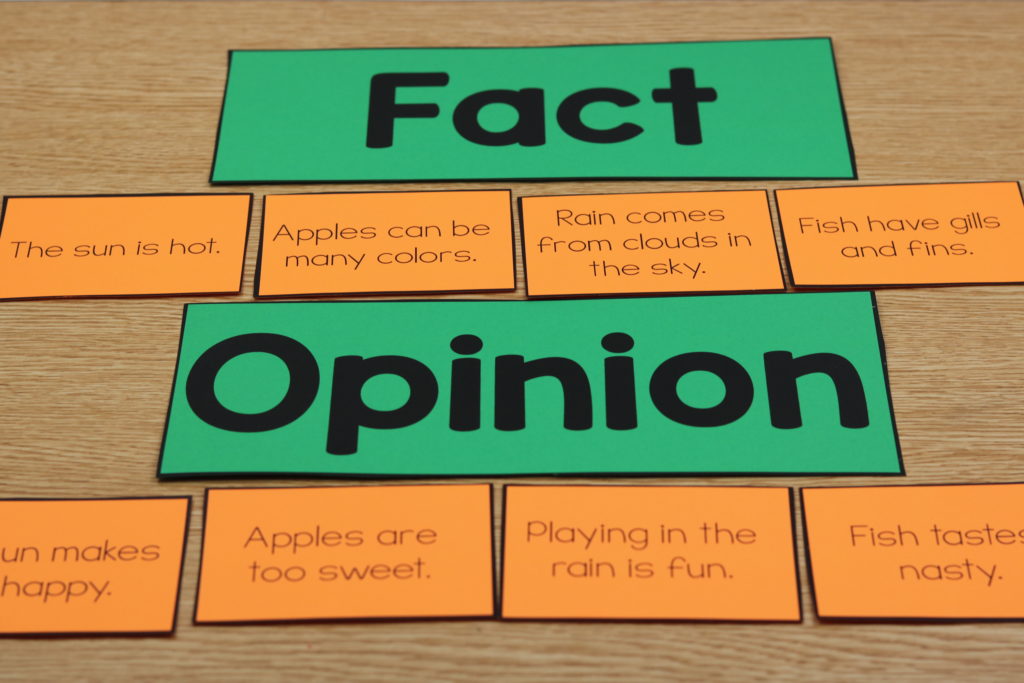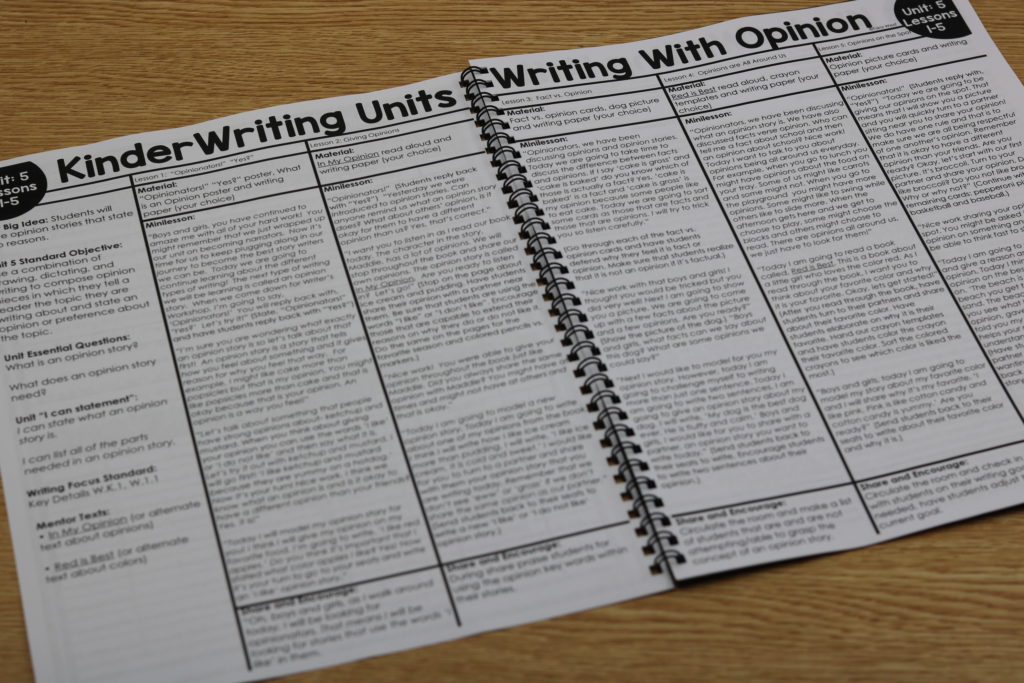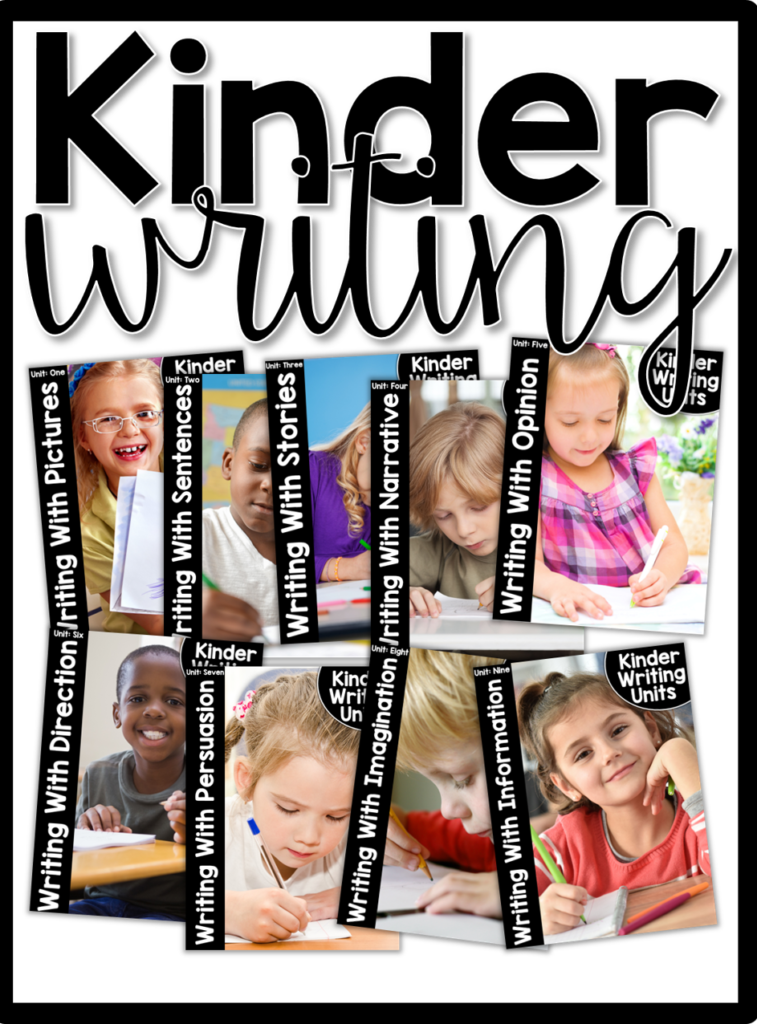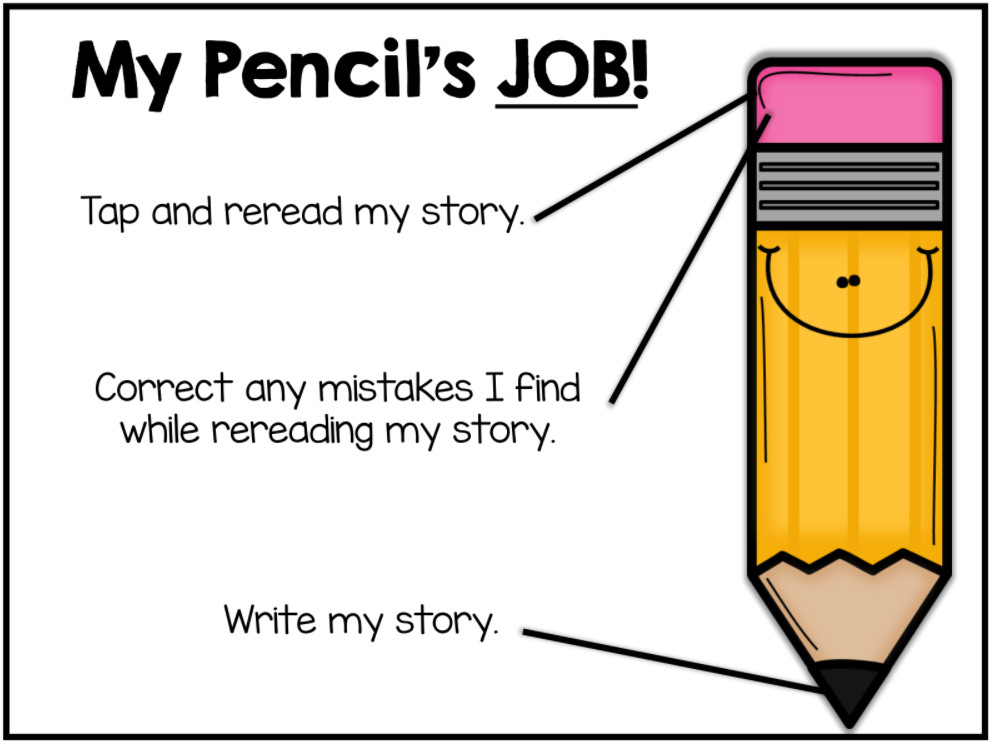Writing in the Primary Grades [freebies includes]
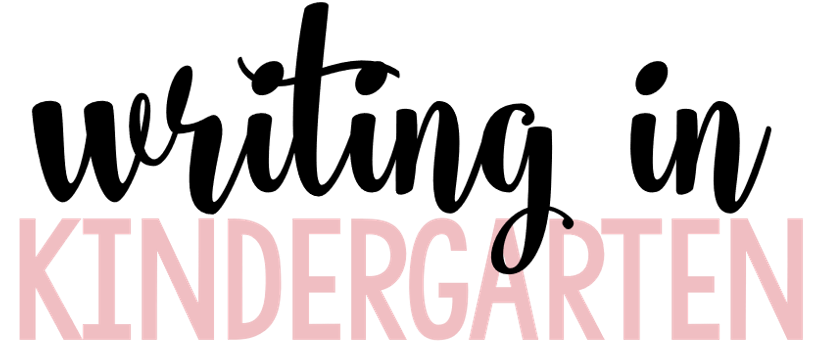
Let’s talk writing!
Hey friends! I wanted to take a moment (or a few moments) of your time today to visit about all things WRITING!
Writing has always been one of my favorite subjects to teach but for sure not the easiest! I mean when you start the year there is SO MUCH to learn… what a pencil is, how to hold a pencil, how to write with a pencil, what to write, how to stretch words, how to put words into sentences and it goes on from there!
Sometimes teaching writing can be intimidating because there are SO many varying opinions. Should you give them a starter? Should you give them a sentence frame? Should they spell words phonetically. Should YOU spell words phonetically when modeling stories and so on!
I finally realized that there is not ONE way to teach writing and if someone tells you that there is only ONE way to do it… then you smile, nod and close your door.
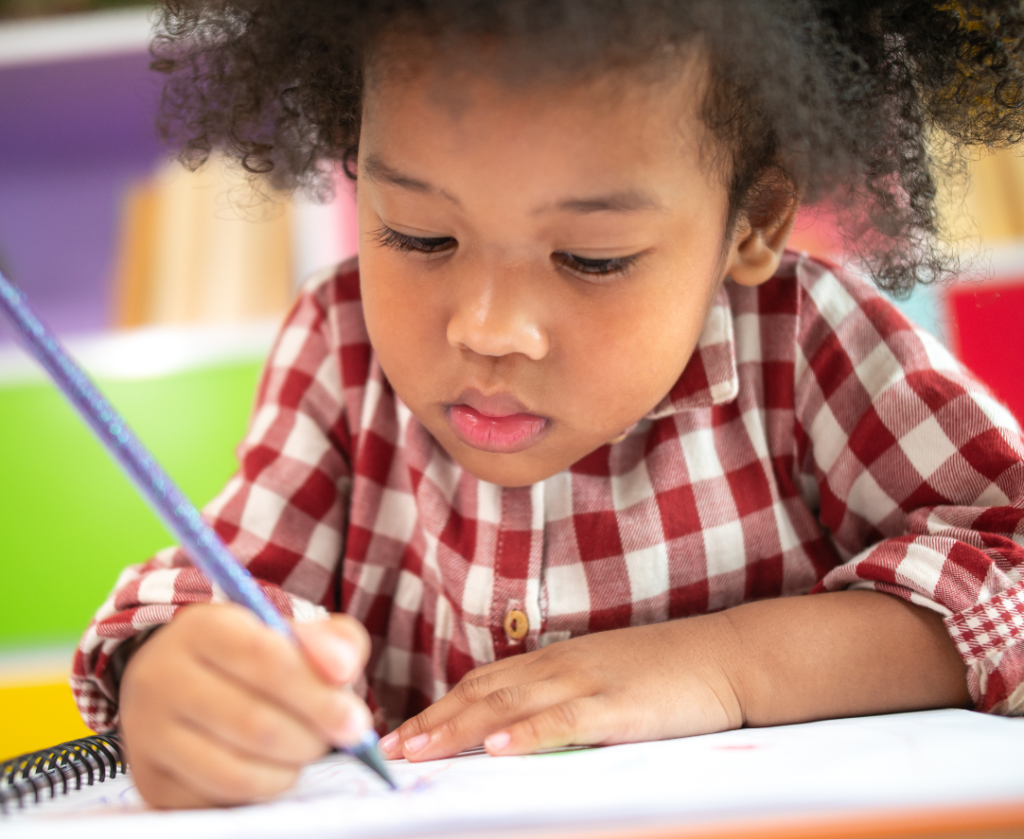
All of our students will start at different levels and need different instruction. That brings me to writing instruction and curriculum. There are of course many different writing programs!
I was first given the writing lessons from my “big box” curriculum. The top of the lessons started with ALL YEAR, “Students will draw a picture to tell their story. You can dictate the story for them after.” REALLY? I mean yes there will be some kids that start lower and some that still might not get to sentences by the end of kindergarten.
However, I’m going to assume that first grade teachers won’t be real happy with me if I only EXPECT my kiddos to color pictures for writing throughout the entire year.
That brings me to the opposite end of writing curriculum *cough I’ve shared this program on my own blog before.* I liked this program and it had/has REALLY good parts. The problem is goes TOO fast and leaves out the majority of my students.
Sure the program says that the teacher will scaffold by modeling but if the program is too tough for the majority of my class then that means the majority is not receiving the instruction they so deserve.
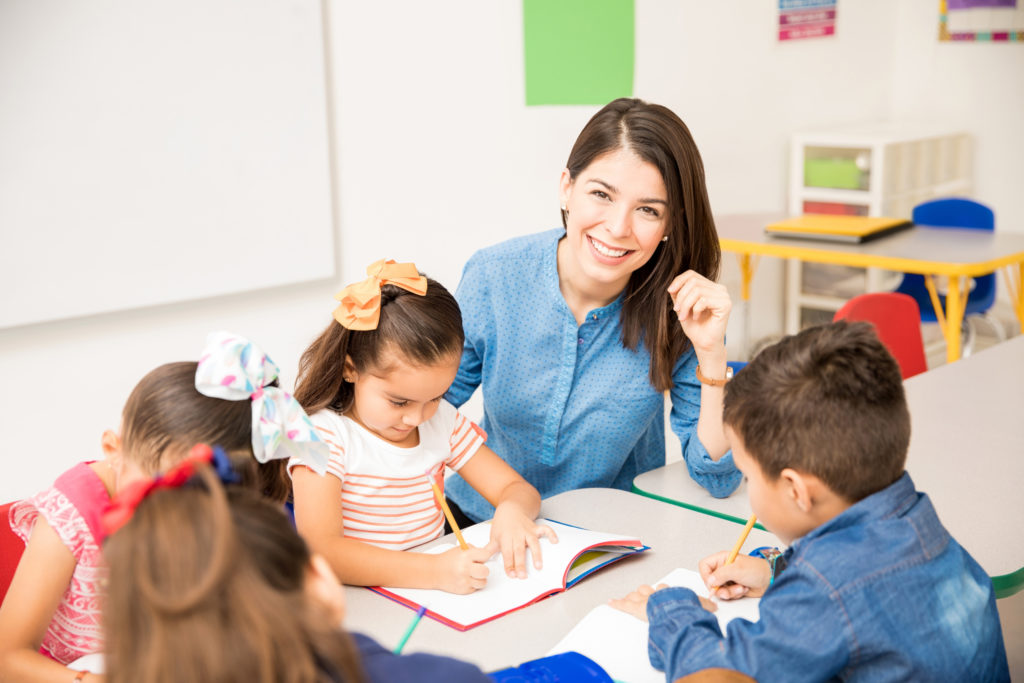
My first couple of years in the classroom I was constantly changing my kindergarten writing approach due to the above mentioned lack luster big box writing program.
One day I would give them a sentence starter. The next day I didn’t. At the end of the year my writers were where they needed to be but there was one thing I noticed… not all the kids enjoyed writing like I enjoyed it!
I knew that there was something I had to change! After much research and chatting with colleagues I realized that writing is a work of heart! When the kids are inspired and then able to express that into their kindergarten writing… they too will fall in love with writing!
What I didn’t realize those first couple of years was that I was writing and modeling stories that were near and dear to ME. I can’t tell you every story I modeled for them but I am going to guess that a story about four-wheelers or Minecraft wasn’t wasn’t one of those!
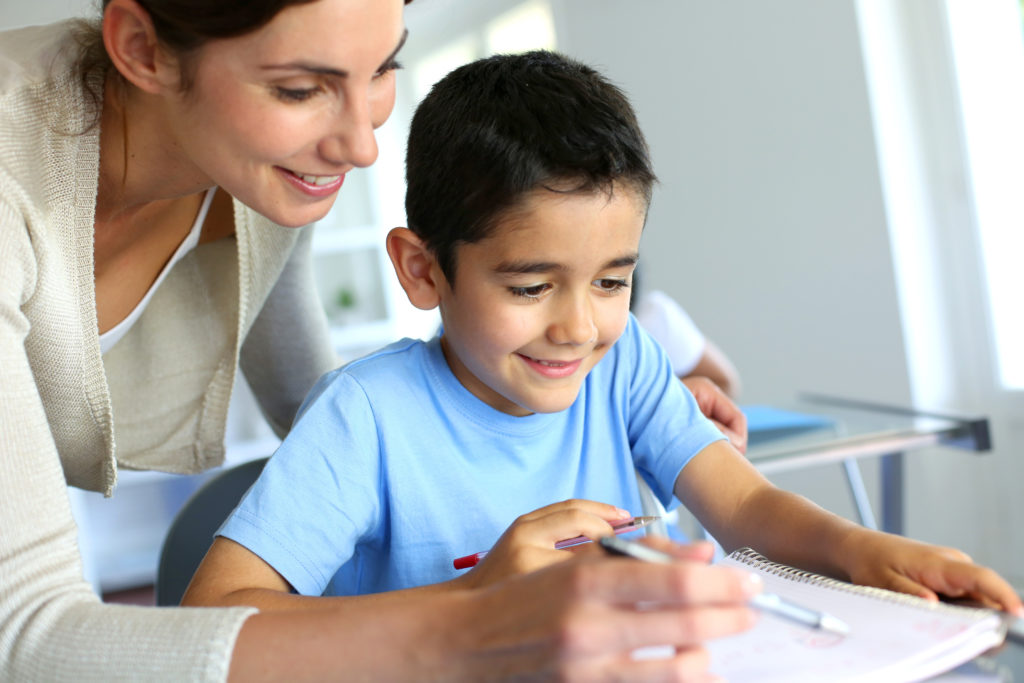
By turning it over to the kids and having them choose their writing topics, I saw my kids BLOSSOM and year after year my writers fell in love with writing just like me!
This is something that the second above mentioned program did but it was SO hard or me to “buy into” that one because it was just not the level of my kiddos. I took that same new passion and worked hard to put it into to easy to read lesson plans!
That is when KinderWriting was born! 🙂 In this post, I will share all about my favorite writing lessons I’ve done through the years, give you the freebie templates so you can plug them right into your lessons and I will be sharing all about the writing program I created called, KinderWriting.
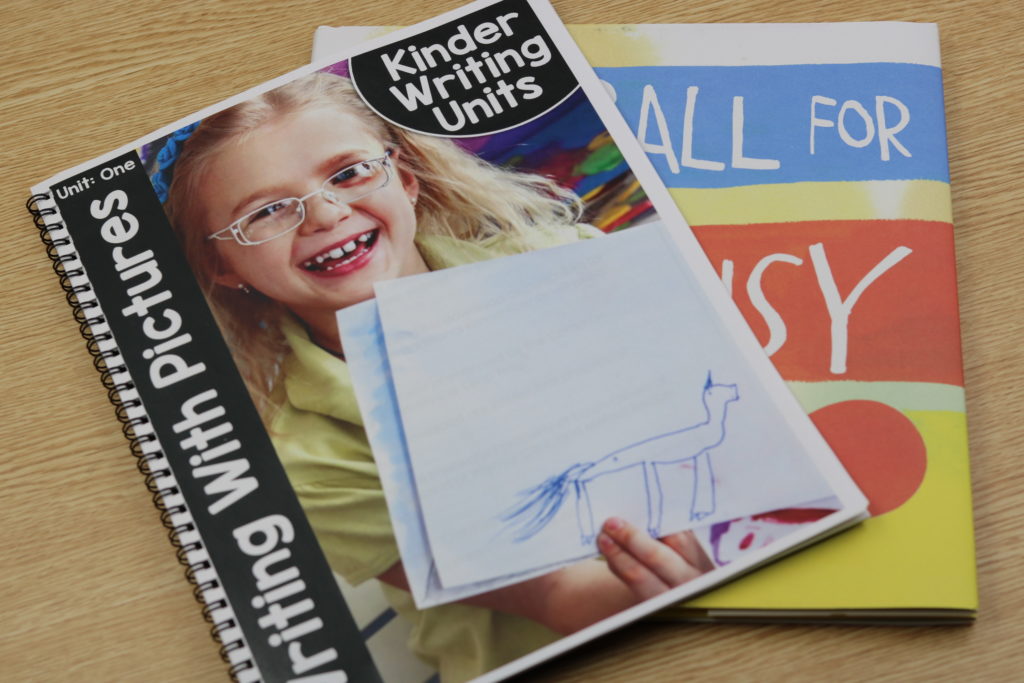
What is KinderWriting?
KinderWriting Curriculum is an engaging, kindergarten, genre-based writing curriculum. KinderWriting encourages young learners to look inward at their endless possibilities as a writer.
KinderWriting is based upon nine units: Writing With Pictures, Writing With Sentences, Writing With Stories, Writing With Narrative, Writing With Opinion, Writing With Direction, Writing With Persuasion, Writing With Imagination, and Writing With Information. Each unit is broken down to 20 lessons.
The units cover 20 days of academic instruction. The lesson plans have listed unit objectives, “I can” statements, Common Core writing standards and needed mentor texts.
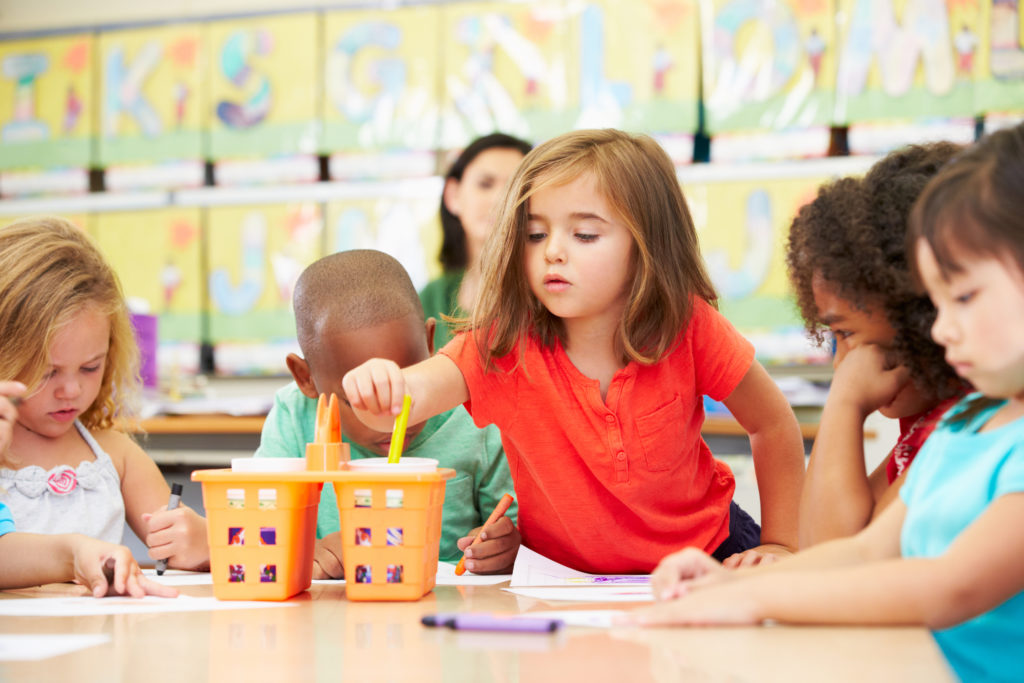
KinderWriting encourages a daily routine of a minilesson, independent writing, and a share time. Each of the lessons in KinderWriting are well thought out for the young writer and spiral back to previous lessons to ensure students are retaining their skills.
KinderWriting also includes unit anchor charts, a variety of writing paper, conferring schedules and note sheets, sample writings, student writing goals display, writing rubrics, and step-by-step guides that are made specifically for each unit.
What is included in KinderWritring Curriculum?
-Teacher “simple read” lesson plans. You will not need to rewrite these lesson plans, unless you choose do. If so I have included editable lesson plans.
-Each unit I have planned out the; big idea, focus standard, essential questions, and so much more!
-Writing paper
-Unit posters
-Student material
-Unit rubrics
-Spanish posters included
What about the standards?
Each unit has a focus standard that is based upon the Common Core Standards. Units further into the year will have more than one focus standard. If you teach to a varying set of standards, you can email me for assistance. Thanks!
What Units are Covered?
Unit 1: Writing with Pictures
Unit 2: Writing with Sentences
Unit 3: Writing with Stories
Unit 4: Writing with Narrative
Unit 5: Writing with Opinion
Unit 6: Writing with Direction
Unit 7: Writing with Persuasion
Unit 8: Writing with Imagination
Unit 9: Writing with Information
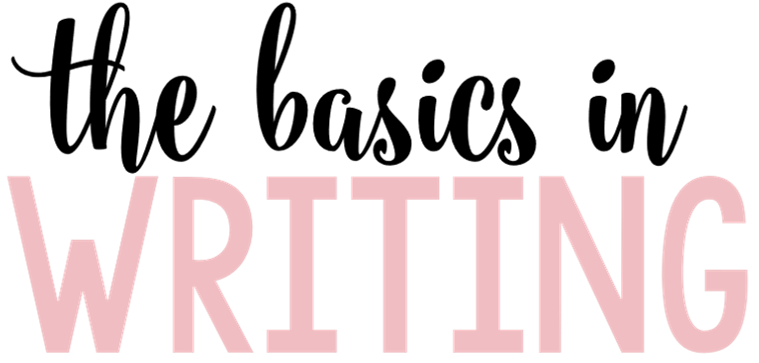
When I mentioned above the more rigorous writing curriculum I was given, the BIG problem with it is that it SKIPPED all of those “baby steps” kinders need. For example, what is LABEL? How do you hold your PENCIL? What exactly is WRITING? Can you write a story through a PICTURE?
It was my mission with my writing curriculum to tackle all of those very important steps in the writing process. Actually, the first THREE units in my curriculum program are for establishing those basics. That is 60 full days or just over 3-4 school months before we jump into genre writing. Now don’t get me wrong… I love genre writing. However, can we really talk to them about leads, supporting sentences, and closings if they don’t know how to stretch out a simple CVC word?
Let’s get started with Unit 1: Writing With Pictures. This unit is all about setting the kiddos up for success! If we jump right into “writing” our kiddos can sometimes feel unsure of themselves. They might worry if their words are spelled correctly or if their pictures are perfect! In unit 1, we introduce students to writing using illustrations! This is big, big, big especially for those lower kiddos! We want them to and NEED them to LOVE writing. We want to set them up with success from the very beginning.
What lessons are included?
Unit 1: Writing With Pictures
Lesson 1: Illustrators! Yes?
Lesson 2: Establishing the Minilesson
Lesson 3: Drawing Sticks, Circles, & Boxes
Lesson 4: Establishing Independent Write
Lesson 5: Share Time
Lesson 6: Illustrating the Best I Can
Lesson 7: Detailed Pictures
Lesson 8: Visualizing My Story
Lesson 9: Looking Closely
Lesson 10: Setting Goals
Lesson 11: What is a Label?
Lesson 12: Adding Labels
Lesson 13: The Pencil
Lesson 14: Labeling for Detail
Lesson 15: Ask and Write
Lesson 16: Show and Retell Stories
Lesson 17: Labeling Your Name
Lesson 18: Sticky Conferences
Lesson 19: A Picture Book
Lesson 20: Celebration
I recently had a Facebook live all about Unit 1! You can listen into that video below! If the video doesn’t load, you can access it HERE!
If you enjoyed this video please be sure to join in our Facebook group as I’ll be doing one for each new unit! You can join here!
I have organized my units into a plastic tote! Each unit has a folder in the tote!
Below is a look at the mentor texts used in KinderWriting Unit 1! The mentor texts will be used over the two weeks and sometimes used more than once! All of my units utilize mentor texts! There is just something about showing students about the writing process through literature. It’s simply magical!
Also in the folder is the unit spiral bound lessons, unit posters and the student mini poster rings!
Each unit contains 20 lessons and the lessons are displayed in an easy to read format! On the far left you have the unit big idea, standard, essential questions, “I can” statements, and any needed mentor texts!
The plans include your needed materials, minilesson and ideas to expand your teaching during the share block!
The student resource rings are perfect for the kiddos to keep in their pencil boxes! You can also use them back at your guided reading table!
KinderWriting is broken down into three important ares: minilesson, independent writing time and share! We teach this as a puzzle!
There are several writing posters included in the unit as well! These are great for displaying in the classroom!
Each unit has its own custom rubrics to match! There are several versions included! You have the student friendly version and the teacher version for assessments! The rubrics are offered in color and b/w!
Another important aspect of KinderWriting is writing goals! Each unit the kids will work on setting their writing goal! Setting writing goals will allow students to feel part of the writing process and take ownership in their MASTERPIECES!
The goals can be displayed in the classroom for the kids to see!
In Unit 1, the students will be introduced to conferring and the purpose of it! Within the next unit the students will start the conferring process! Included in the unit is a conferring notebook and a variety of recording sheets for your choice! Conferring is another way for the students to see that you care about their writing therefore they should, too!
For independent writing I have offered a variety of writing journals and writing paper! You can choose between landscaped and portrait style! I include lots and lots of styles so that you can decide what works best for your kiddos!
The student resource rings go great for independent writing time!
Unit 1 we also teach a explicit lesson on pencil grip! I offer a handy parent letter and poster for your classroom!
If you have kiddos struggling with pencil grip, one of the first things you can try is changing their pencil! Students respond differently to the pencil sizes!
A couple other tricks for pencil grip are below! Up first is the pom pom trick! Have students grasp a pom pom with their pinky, ring and middle fingers!
The next trick is the sock trick! You will cut out two small holes for the thumb and index fingers! The rest of the fingers will be tucked away nicely in the sock! If you have any questions about these, I share them in the video above 🙂
Now let’s take a look at unit 2! In Unit 2 we start to introduce students to writing words and stringing some SIMPLE words together to make sentences!
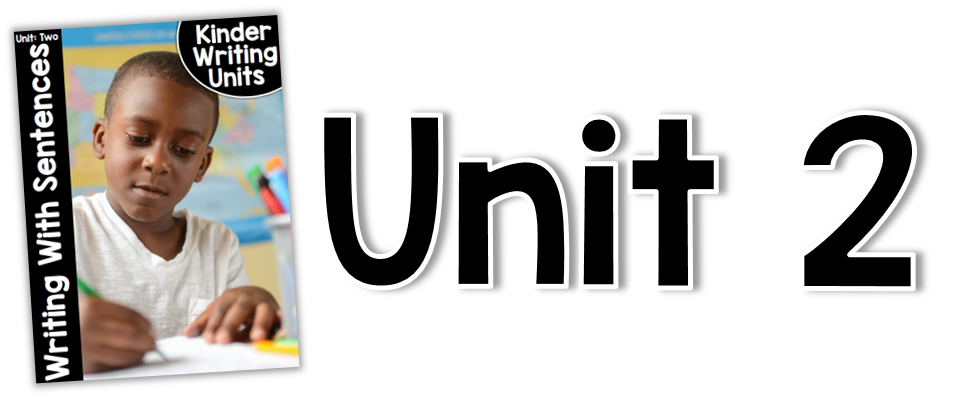
KinderWriting Unit 2 is all about encouraging students to stretch words, write words and then place those words into sentences!
Below is a full listing of the lessons found in Unit 2 of KinderWriting!
Unit 2: Writing With Sentences
Lesson 1: Authors! Yes?
Lesson 2: Authors Persevere
Lesson 3: Writing Tools- ABC Chart
Lesson 4: Making Words
Lesson 5: Writers Make Mistakes
Lesson 6: Stretching Sounds
Lesson 7: Stretching More Sounds
Lesson 8: Writing Tools- Sight Word Chart
Lesson 9: Color Words
Lesson 10: Letters vs. Words
Lesson 11: Conferring and Writing Partnerships
Lesson 12: Speech Bubbles and Emotion
Lesson 13: Using the Room
Lesson 14: Are You Really Done?
Lesson 15: Capitals
Lesson 16: Spacing
Lesson 17: Punctuation
Lesson 18: Words Make Sentences
Lesson 19: Writing Storybooks
Lesson 20: Sharing Storybooks
I recently had a Facebook live all about Unit 1! You can listen into that video below! If the video doesn’t load, you can access it HERE!
If you enjoyed this video please be sure to join in our Facebook group as I’ll be doing one for each new unit! You can join here!
I have organized my units into a plastic tote! Each unit has a folder in the tote!
Below is a look at the mentor texts used in KinderWriting Unit 2! The mentor texts will be used over the two weeks and sometimes used more than once!
Also in the folder is the unit spiral bound lessons, unit posters and the student mini poster rings!
Each unit contains 20 lessons and the lessons are displayed in an easy to read format! On the far left you have the unit big idea, standard, essential questions, “I can” statements, and any needed mentor texts!
The plans include your needed materials, minilesson and ideas to expand your teaching during the share block!
The student resource rings are perfect for the kiddos to keep in their pencil boxes! You can also use them back at your guided reading table!
There are several writing posters included in the unit as well! These are great for displaying in the classroom!
Each unit has its own custom rubrics to match! There are several versions included! You have the student friendly version and the teacher version for assessments! The rubrics are offered in color and b/w!
Unit 2 students will sort letters verses words!
We will use the mentor text, The Alphabet Tree, and build words!
We also learn about color words and using those in our stories!
Unit KidnerWriting Unti 2 the students will learn about adding speech bubbles into their stories and adding emotion to their illustrations!
We also learn about capitalization and punctuation!
Below is a look at the mentor texts used in KinderLiteracy Unit 2!
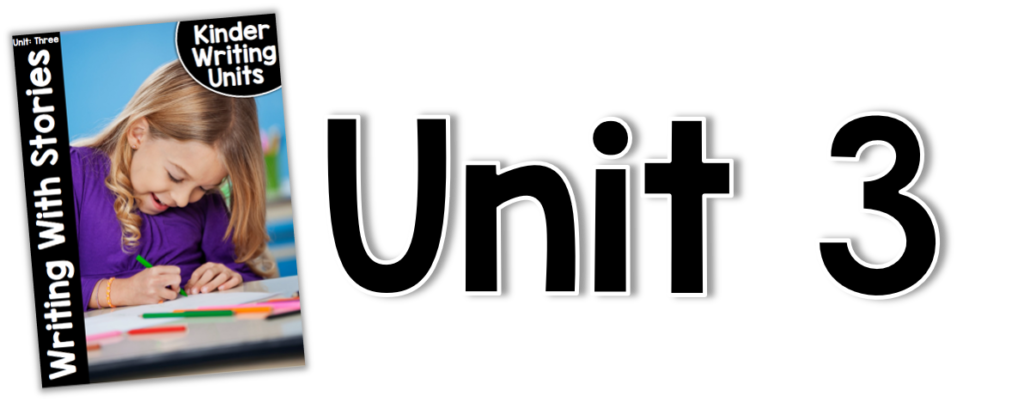
Unit 3 is all about teaching the students WHAT they can write about and how to share those thoughts on paper! We also do a lot of work on writing mechanics! Below is a look at the lessons from unit 3!
Unit 3: Writing With Stories
Lesson 1: Storytellers! Yes?
Lesson 2: Authors Write About What They Love
Lesson 3: Authors Write About What They Can Do
Lesson 4: Authors Write About What They Know
Lesson 5: Authors Write About The Past
Lesson 6: Mechanics Matter
Lesson 7: Names and Places Use Capitals
Lesson 8: Tap Out the Story
Lesson 9: Powerful Punctuation
Lesson 10: Ask More With Writing Partners
Lesson 11: A 5 W’s Story
Lesson 12: Topics are Everywhere
Lesson 13: Books are Stories
Lesson 14: Places are Stories
Lesson 15: Colors are Stories
Lesson 16: Elapsed Time
Lesson 17: Adding On
Lesson 18: Illustrations Tell Stories
Lesson 19: Storytelling Booklets
Lesson 20: Sharing Storybooks
Below is a look at the mentor texts from Unit 3!
The big push in Unit 3 is to help those that struggle with generating their own witting topic each day! We want them to be confident in realizing that there are stories ALL AROUND US! We use included pictures to help students generate writing ideas.
We also teach them about using color as a writing inspiration!
What do writers write about? Well, the write about things they love, things they know, things they can do and things from the past!
We work on STRETCHING those words!
In unit 3, we become mechanics so we can work on all of those important skills, too!
Establishing writing goals are vital!
In each unit I supply you with a lot of learning posters to present to the kiddos!
We can’t forget the rubrics in each unit!
The student resource rings!
Unit 3 of Kinderwriting wraps up the “basics” units! Units 4-9 are genre-based writing units! Let’s jump into those now!
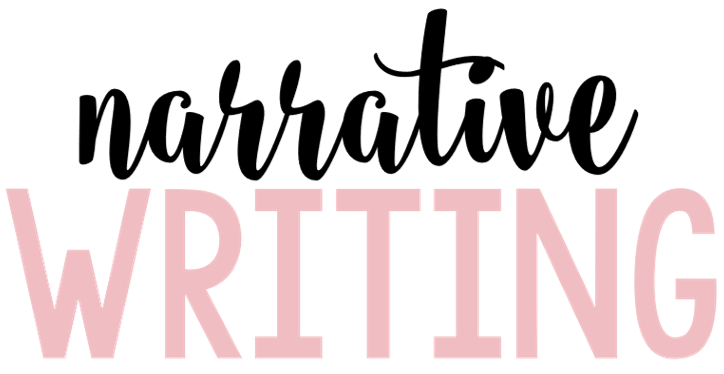
Narrative writing is a BIG DEAL in kindergarten! Narrative writing is most likely one of your state standards that will be covered during kinder. Today I will start with some of my favorite narrative writing activities and then get into KinderWriting Unit 4. With our narrative writings I like to focus first on the idea of having an opening sentence, supporting details, and a closing sentence! I explain to the kiddos their opening sentence is like a cover of a book…it makes the reader interested, the supporting details are the inside pages of the book, and the closing sentence is them “closing their book.” So, as I circulate the room I like to say something like, “Were you able to close your book?” I get a lot of “Wow, this teacher has a lost her mind because this is a piece of paper…NOT a book!” Below is a look at the poster I like to make for my narrative writing unit!
After a couple of days with simple narrative writing stories in our journals we went on to these “A Day in the Life of..” story booklets! The kids really LOVED this writing activity and I would suggest to anyone …give it a try! 🙂 I’ve included the template as a freebie down below! For this activity we also worked on the importance of transitional words! I went ahead and labeled each page with their transitional word for ease of writing!
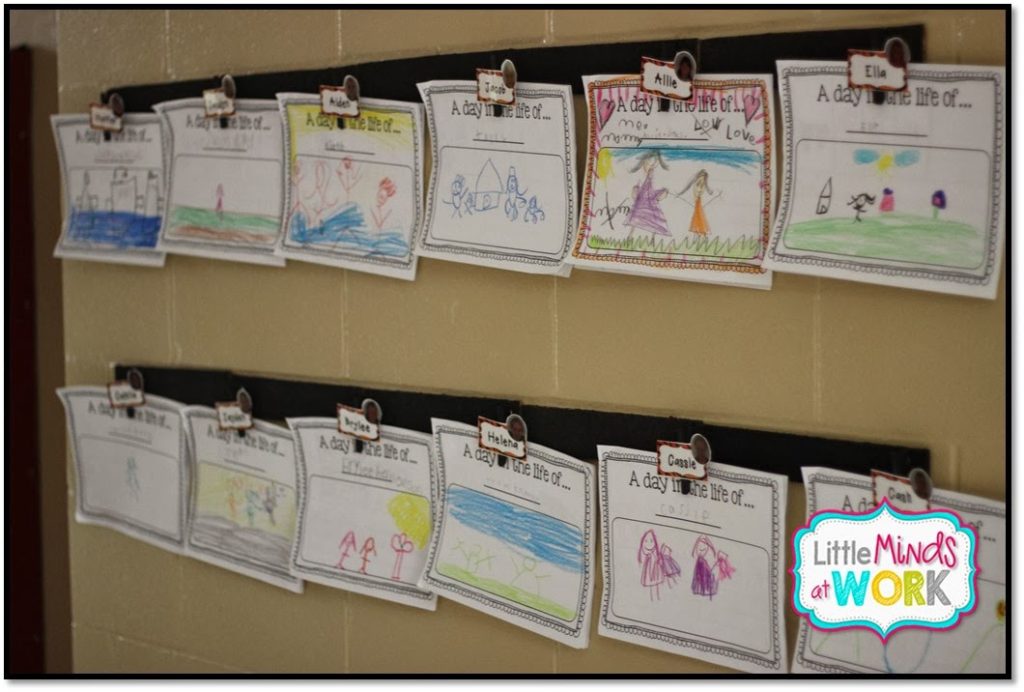
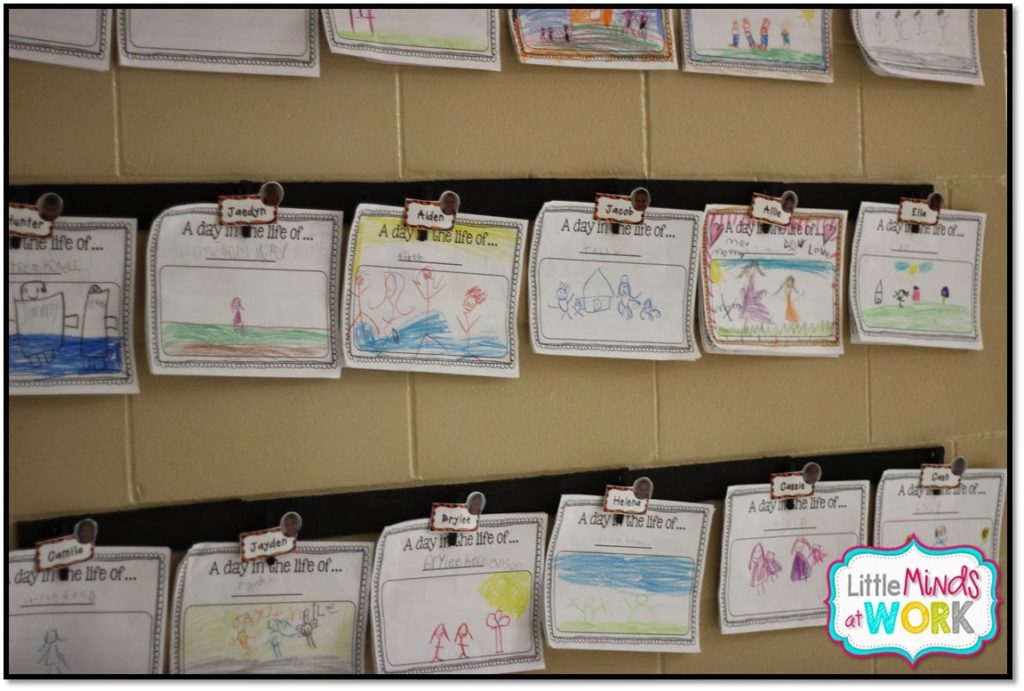
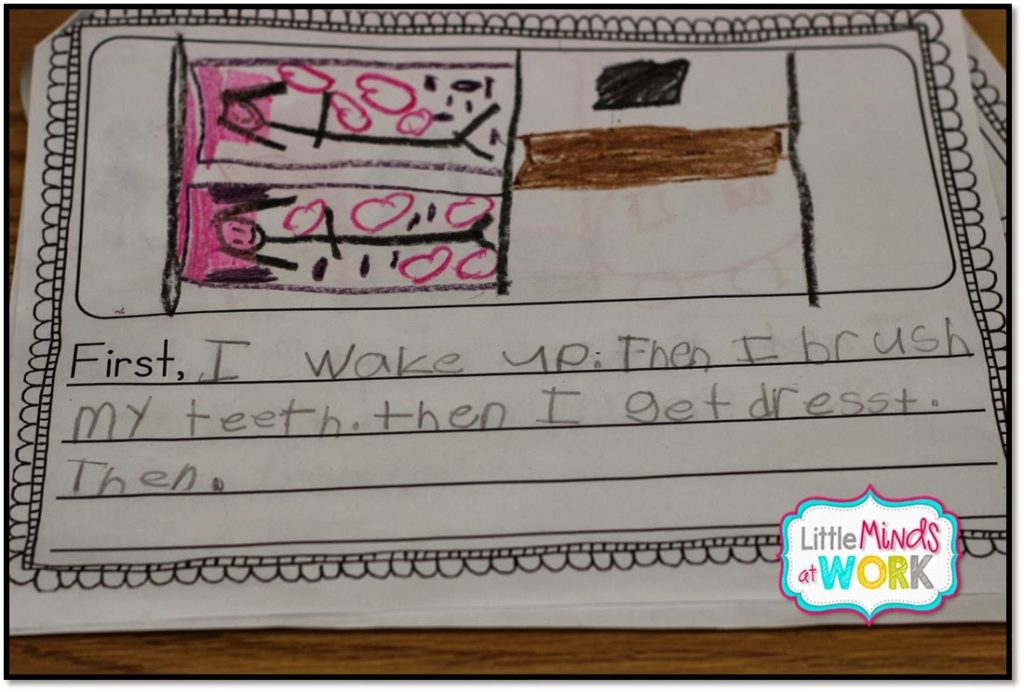
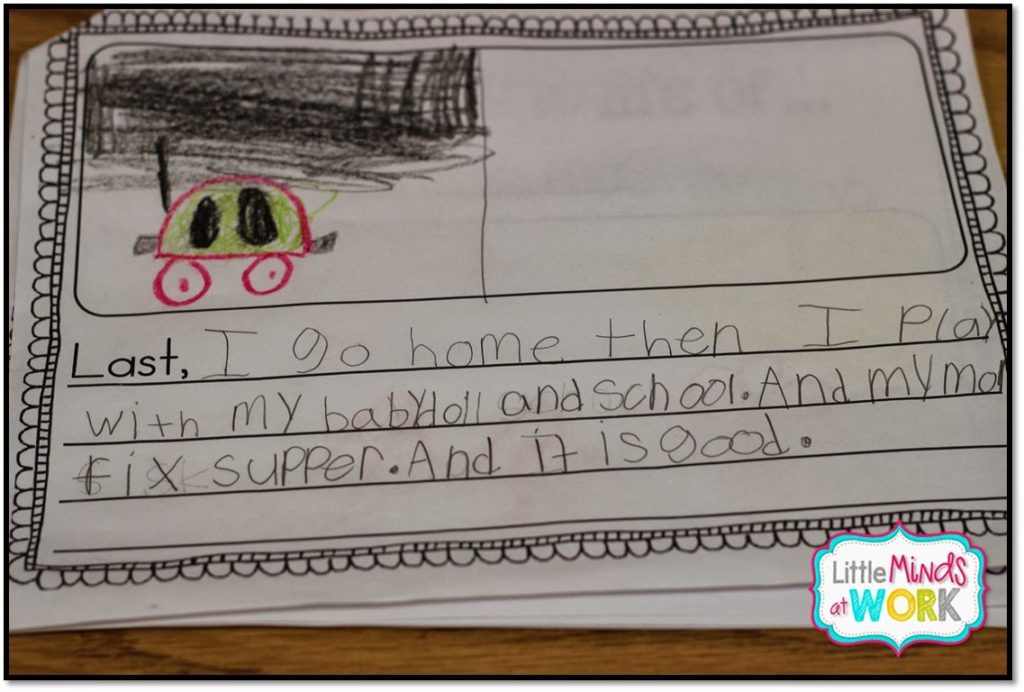
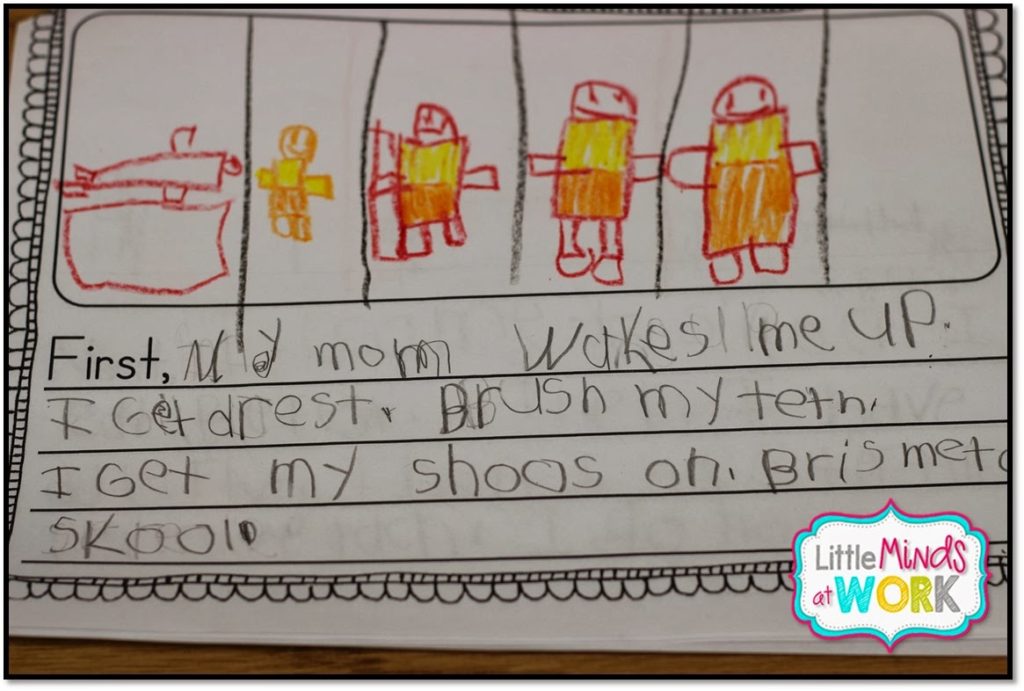
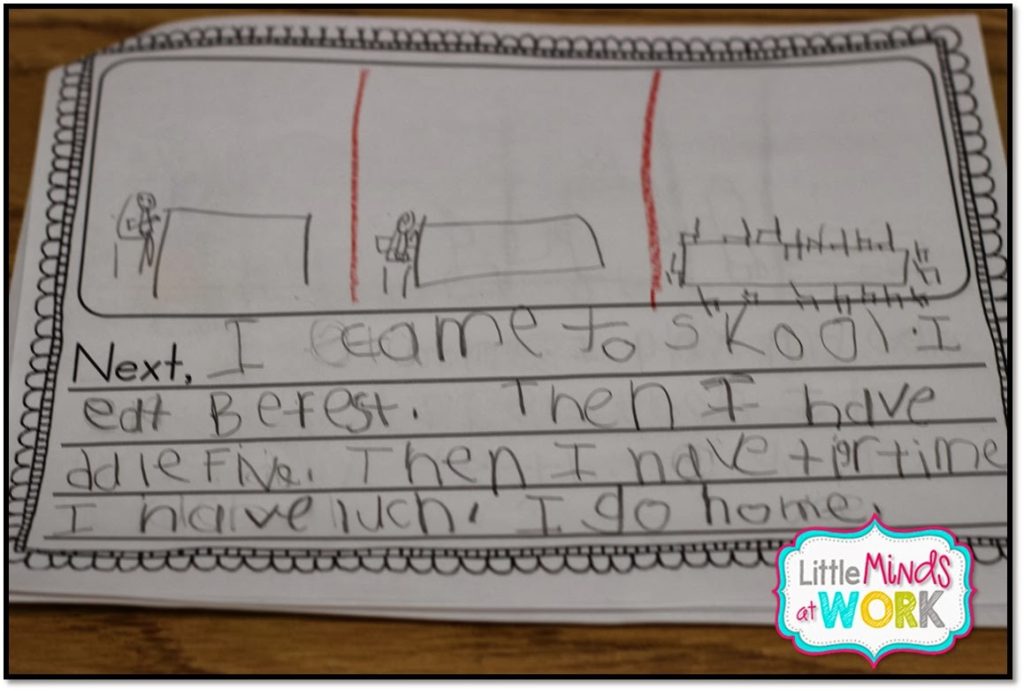
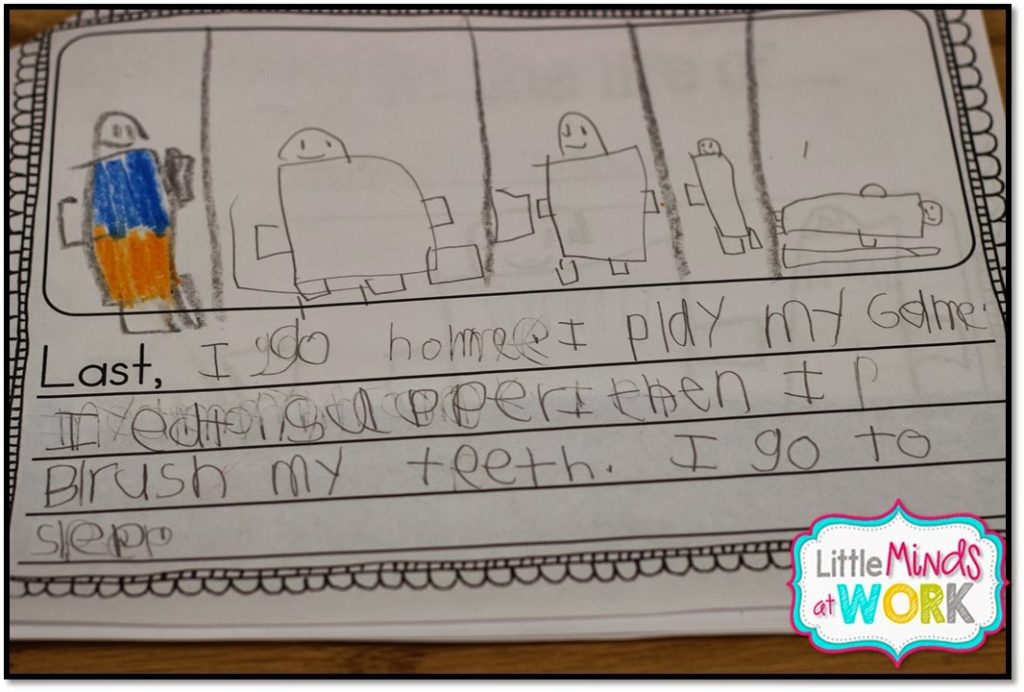
And additional personal narrative story booklets! This booklet & graphic organizer is a freebie listed below! 🙂
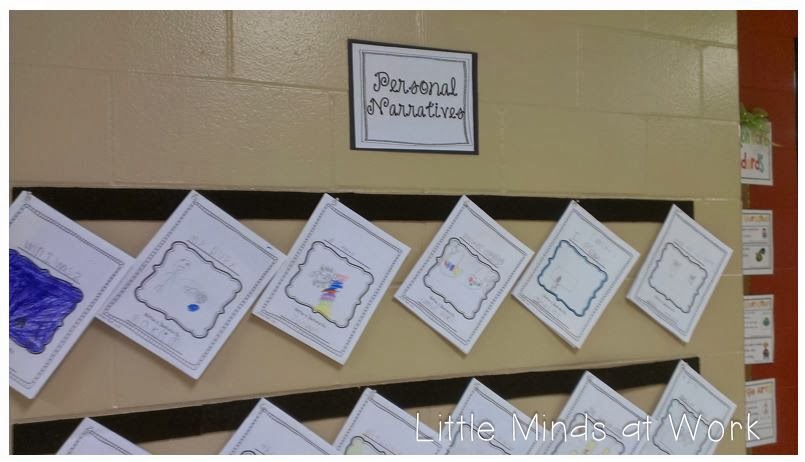
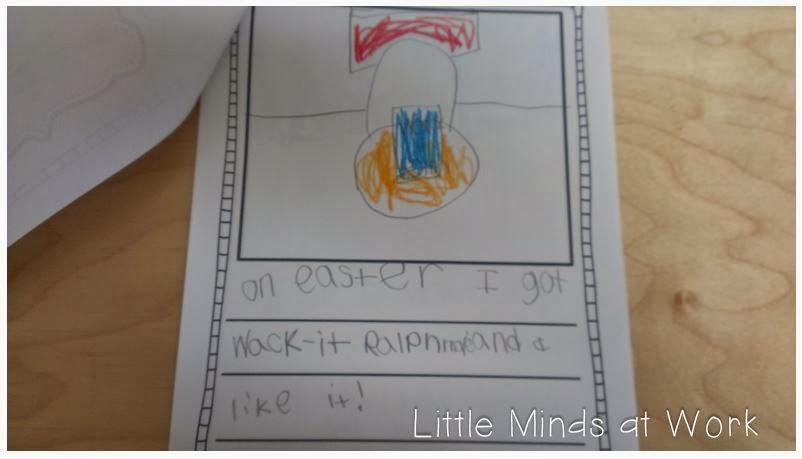
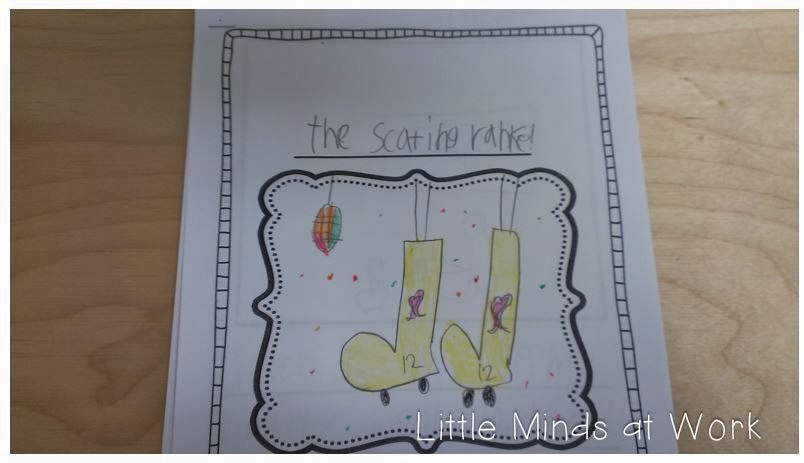
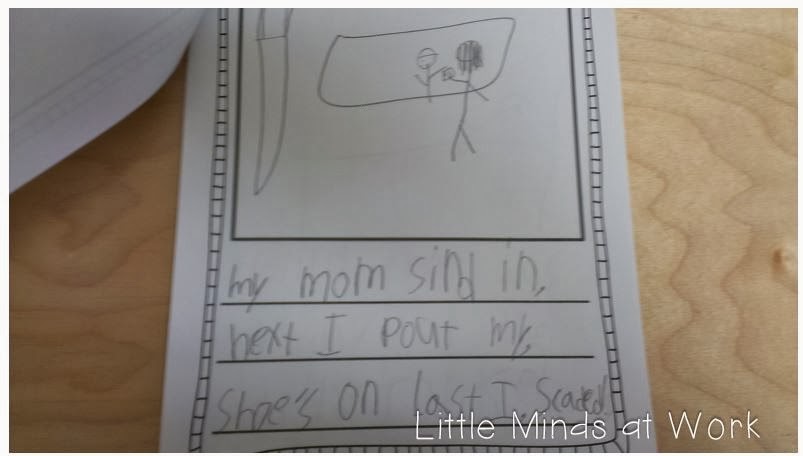
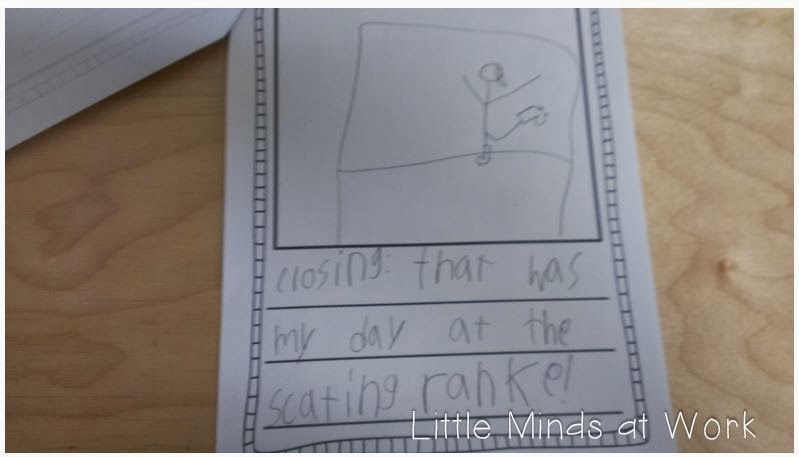
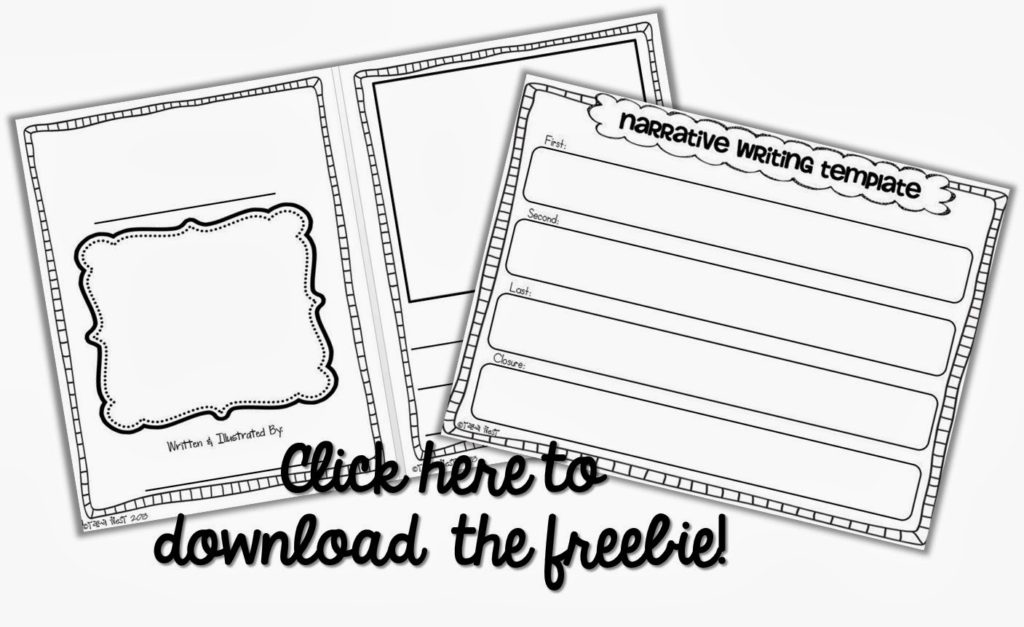
About the same time we move away from the sentence starter and we begin writing “books!” After students completed one page of writing they could select a new paper to start a new piece. I stress a lot to the kids the importance of all the pages fitting for a book. That they wouldn’t write about their favorite thing to do on one page and another page about a green monster. After a lesson on books we go to the ever so important author-ish lesson of planning our books page by page! Below you will see the kiddos meeting their their partners or writing helpers as they are discussing what they would put on each page of their books. PS. It was pajama day–just thought I would throw that out there! 😉
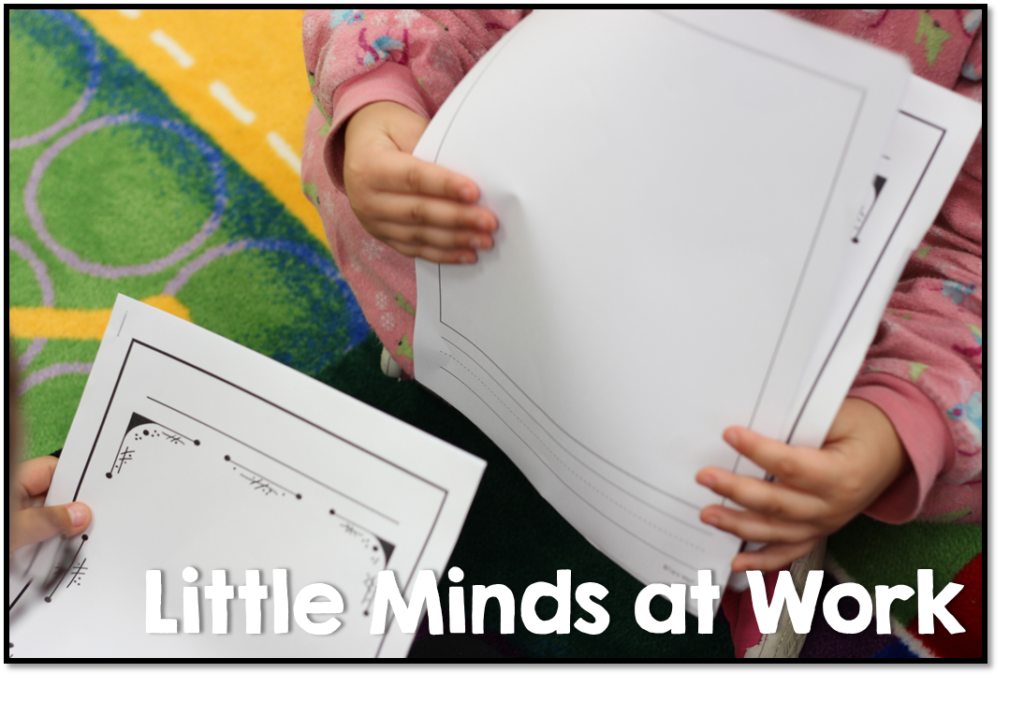
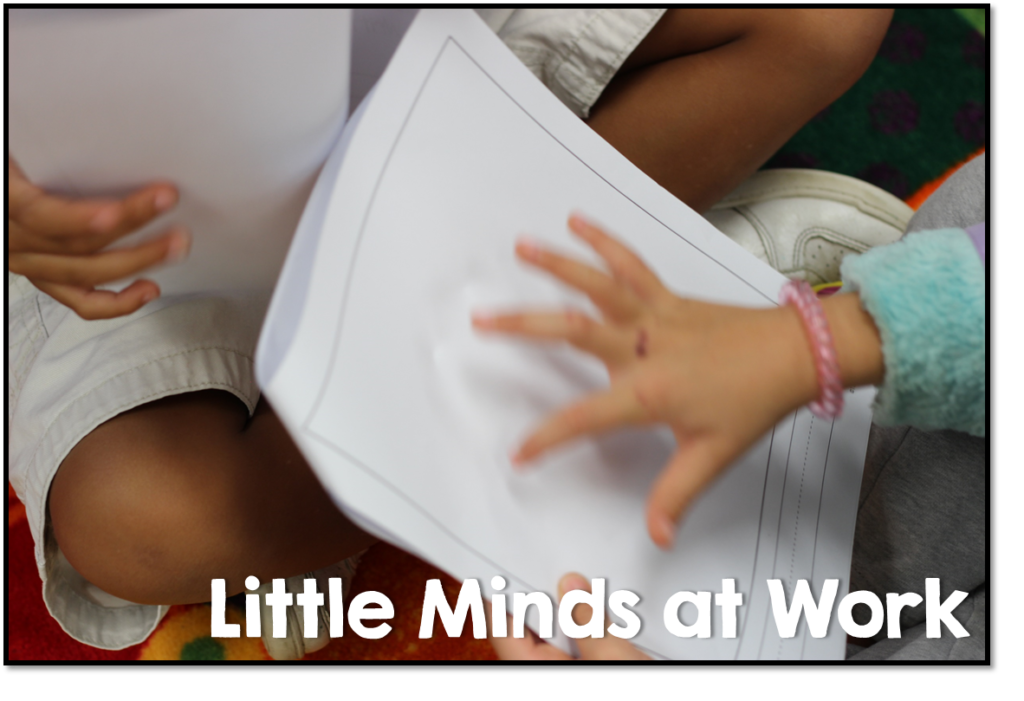

After a couple days of hard work on our books they were complete…
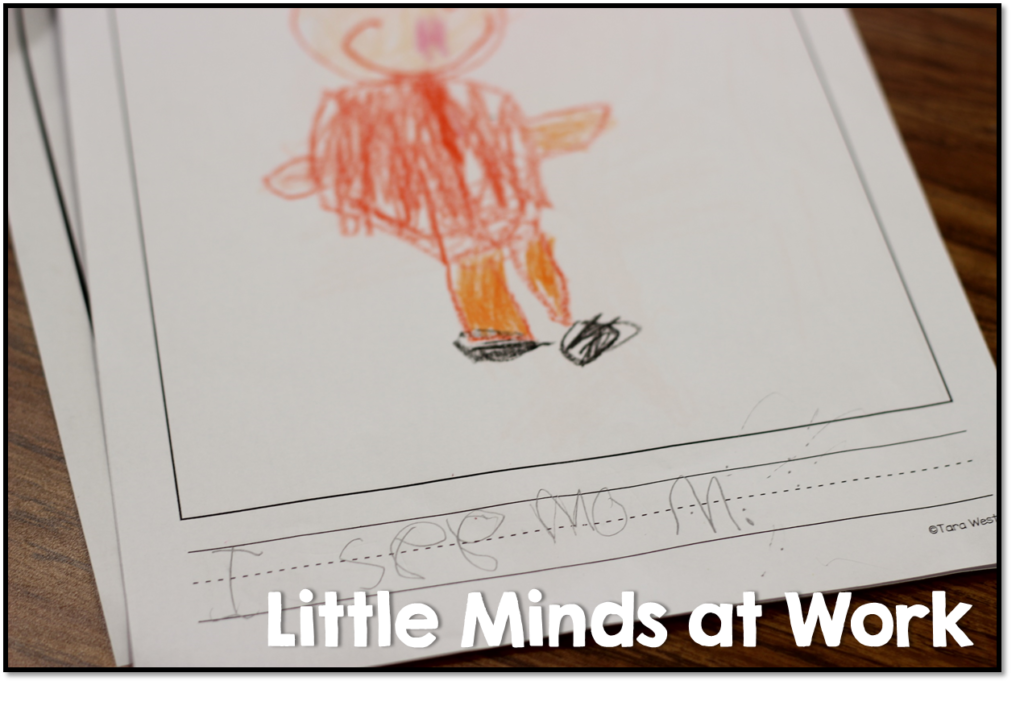
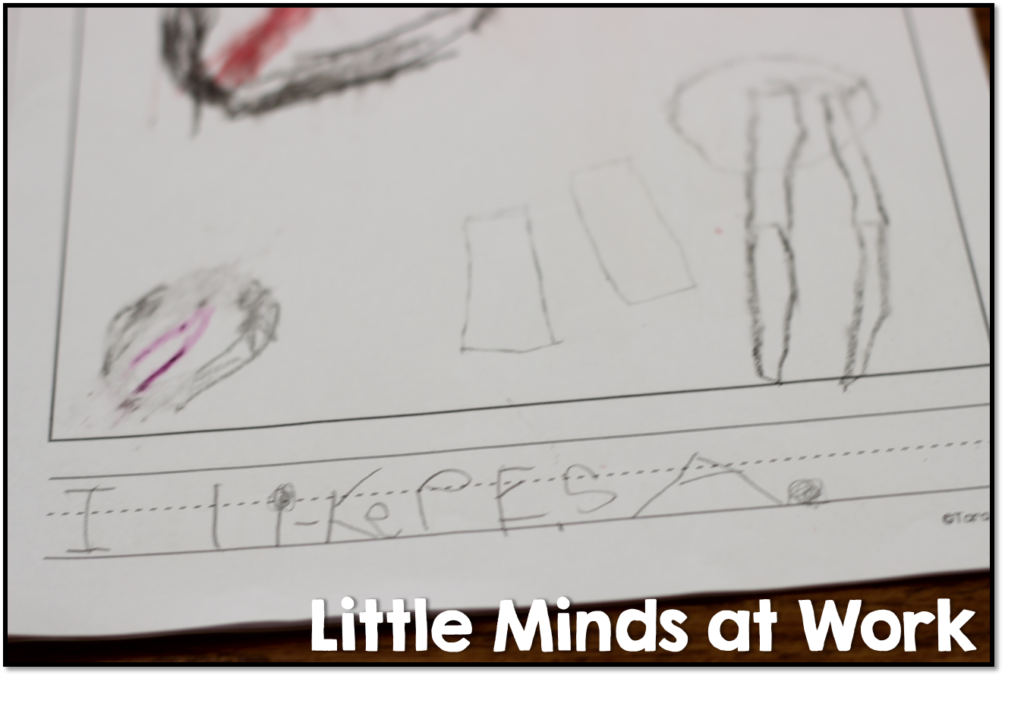
I like pizza.
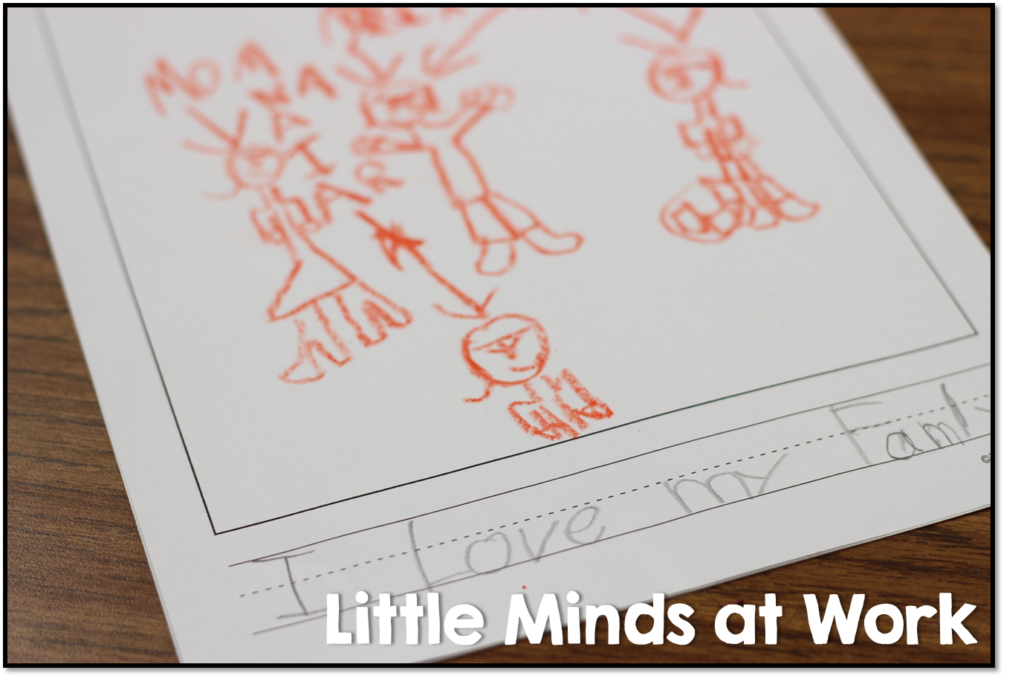
I love my family.
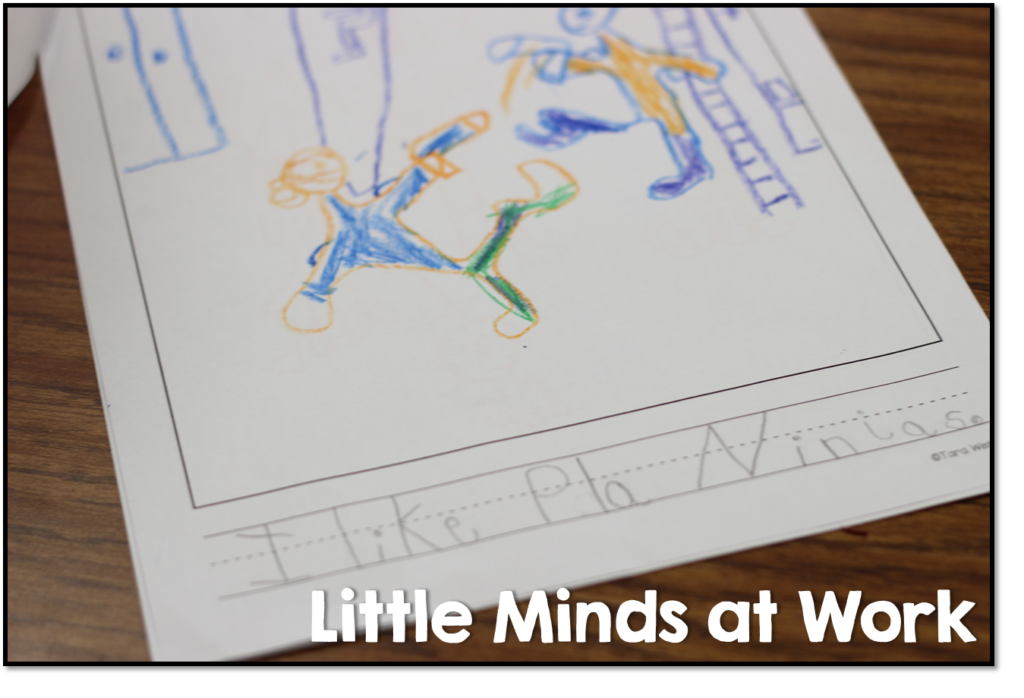
I like to play ninjas.
Also, here is the story booklet we used for this lesson! You can grab yours for free below!
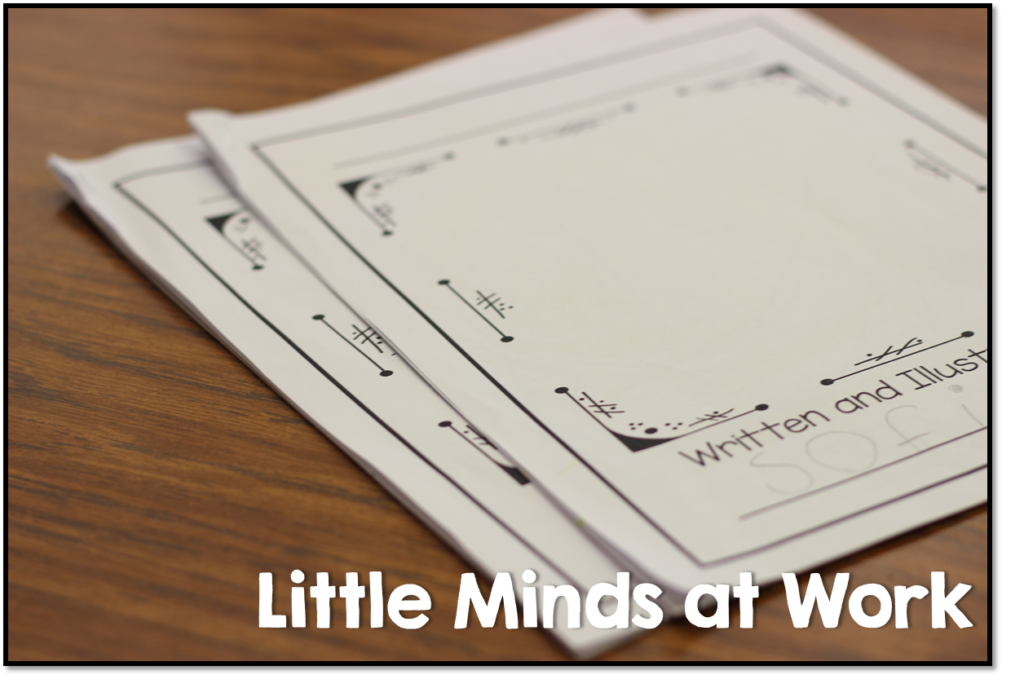

Another class favorite for writing narratives is the grown and changed booklets! This gives the kiddos a chance to share how they have grown and changed! They can write a page about when they were a baby, a toddler and now a kindergarten student! You can download this freebie template below!
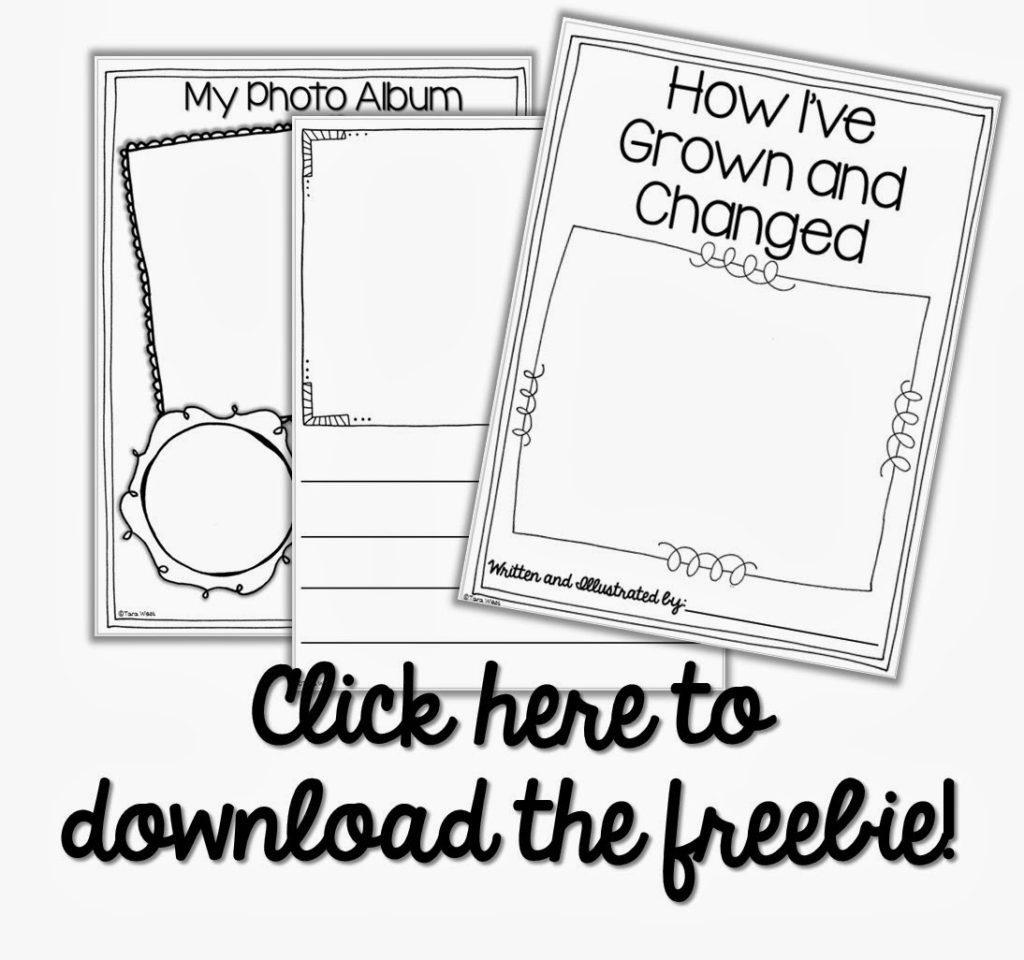
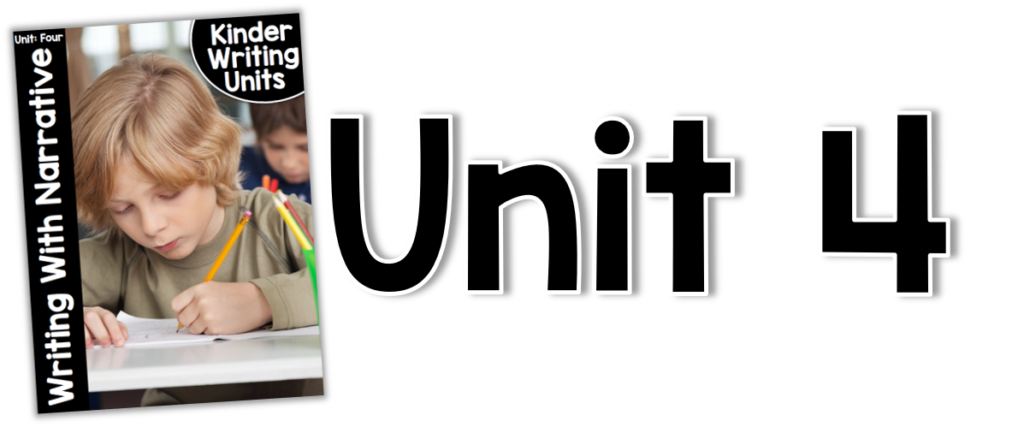
Now let’s talk about Unit 4 of KinderWriting! Unit 4 is all about Narrative writing! In unit 4, we take take the kiddos through the entire Narrative writing process! There is a week that we spend on mechanics and adding in adjectives/verbs into our stories as well!
Lesson 1: Narrators! Yes?
Lesson 2: Narratives Use Words Like I, Me and My
Lesson 3: Narratives Have a Setting
Lesson 4: Narratives Have a Problem & Solution
Lesson 5: Narratives Have a BME
Lesson 6: Starting With a Hook
Lesson 7: Ending With Feeling
Lesson 8: Sequential Words
Lesson 9: “Zoom” In Moments
Lesson 10: Using Details
Lesson 11: Writing With the 5 Senses
Lesson 12: Adding in Adjectives
Lesson 13: Adding in Verbs
Lesson 14: Words Have Families
Lesson 15: Mechanics
Lesson 16: Narrative Booklets
Lesson 17: Writing With a Rubric
Lesson 18: Writing Process- Draft
Lesson 19: Writing Process- Polish
Lesson 20: Writing Process- Publish
Below is a look at the mentor texts for this unit! You can see there are three specific to narrative writing and three for the mechanics focus!
In Unit 4, we discuss all of the parts of a narrative story!
Unit 4 posters to teach all of the important tasks!
Unit 4 rubrics!
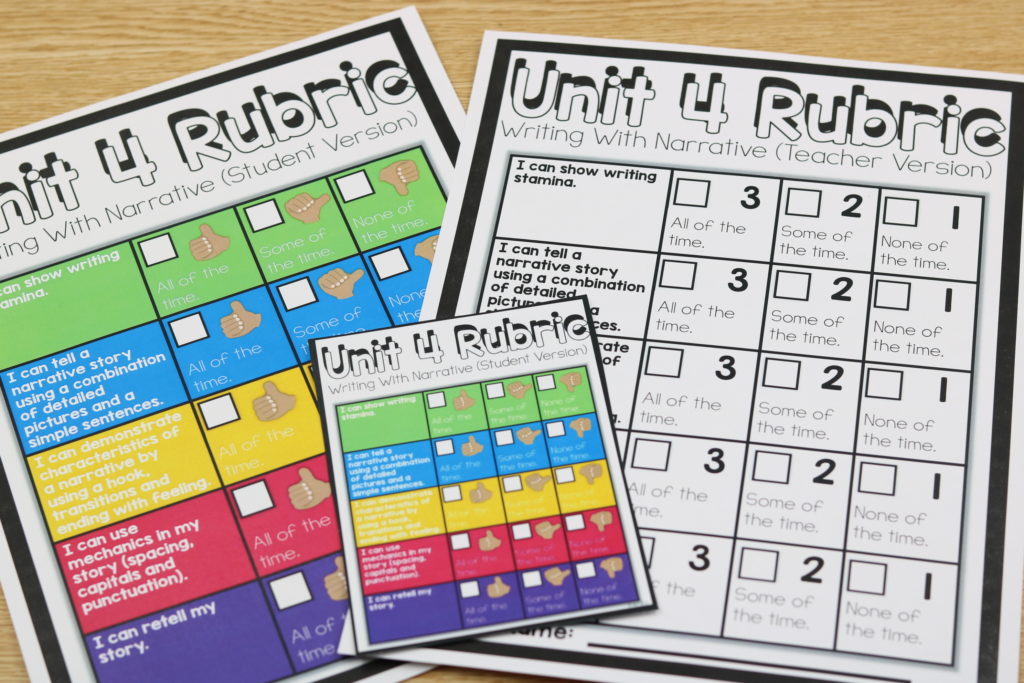
Student resource rings!
Unit 4 writing goals!
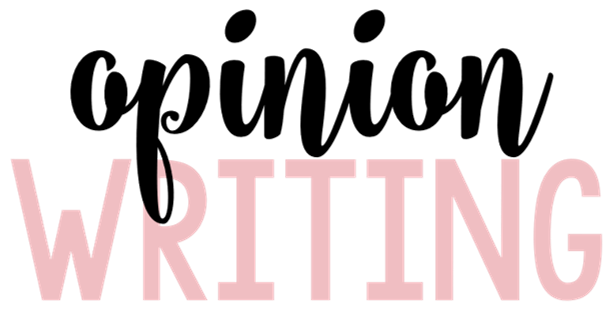
Now let’s talk opinion writing! I will discuss first some of my favorite opinion writing lessons over the years and then jump into opinion writing from KinderWriting! I love introducing the kiddos to the big word for our opinion writing, because! I always give a big hoopla over making sure we pronounce it correctly! This might not be an issue in other parts of the country, but here in Missouri it’s usually pronounced as “becuz!” So, after this talk they are correcting me the rest of the year if my pronunciation isn’t spot on! We start with some simple opinion writings! We also talked a lot about what an opinion is and how it’s okay to have a different opinion then our friends!
Download the freebie opinion writing starters below! I equipped the kiddos with the word because to ensure they were backing up their opinions!
We also write opinions on if we like the tooth fairy best or Santa Claus! Below students wrote their thoughts in the opinion graphic organizer! {Download the freebie below}

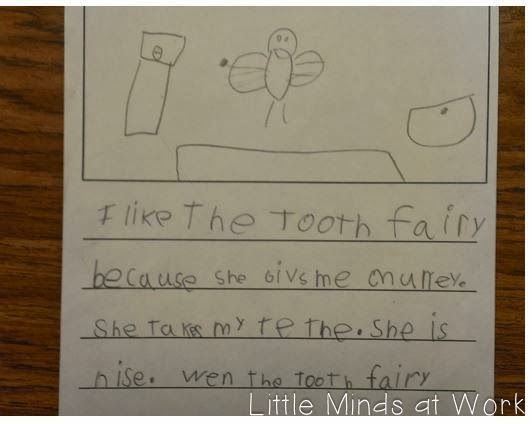
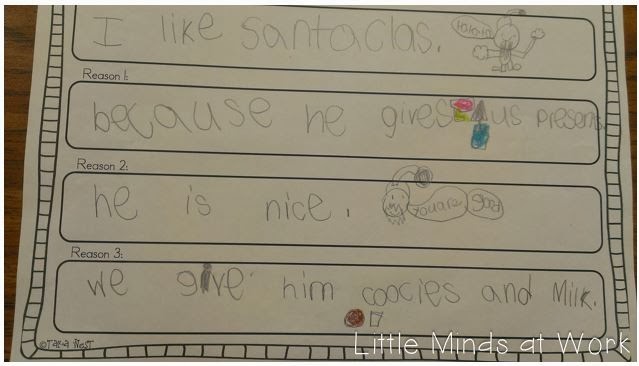
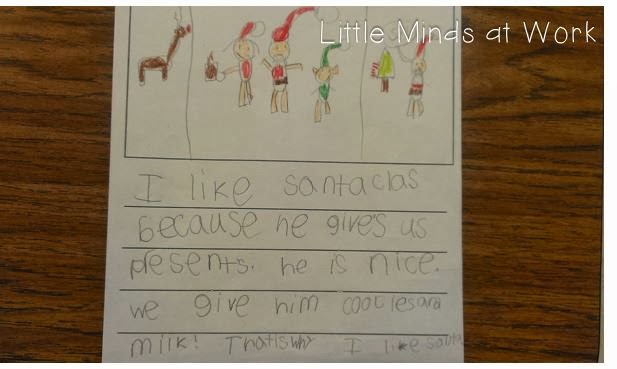
Another fun favorite is our book of opinions! This is also a freebie you can download below!
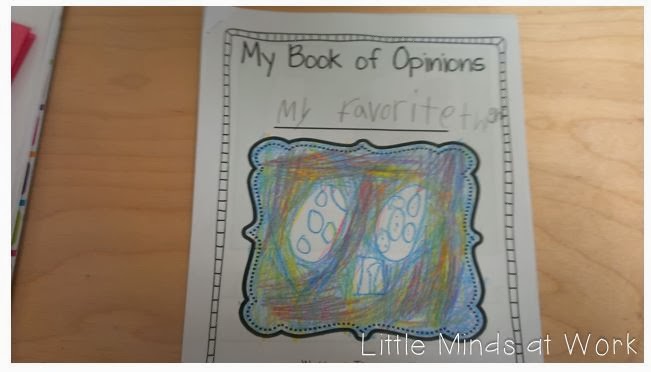

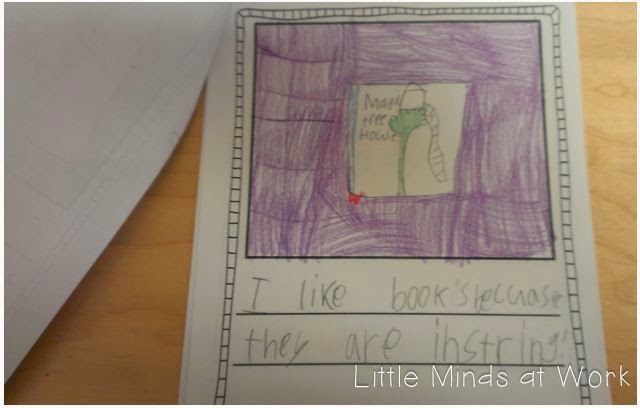
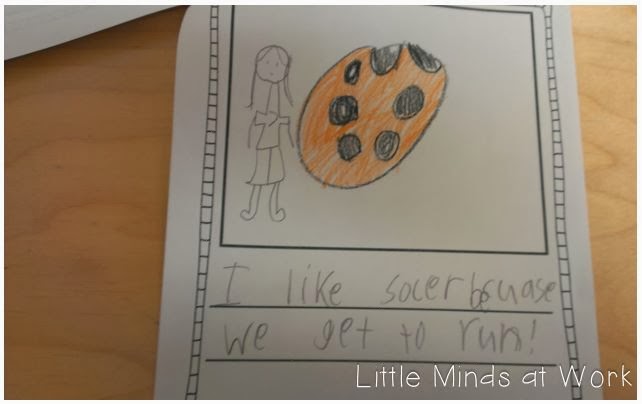
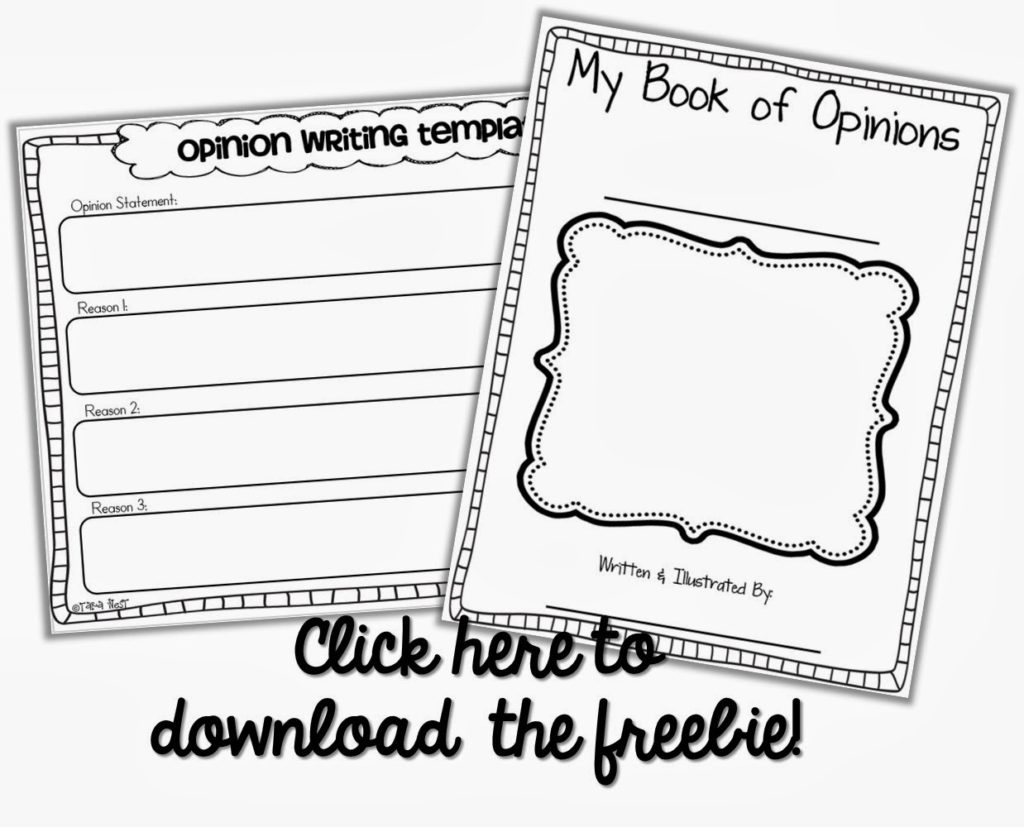
Another great activity for opinion writing goes along with the book The Best Part of Me! Students listened to the kiddos in the book tell what they like best about their body and why. Our kiddos then chose their favorite and wrote about it!
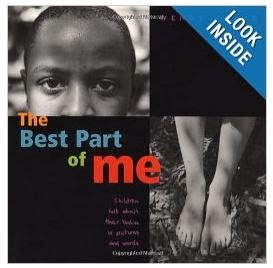
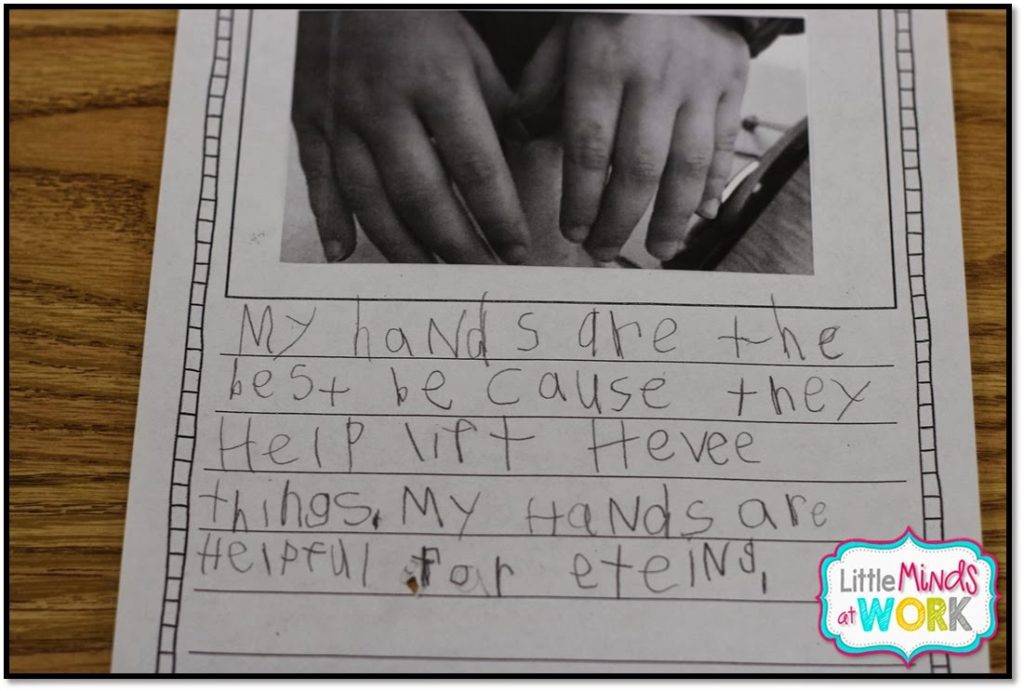
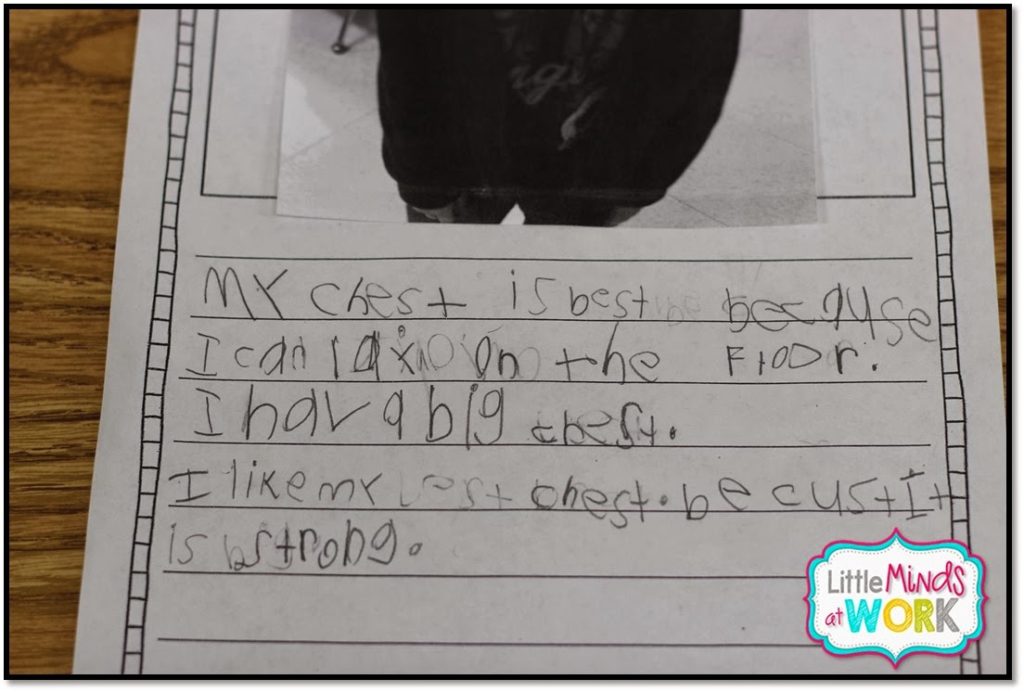
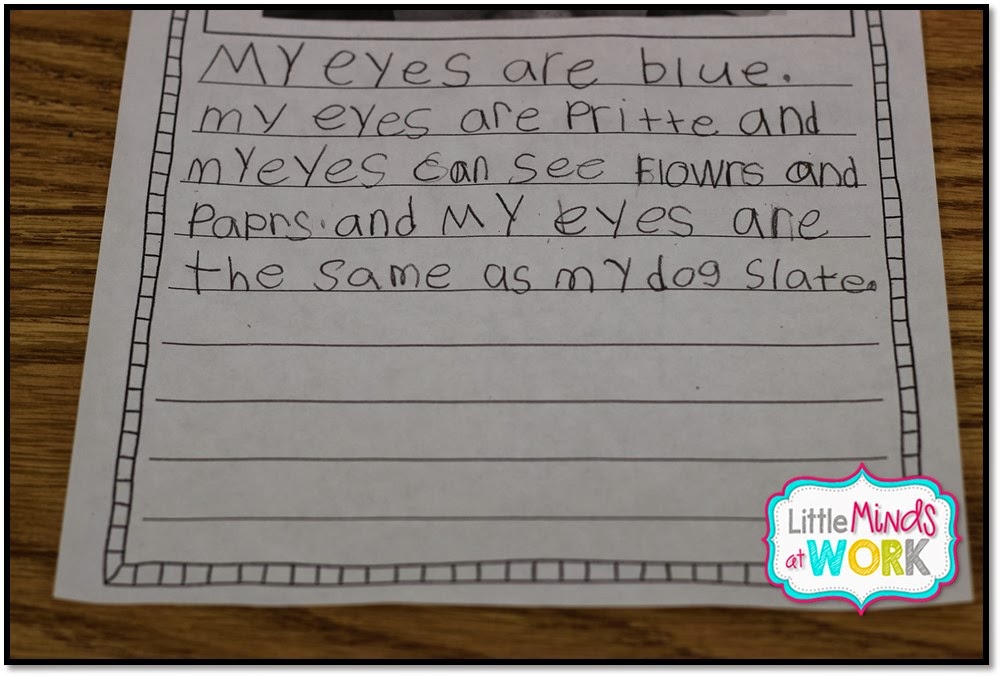
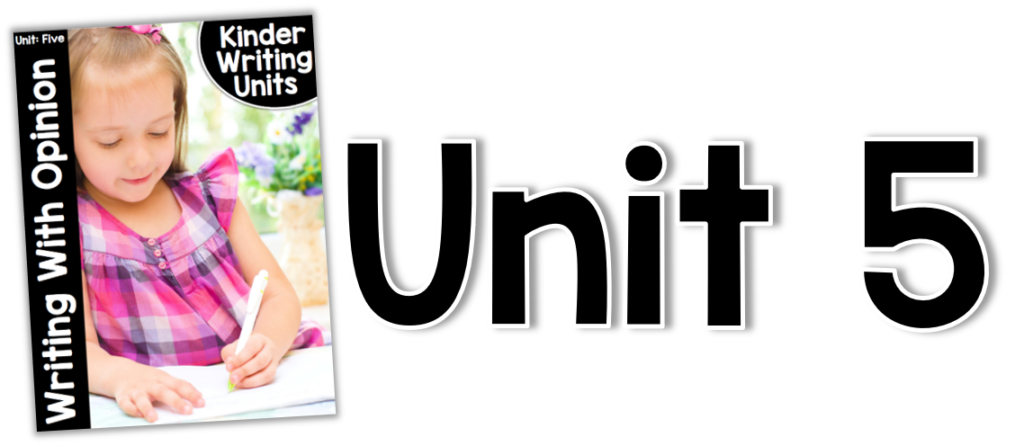
Let’s talk KinderWriting Unit 5 which is all about opinion writing!
Lesson 1: Opinionators! Yes?
Lesson 2: Giving Opinions
Lesson 3: Fact vs. Opinion
Lesson 4: Opinions Around Us
Lesson 5: Opinions on the Spot
Lesson 6: Using the Word Because
Lesson 7: Giving Two Reasons
Lesson 8: Using a Mentor Text
Lesson 9: Opinion Starters
Lesson 10: Defending an Opinion
Lesson 11: Using the Word Wall
Lesson 12: Spacing for Our Readers
Lesson 13: Setting Letters on the Line
Lesson 14: Reversals and Handwriting
Lesson 15: Sounds in Words
Lesson 16: Sharing Opinions
Lesson 17: Writing With a Rubric
Lesson 18: Writing Process- Draft
Lesson 19: Writing Process- Polish
Lesson 20: Writing Process- Publish
Like the other units, Unit 5 utilizes mentor texts to TEACH!
Unit 5 writing posters!
Unit 5 rubrics!
Writing goals are a must!
In unit 5, we work on fact vs. opinion!
A look at the writing lessons!
Unit 6-9 (Procedural writing, persuasive writing, fiction writing, informational writing) will all be added to the bundle soon!
A note about pricing!
Snag this bundle for 25% OFF . Each of the writing units sells for $10 each, a total of $90. You can view KinderWriting HERE or clicking below!
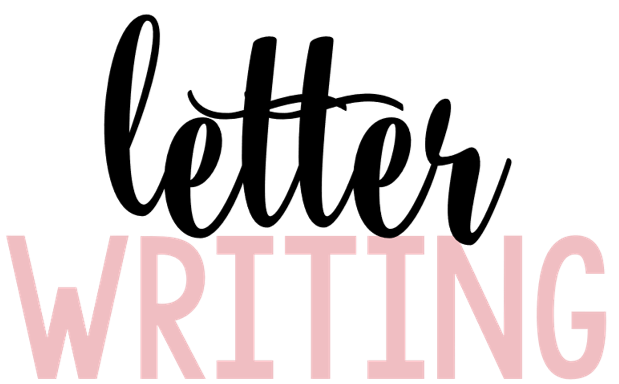
Now let’s talk letter writing! Depending on your district/standards, you might also be required to teach letter writing!
I wanted to share with you a fun idea for teaching letter writing! We read Dear Mr. Blueberry, a super cute book for letter writing! I really want the kiddos to understand the three main parts of a letter… so I created this fun and interactive writing template for them! They color their little girl or boy and then cut along the lines to form three flaps for the greeting, body, and closing! They are then able to open each flap one at a time and write the parts of the letter!
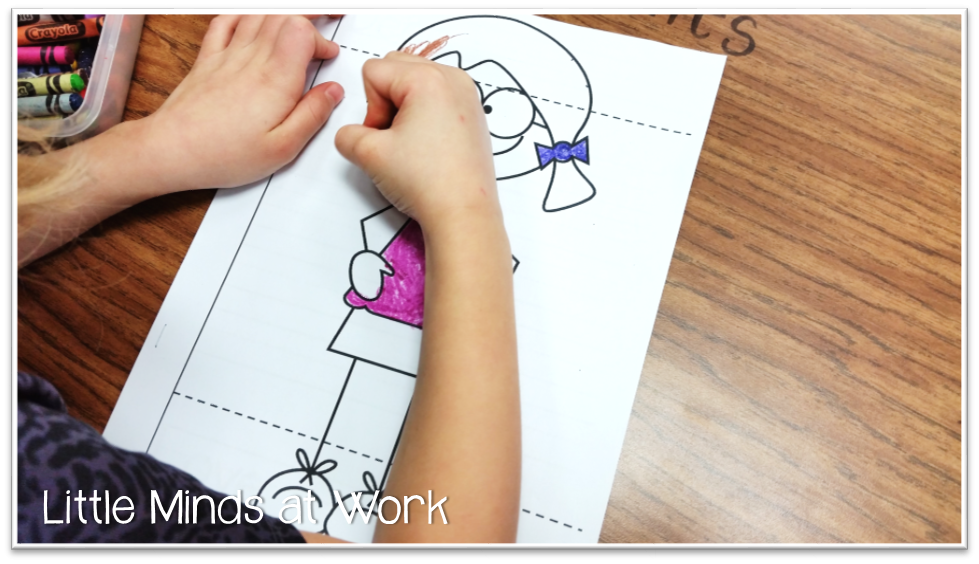
We talk to about only cutting on the dotted line.
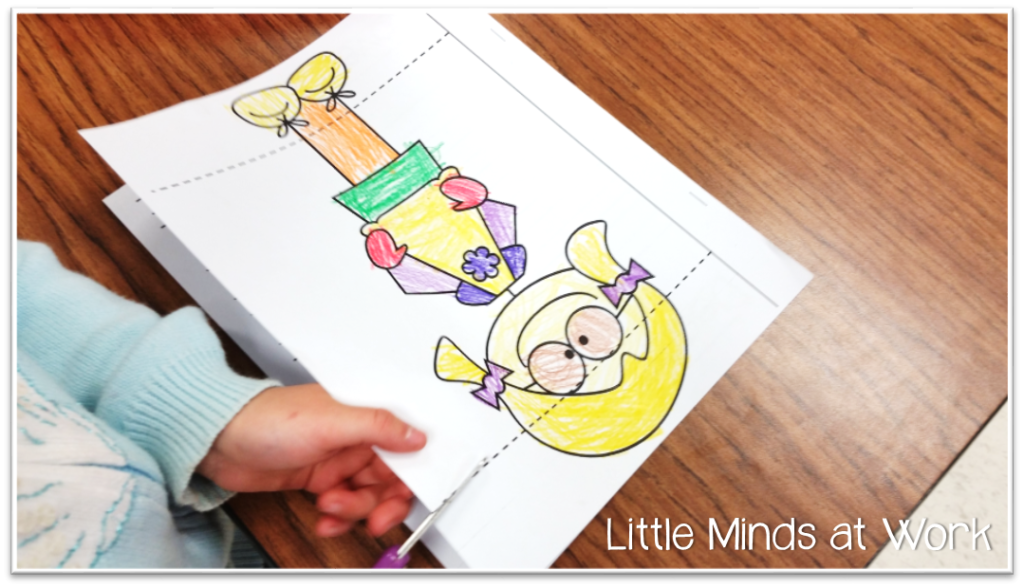
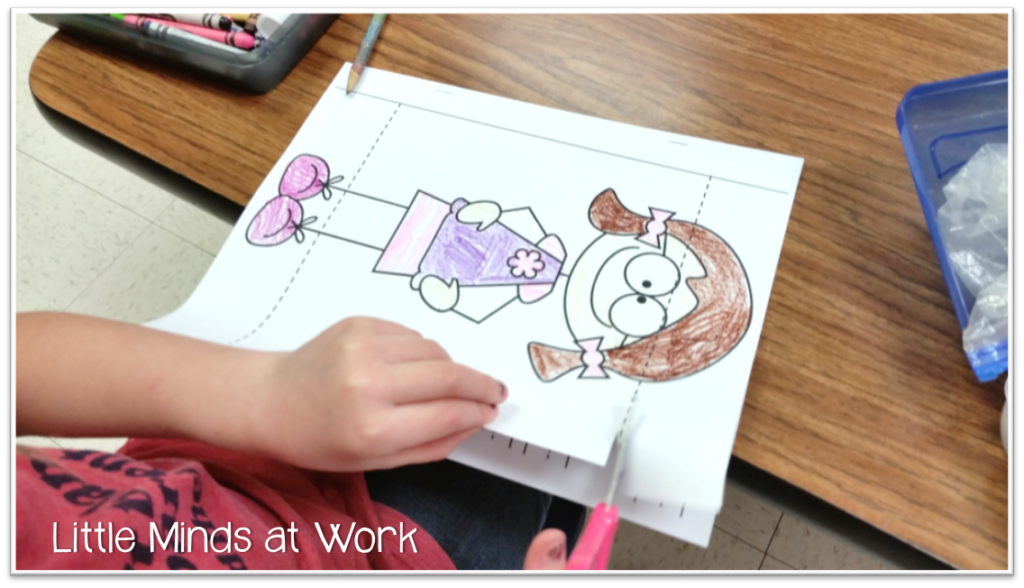
The kiddos choose a friend or family member to write to.

And VOILA! Toooooo cute….

If you would like to snag this interactive letter writing activity, the parts of a letter poster, and additional writing templates click below for the freebie! Enjoy!
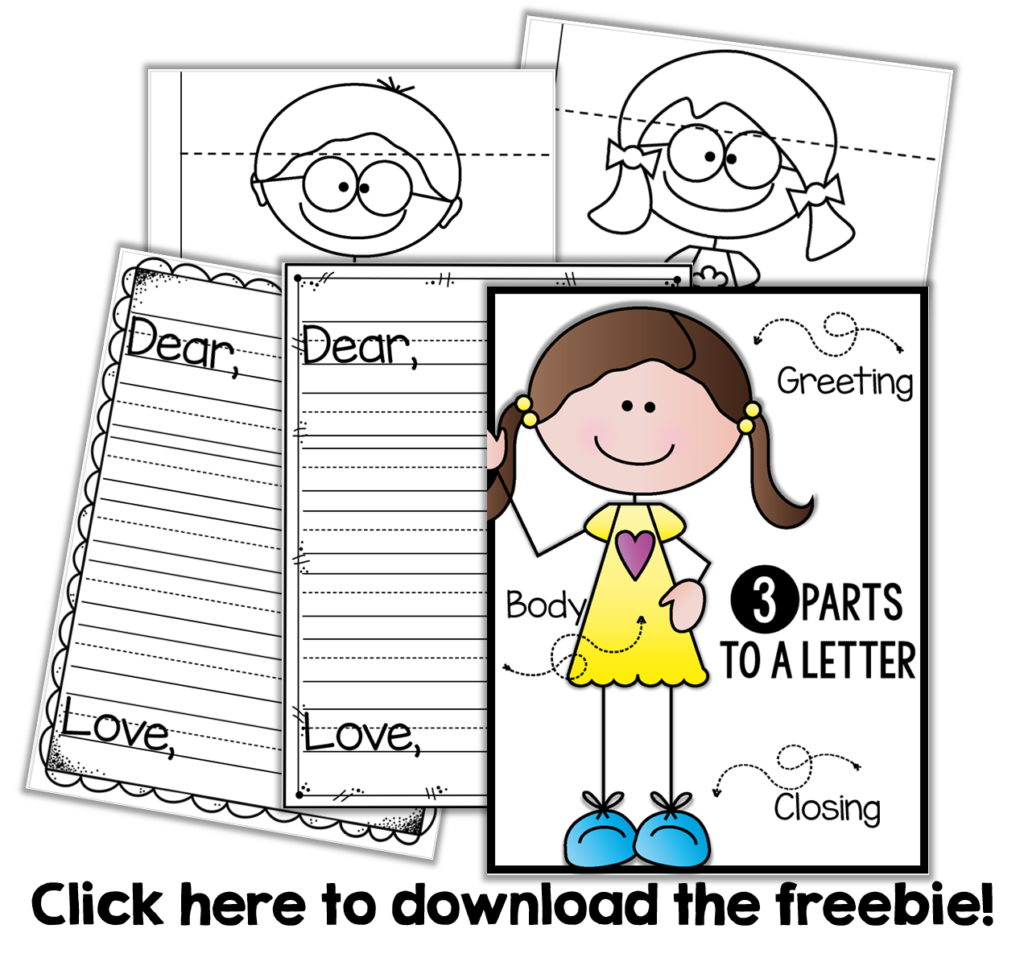
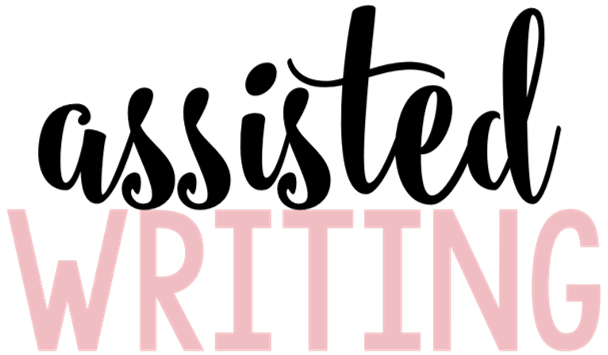
Now let’s talk a little about assisted writing! I like to use assisted writing sheets mainly during independent writing times! This would be for example during daily five work on writing! My kiddos can’t get enough of my writing story starters! I use them in their work on writing folders and as a choice for early finishers! I have found these story starters to work absolute wonders in my classroom! What I love about the story starters the most is their ability to assist the students when working independently. Students WANT to work without the assistance of their teacher, but sometimes they just don’t know how. This can be especially true in writing. Students of course would love to write a story of their own, but they at times don’t know what to write about. The story starters take that out of the equation. Students simply look at the picture given to them and start to write their story!
I like the spider and web.
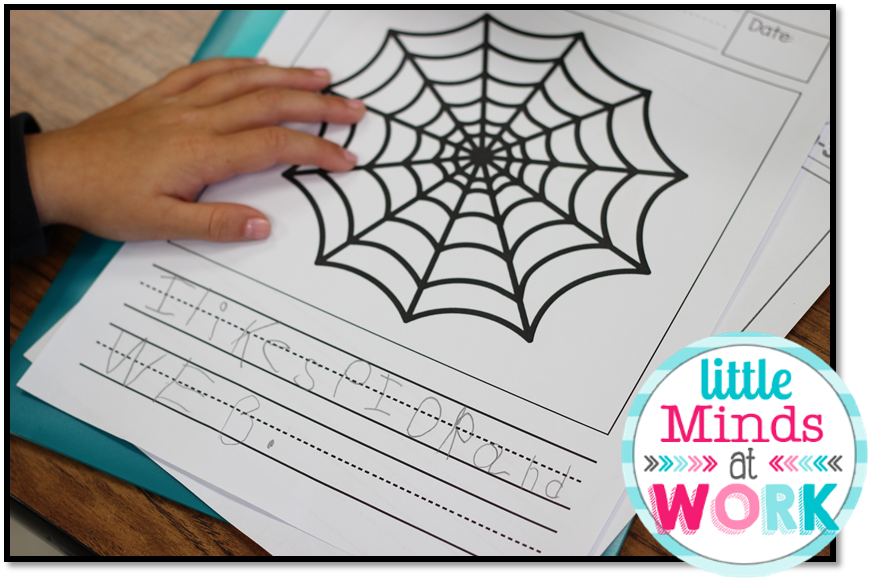
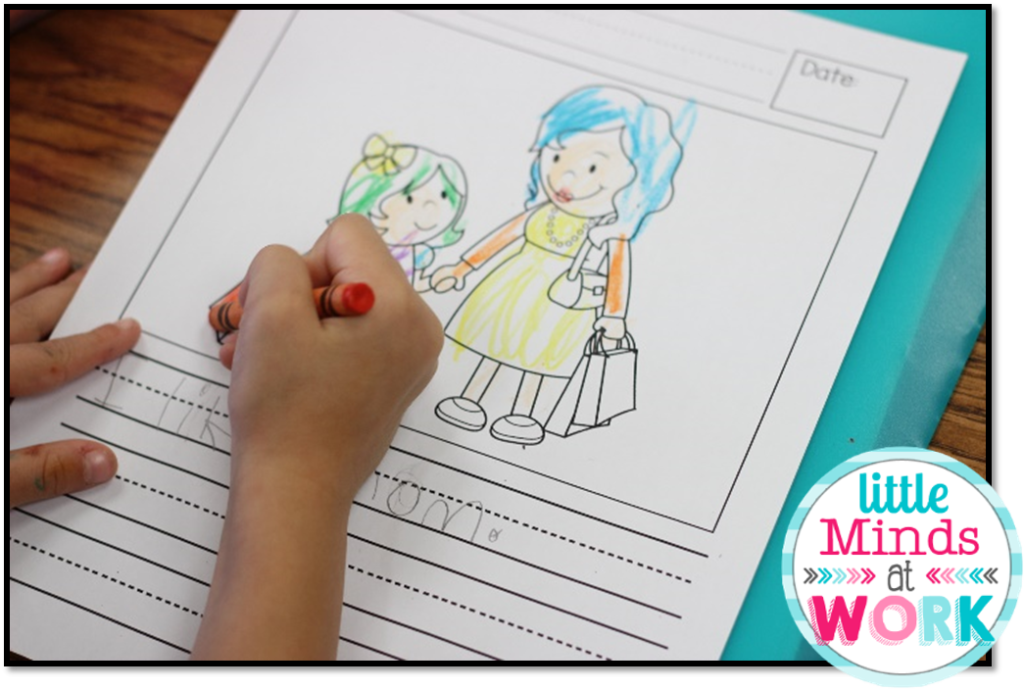


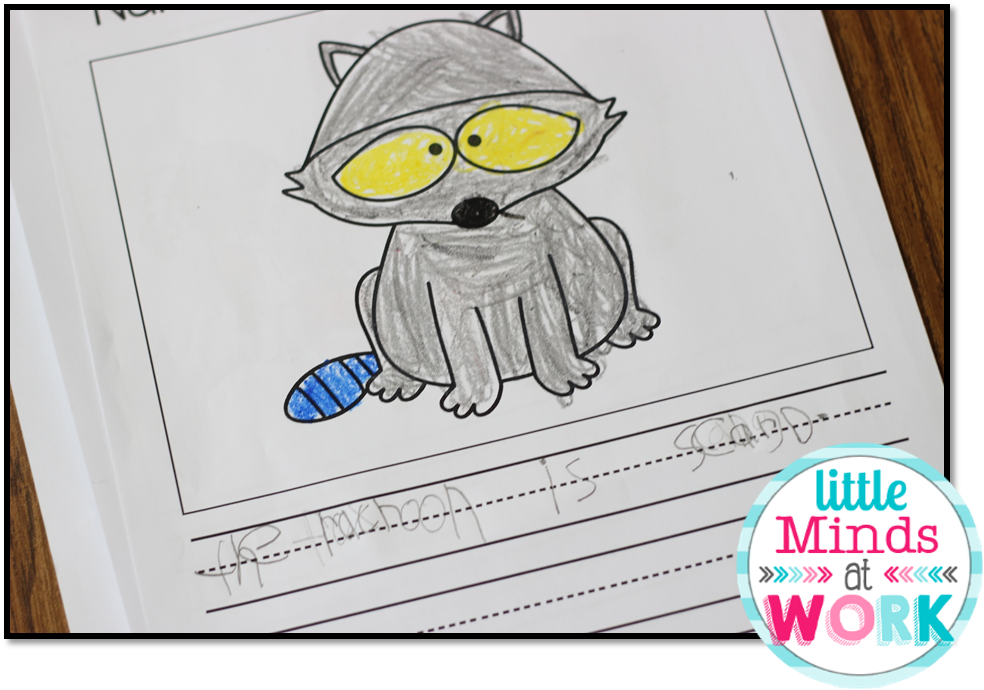
I like mom.
All of the people are at the table.
I like McKenna.
The raccoon is scared.
This resource can be used alongside your whole group writing instruction, during independent student work time {work on writing}, or a supplement to your writing curriculum. Below are some snapshots of how I “stuff” these writing starters in my students’ work on writing folders!

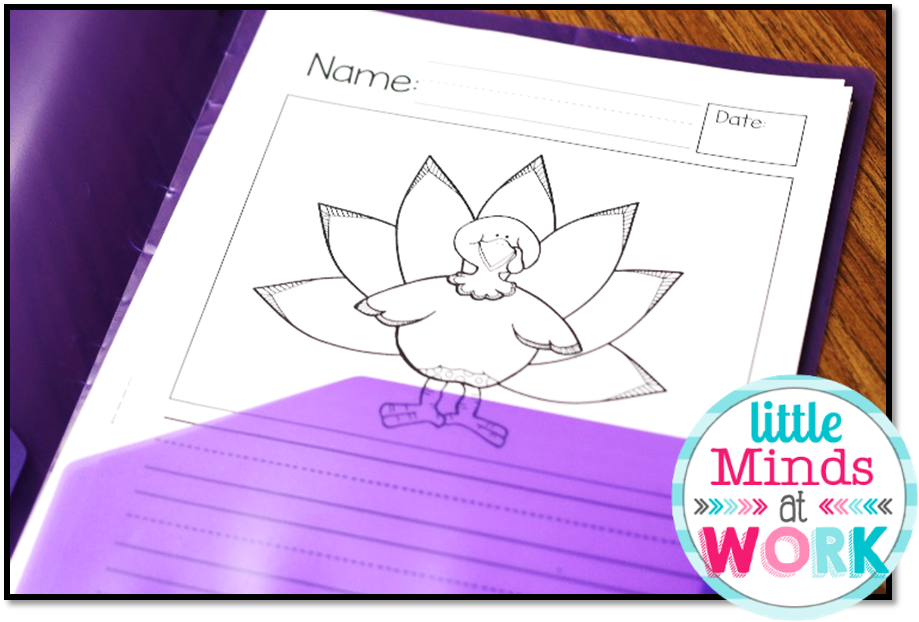
The writing story starters comes in a pack of 150 with some focusing on; seasons, kids, animals, and then a selection of variety starters. You can download a free sample to try out with your kiddos by clicking below! Once on the TpT site click on the “preview” to download three free starters!
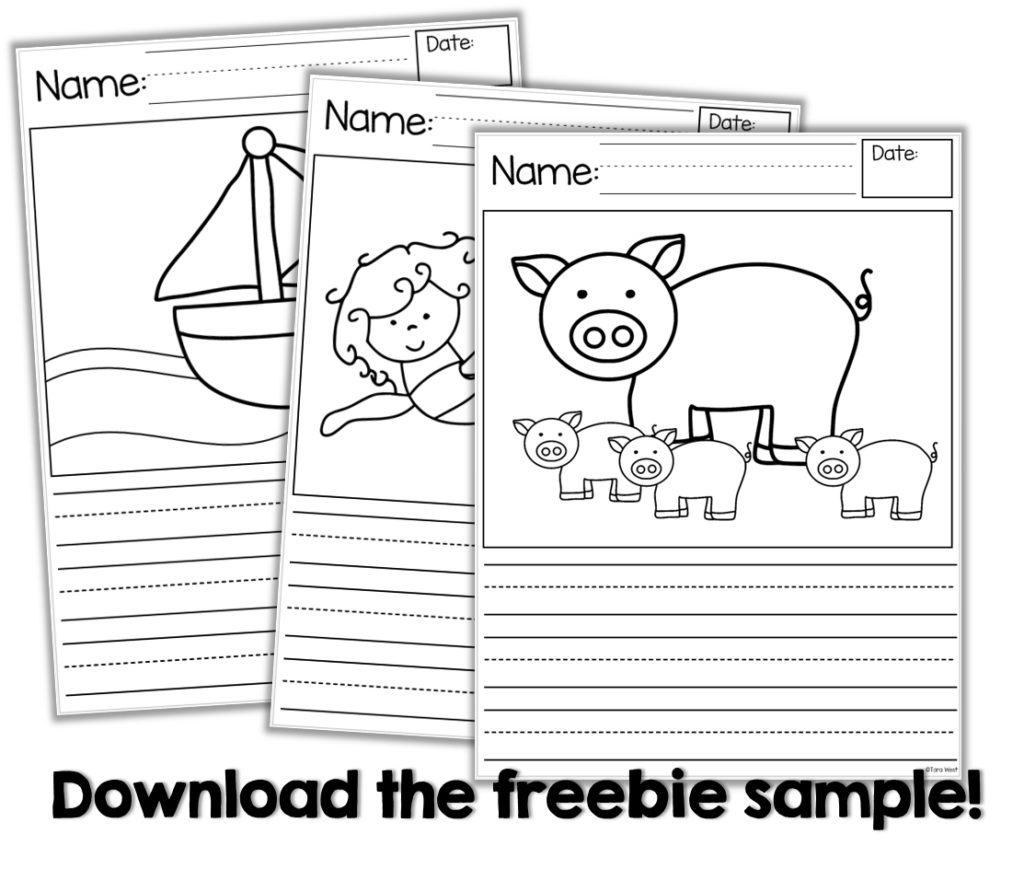
The packet is discounted for the remainder of the week if you are interested!
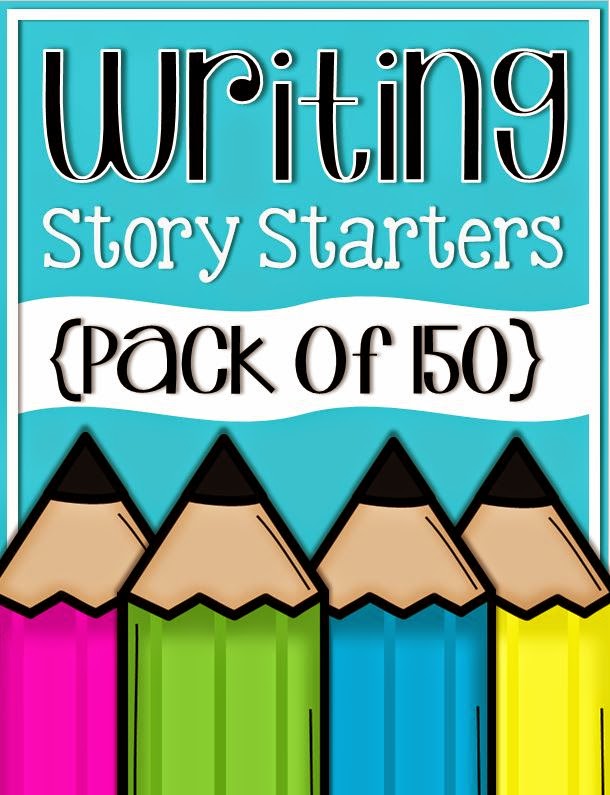
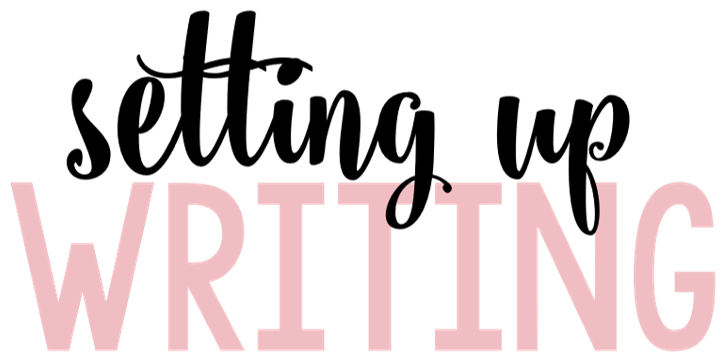
I put together these adorable writing folders together. Everyone needs a writing folder…I mean all writers need a place to keep their ‘goods,’ right?
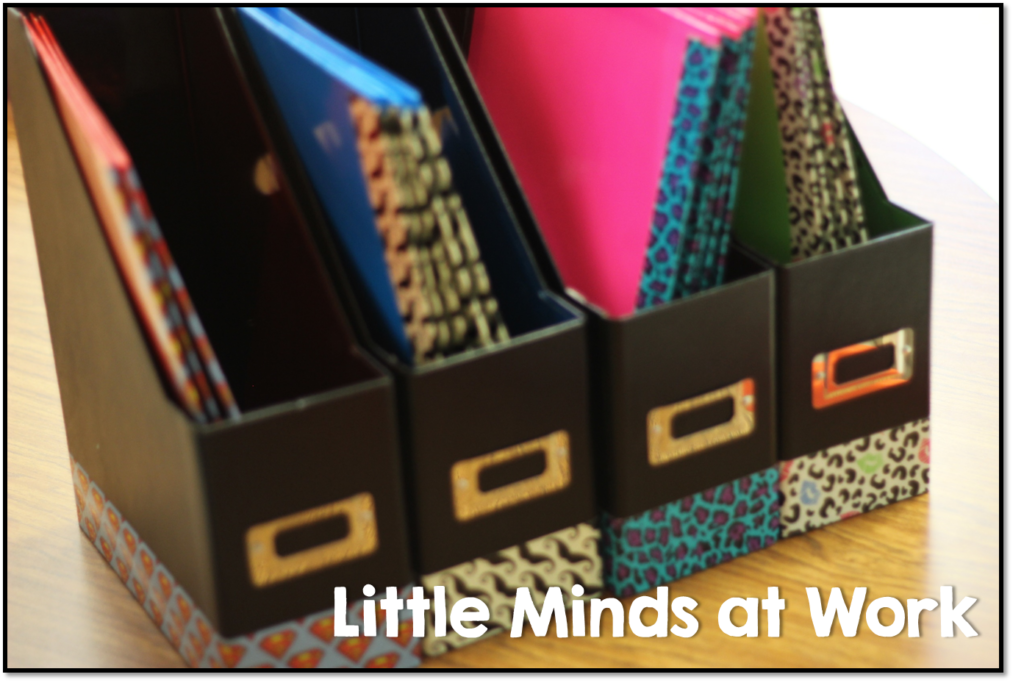
Also, during this time I supply each kiddo with their own ABC chart and sight word list for their folders! You can download this freebie sight word list below! 🙂 The pictures are for easy referencing…Johnny you are looking for the word wwwwweeee. In the heart column find the word that starts with /w/.
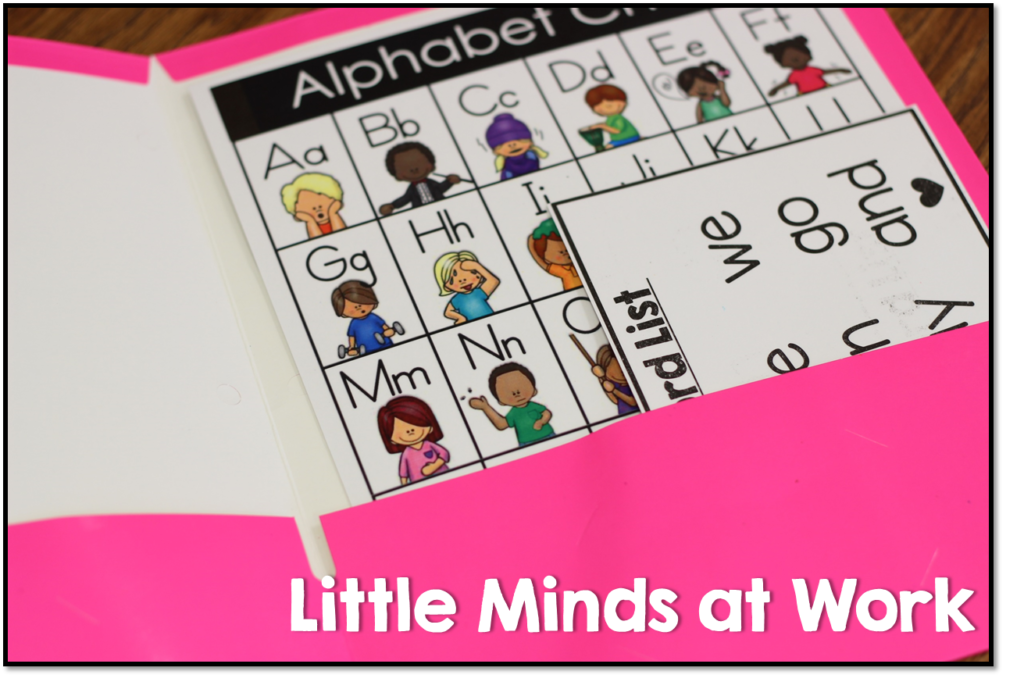
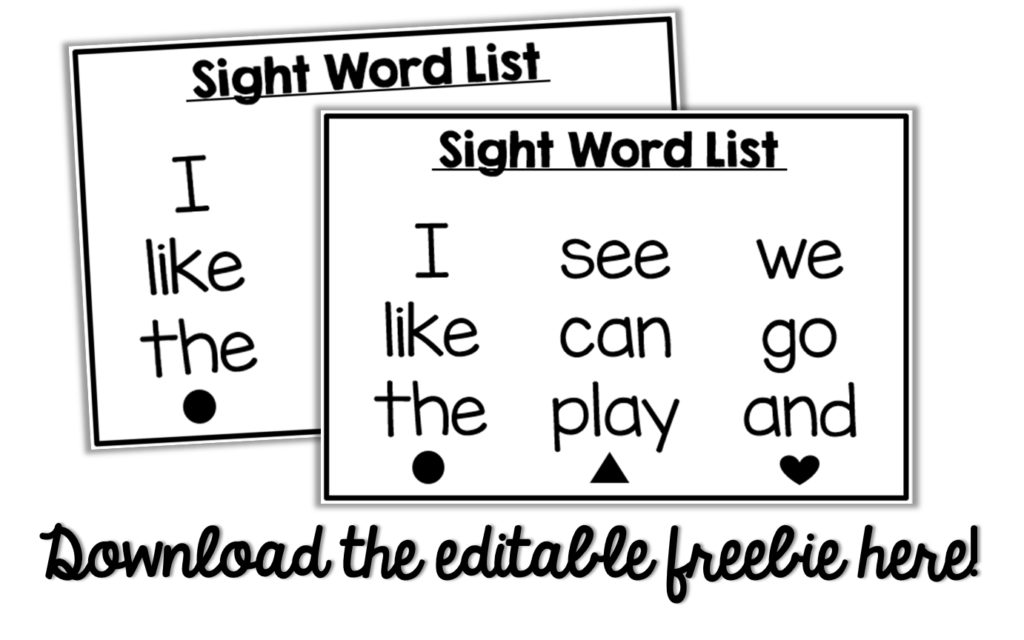
I also made these writer’s checklists for my kiddos! I laminated them and they have them in their writing folders. They have helped a lot. When I am conferencing during writing we are referencing these checklists and the kiddos are self-checking! This is also a freebie! Click the image to download or HERE!
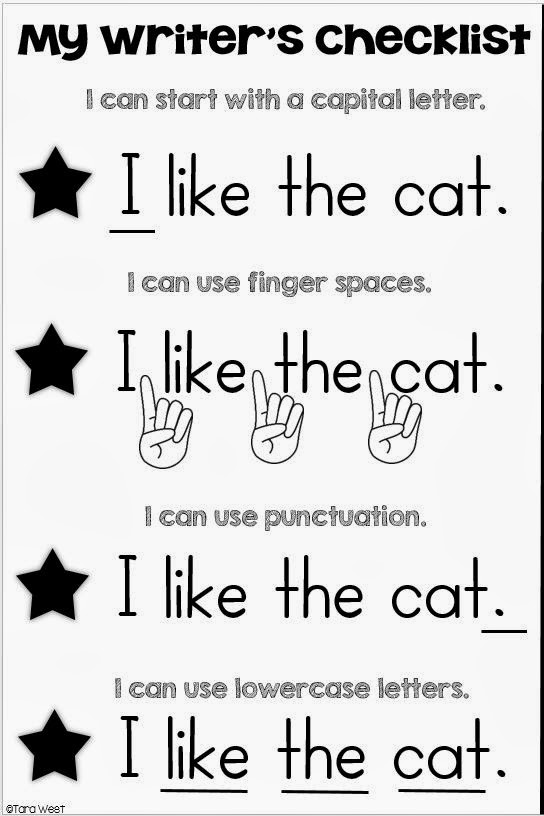
You can download an additional set of freebie writing posters HERE or clicking the images below!
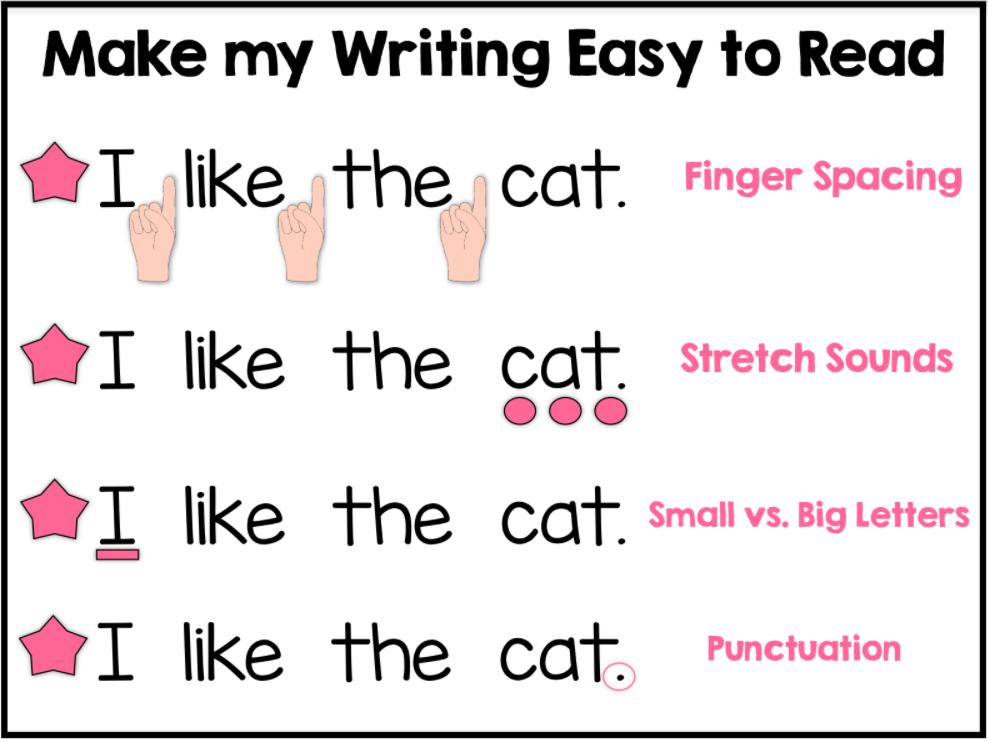
Well I hope you enjoyed these freebies! Leave me some love if you were able to use any of these and feel free to pass them along! 🙂
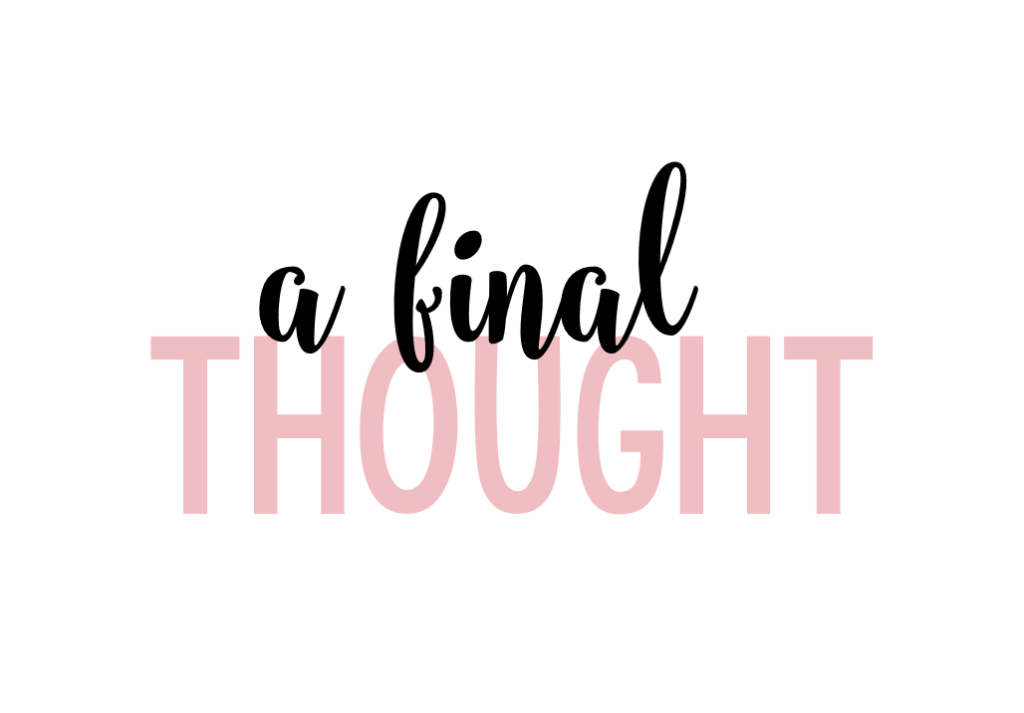
I wanted to share some final thoughts with you! I hope this blog post left you with a few ideas and writing lessons you would want to implement into your classroom! I have been asked by PreK and 1st grade teachers if the KinderWriting units are applicable! Well here’s the thing.. you’ll notice that in order to brand my items, I name them cutesy names like Kinder_ and Firstie_… this is simply to streamline my packets and they can totally be used for other grade levels! I have Pre-K teachers that are using units 1-3 in their classrooms this year. Firstie teachers.. the units can work for you as well– especially those genre-based units!
If you’re unsure if KinderWriting would work in your classroom, I recommended that you take a moment to read TEACHER feedback here! There is no one that will tell you more accurately than fellow teachers!
Snag this bundle for 10% OFF . Each of the writing units sells for $10 each, a total of $90. You can view KinderWriting HERE or clicking below!

